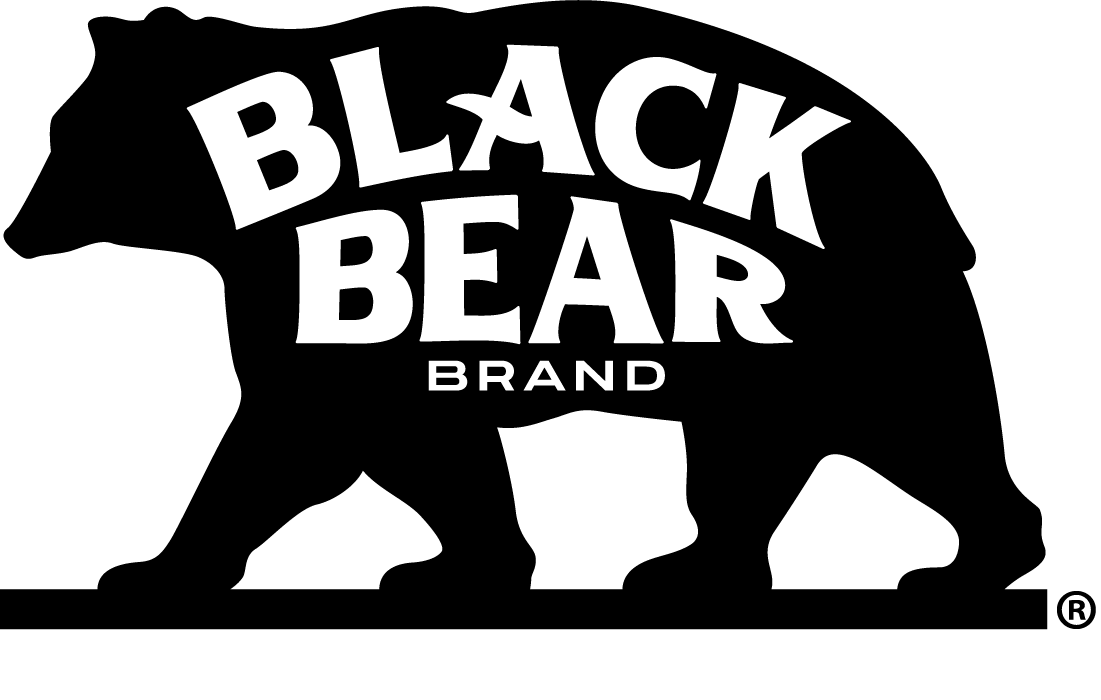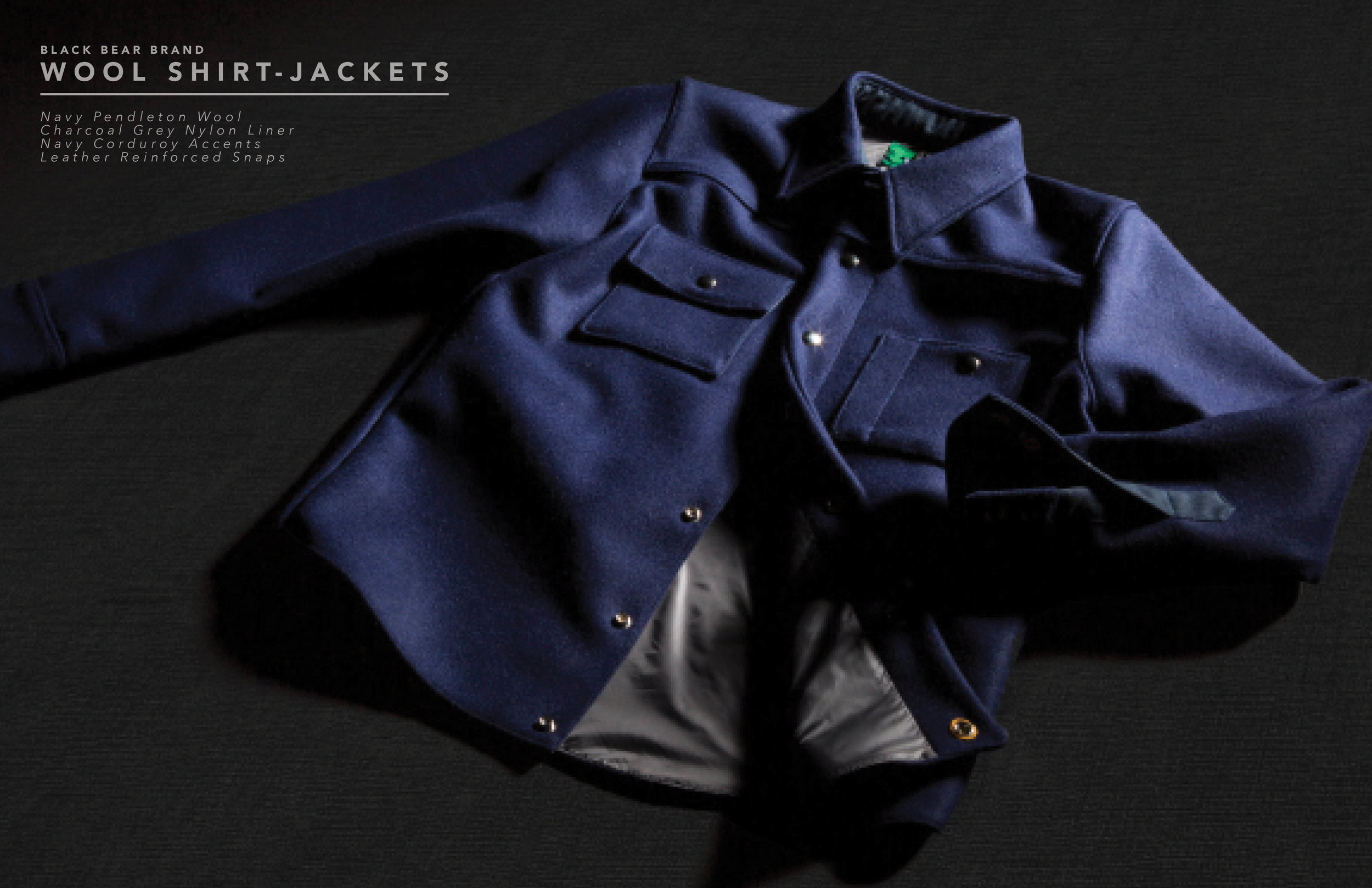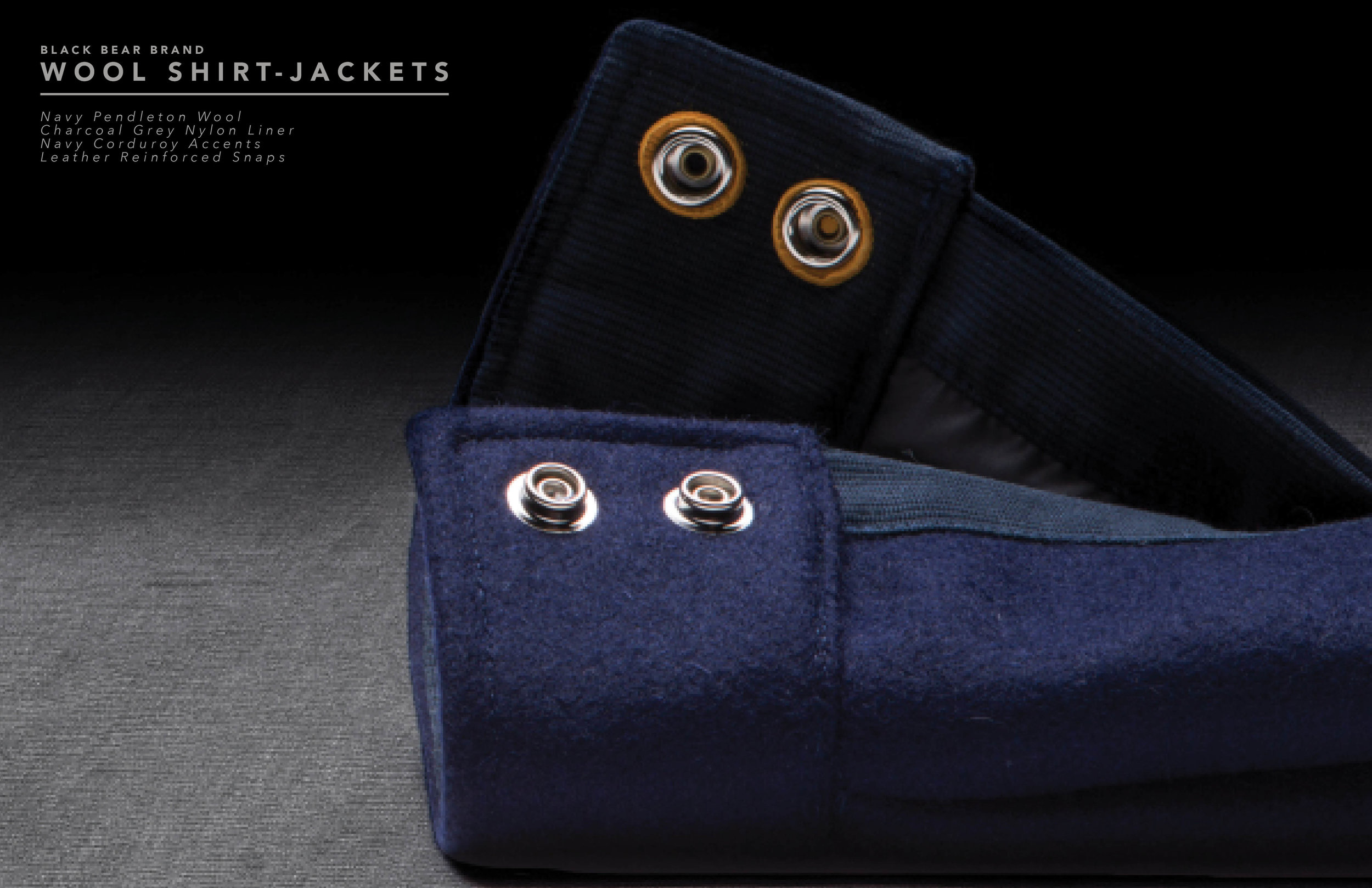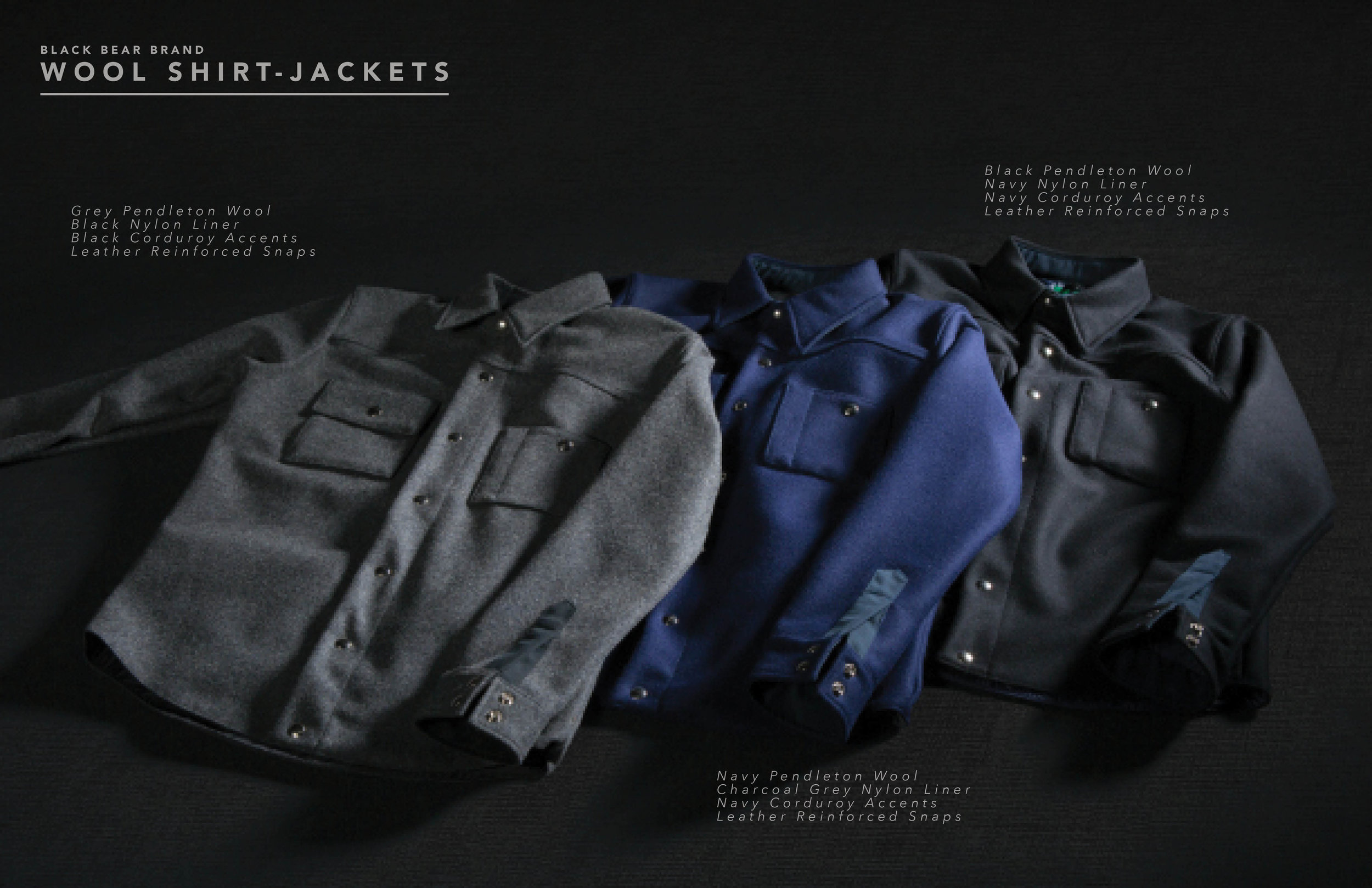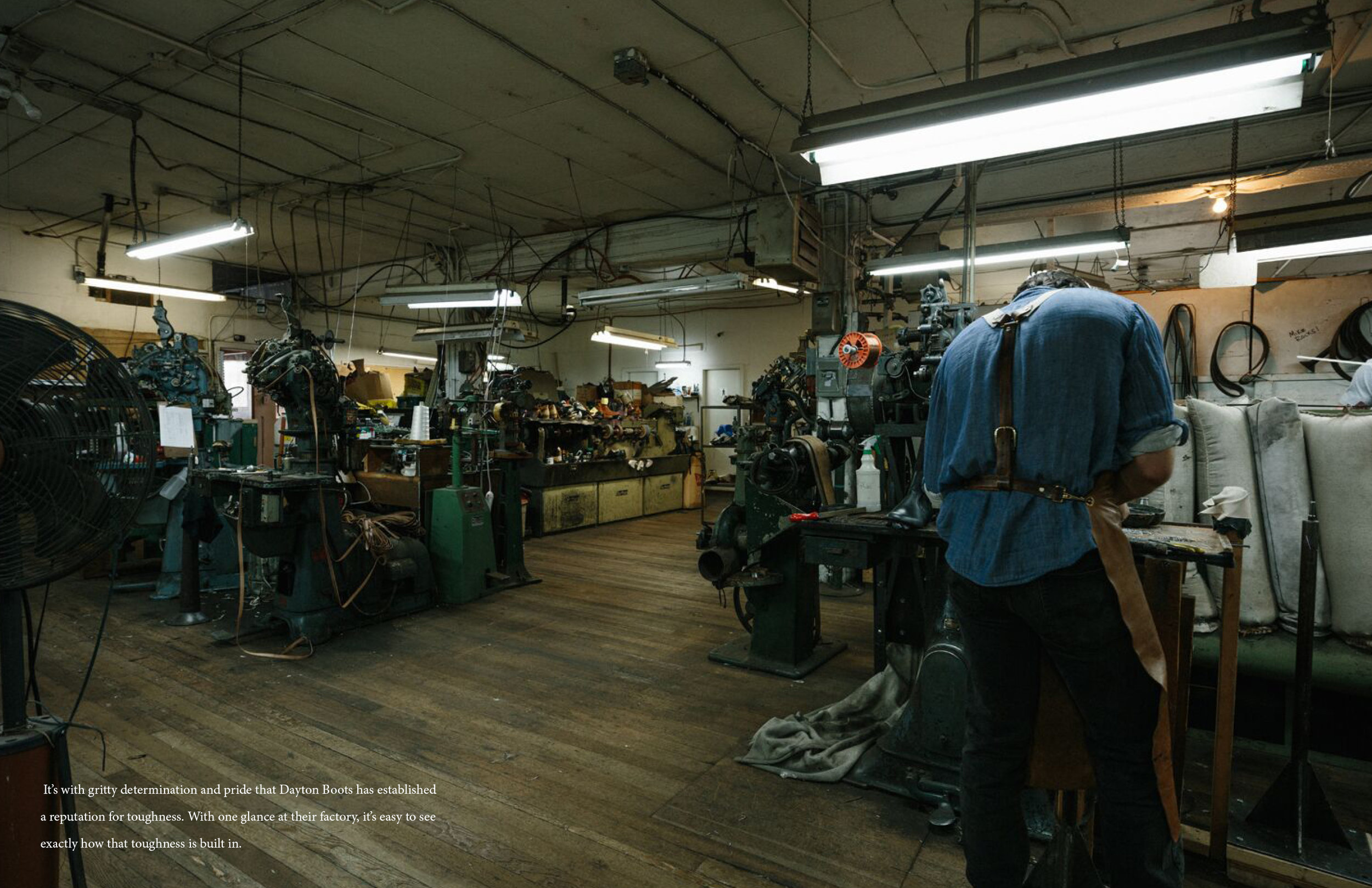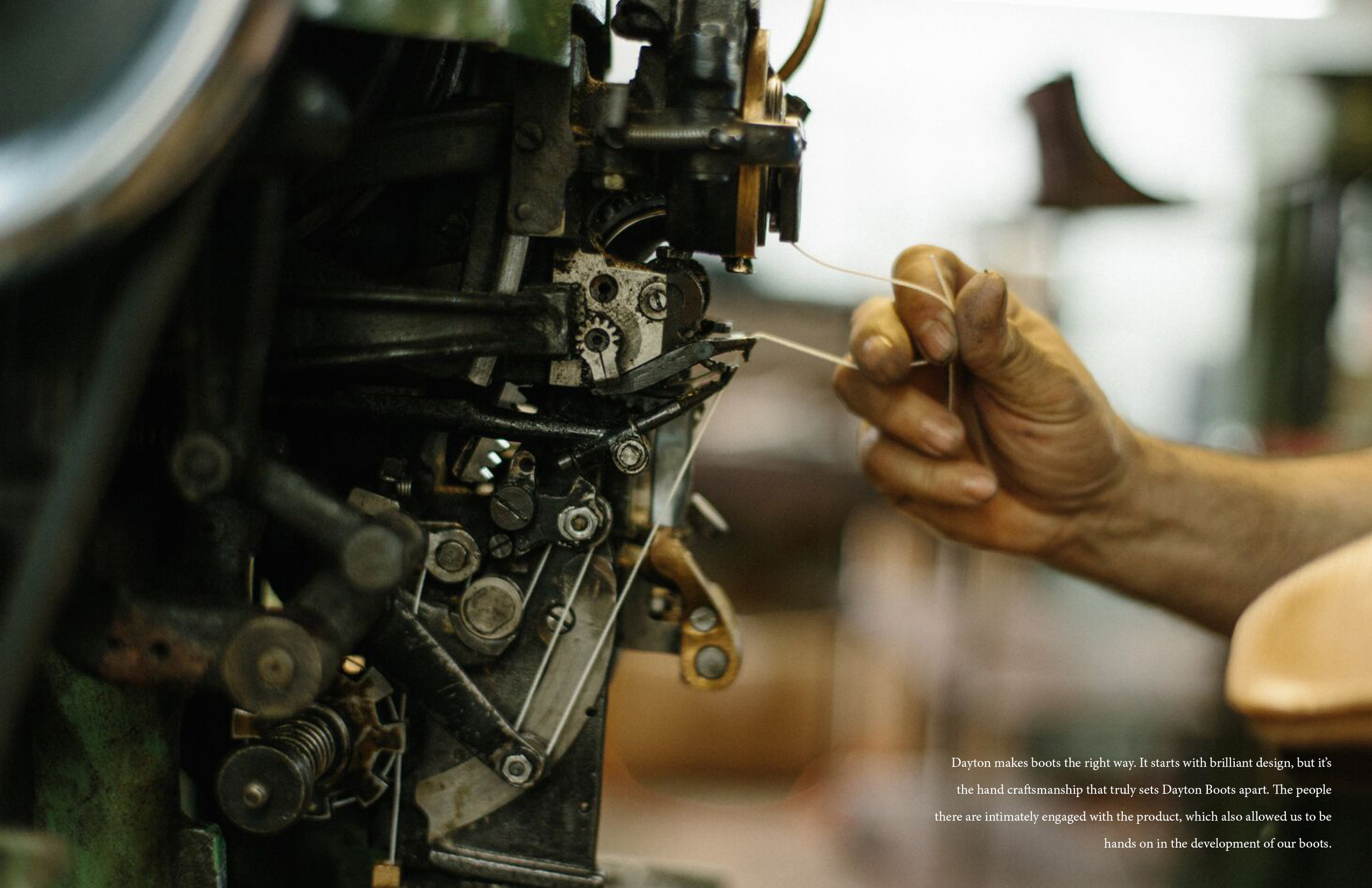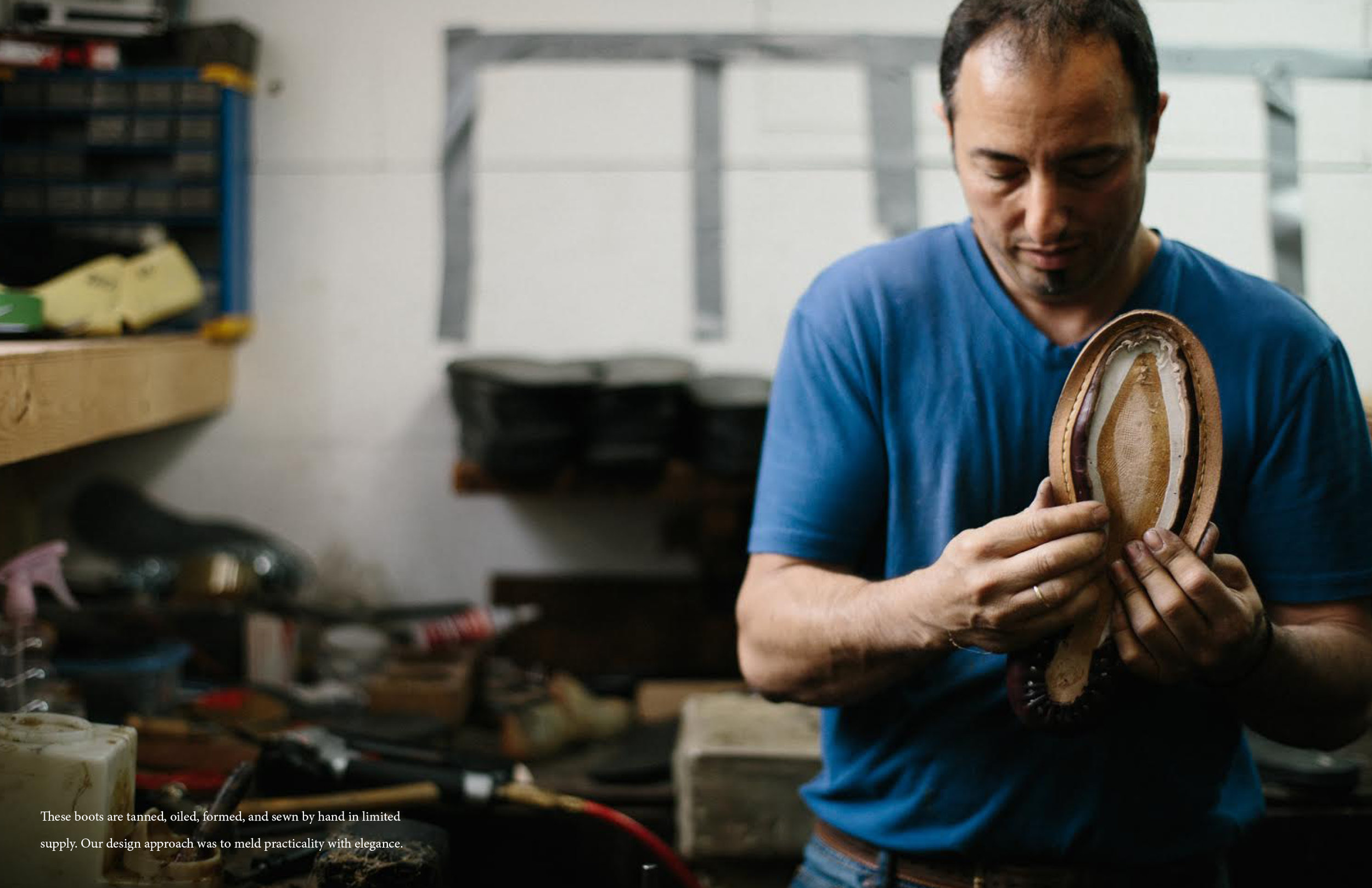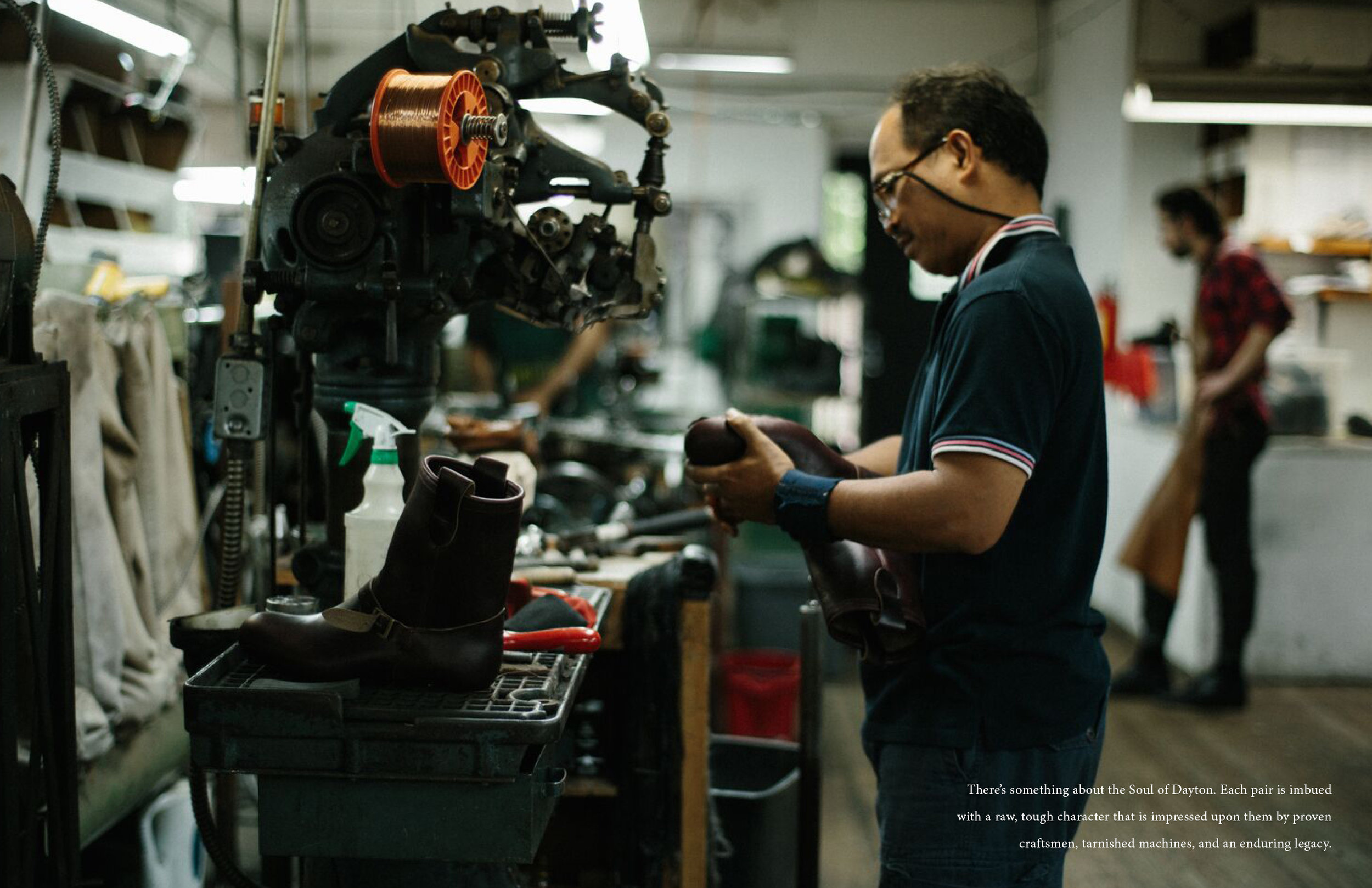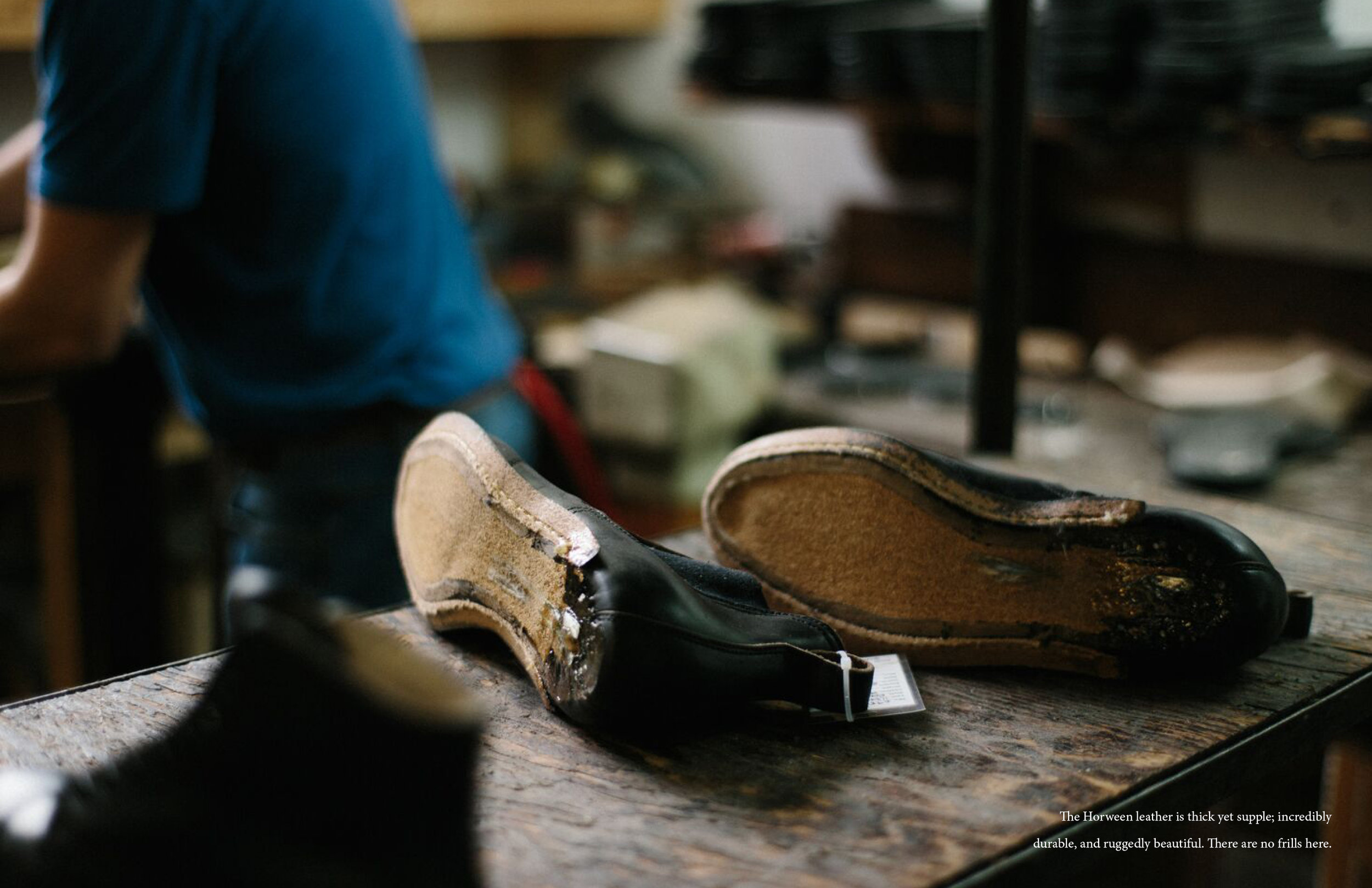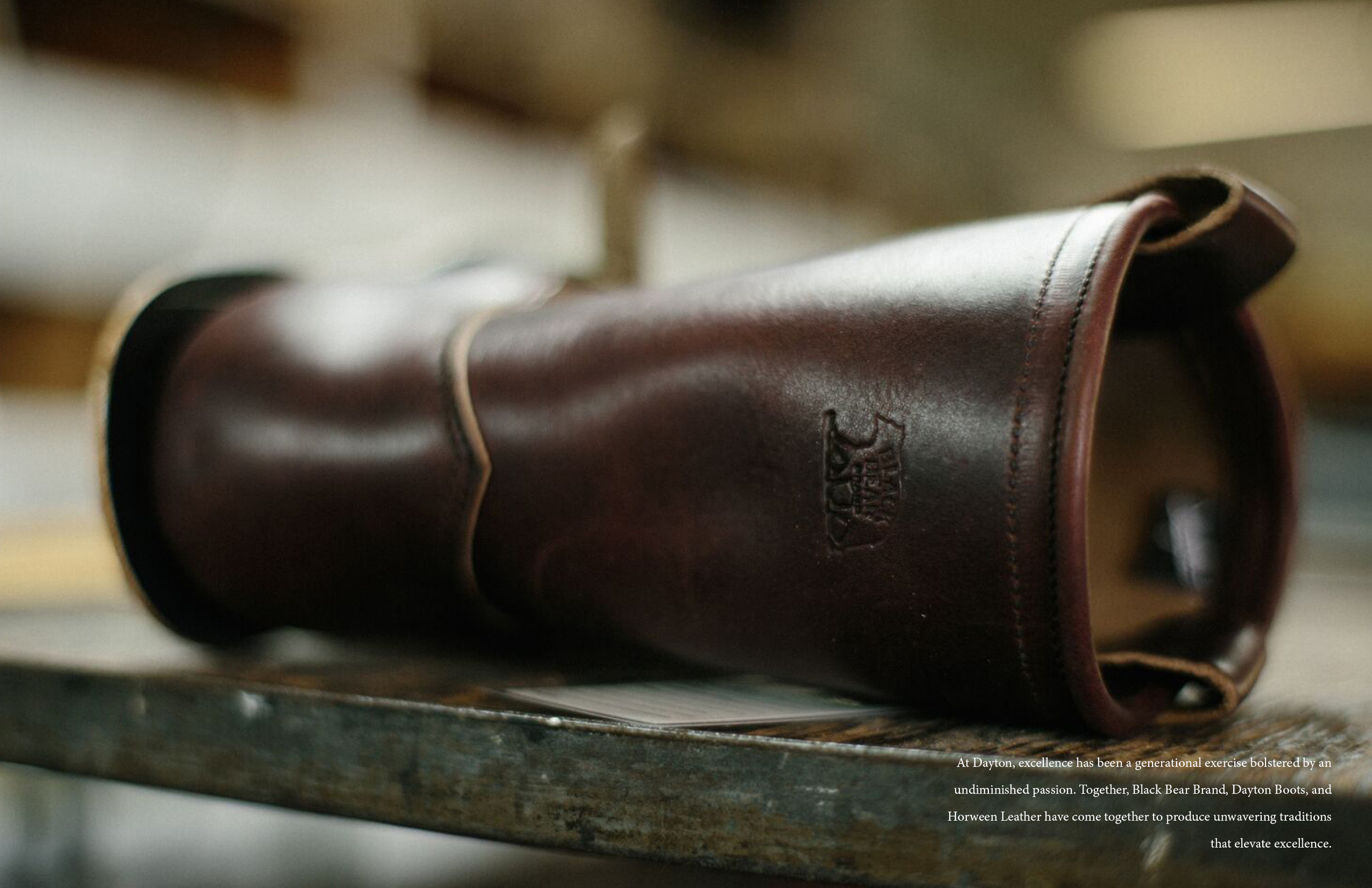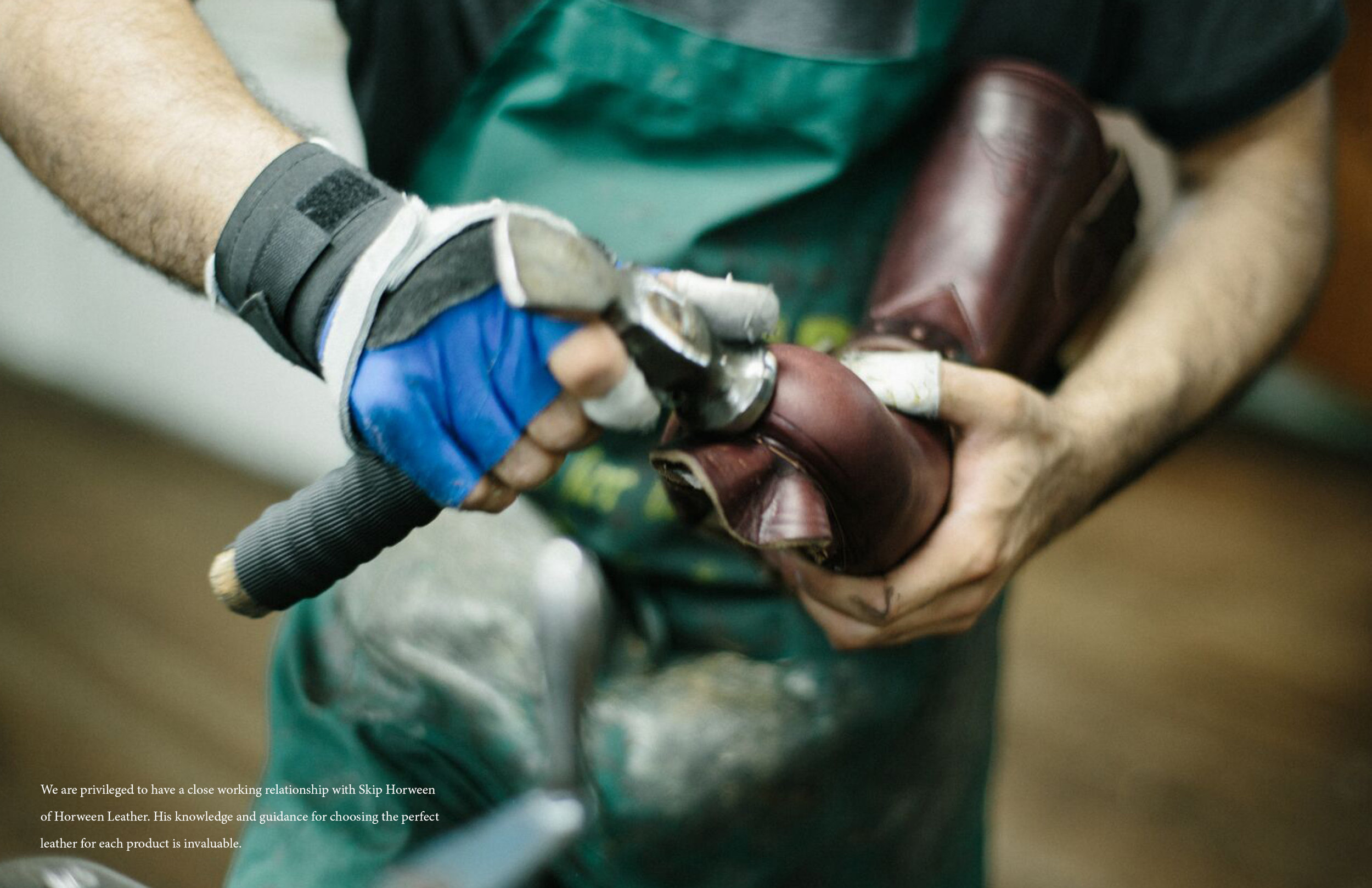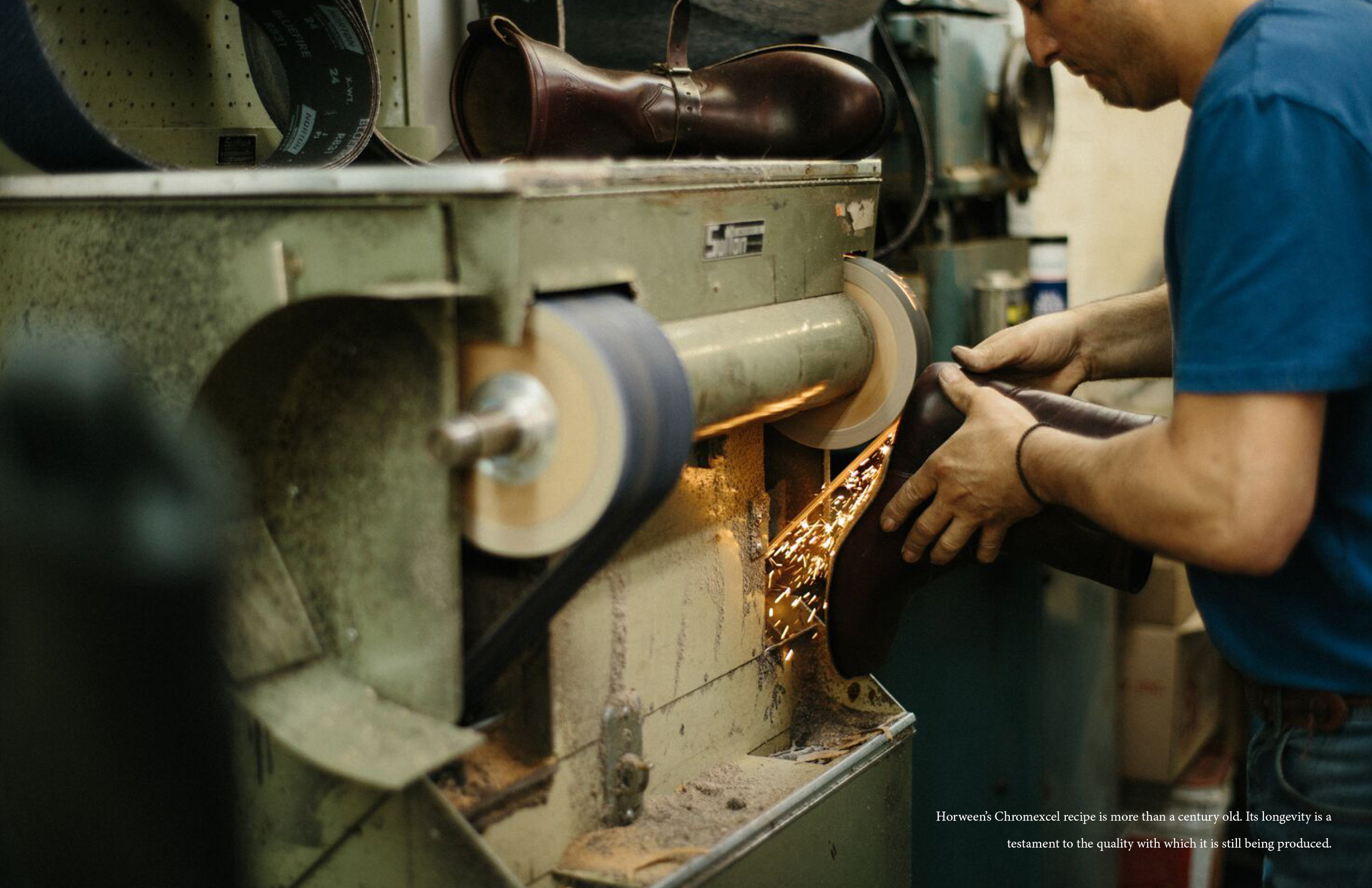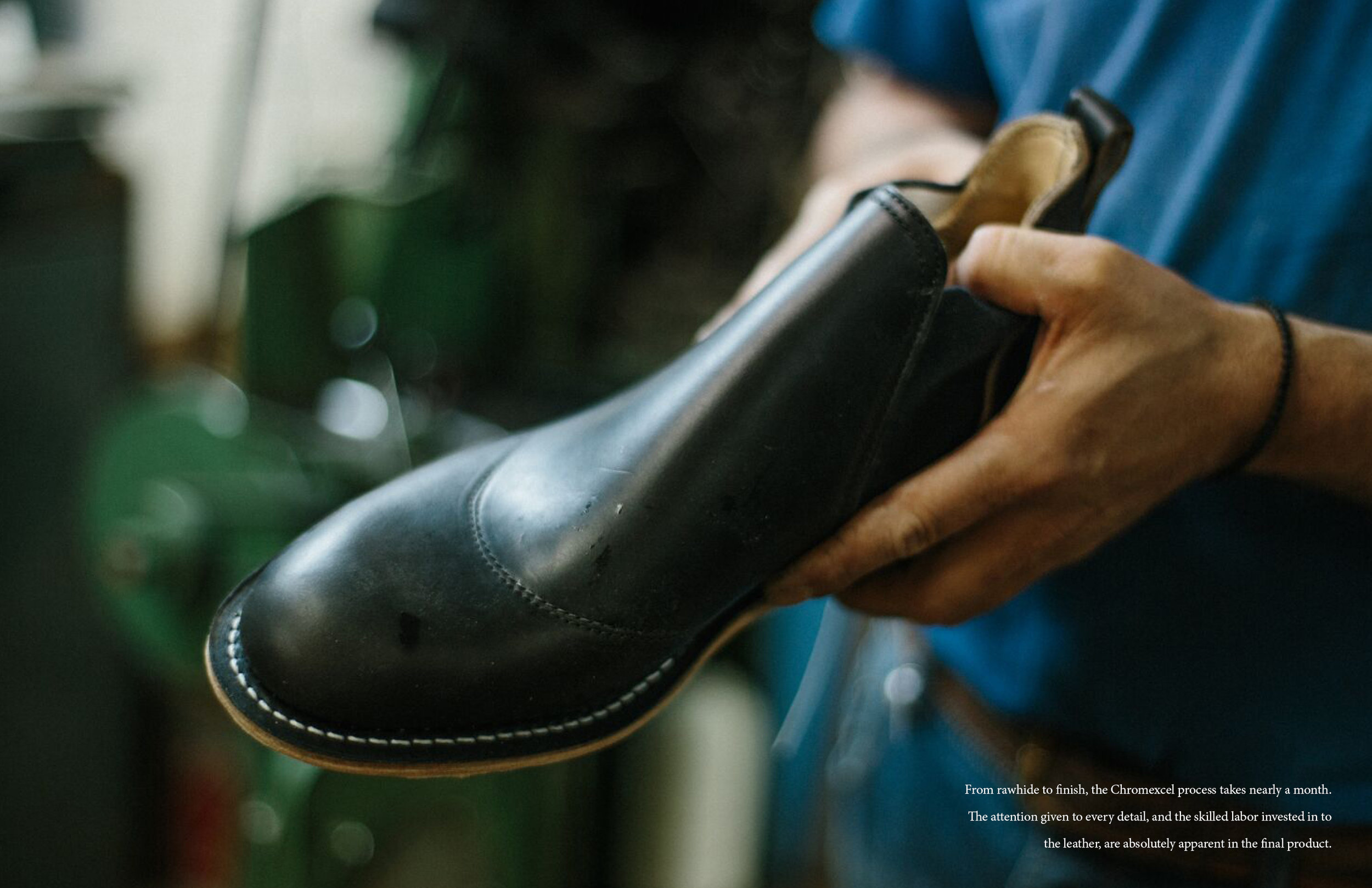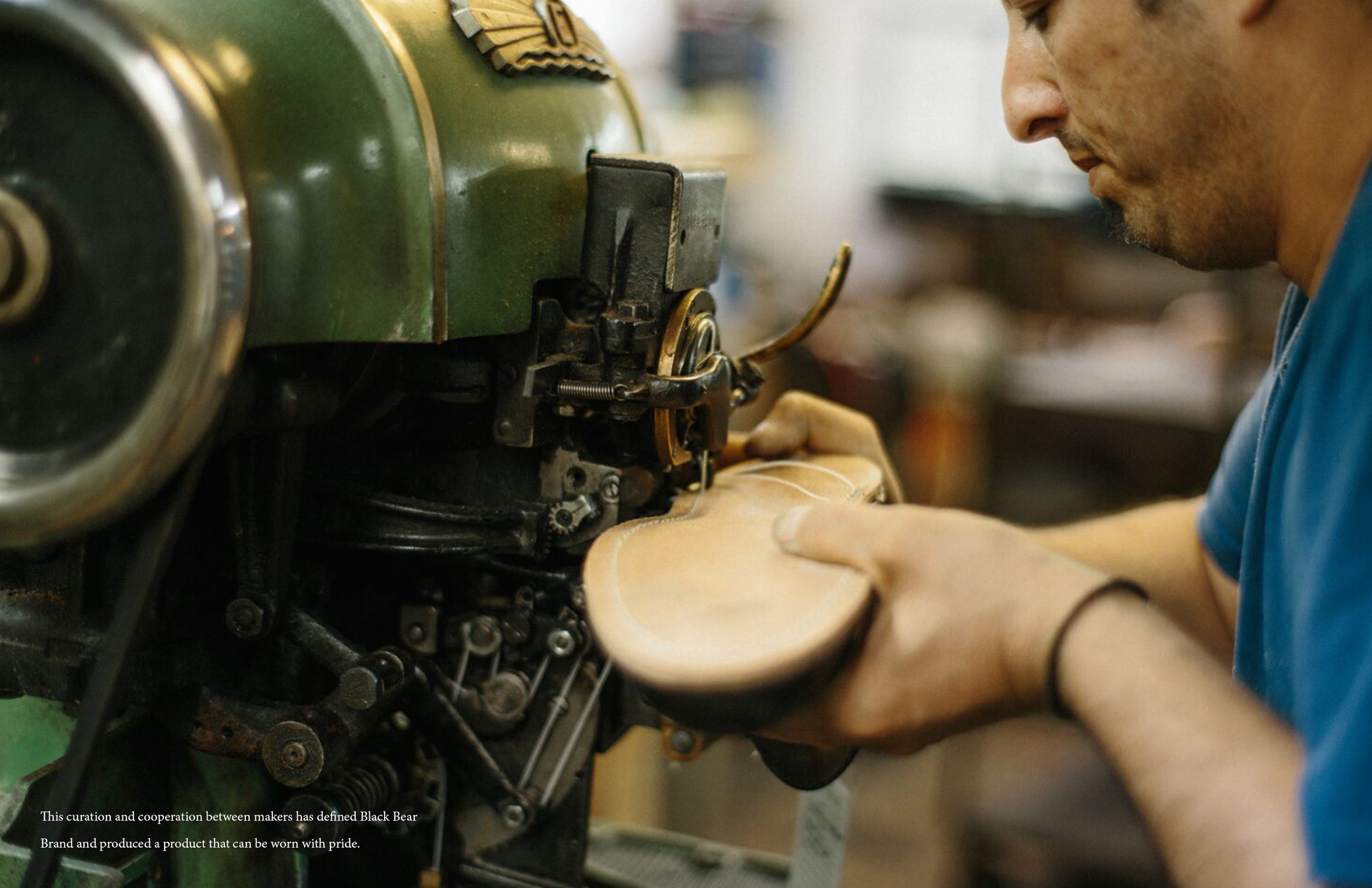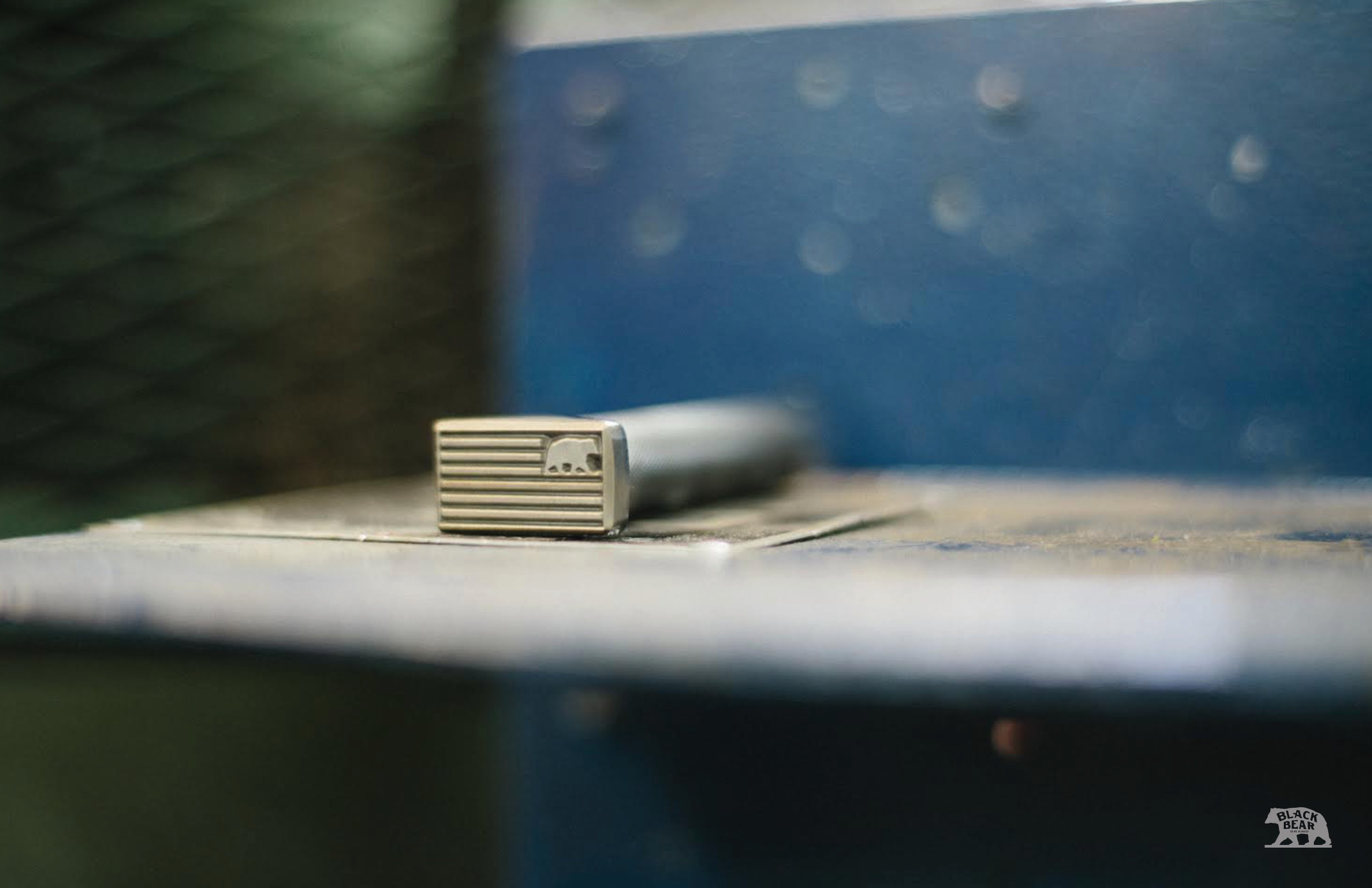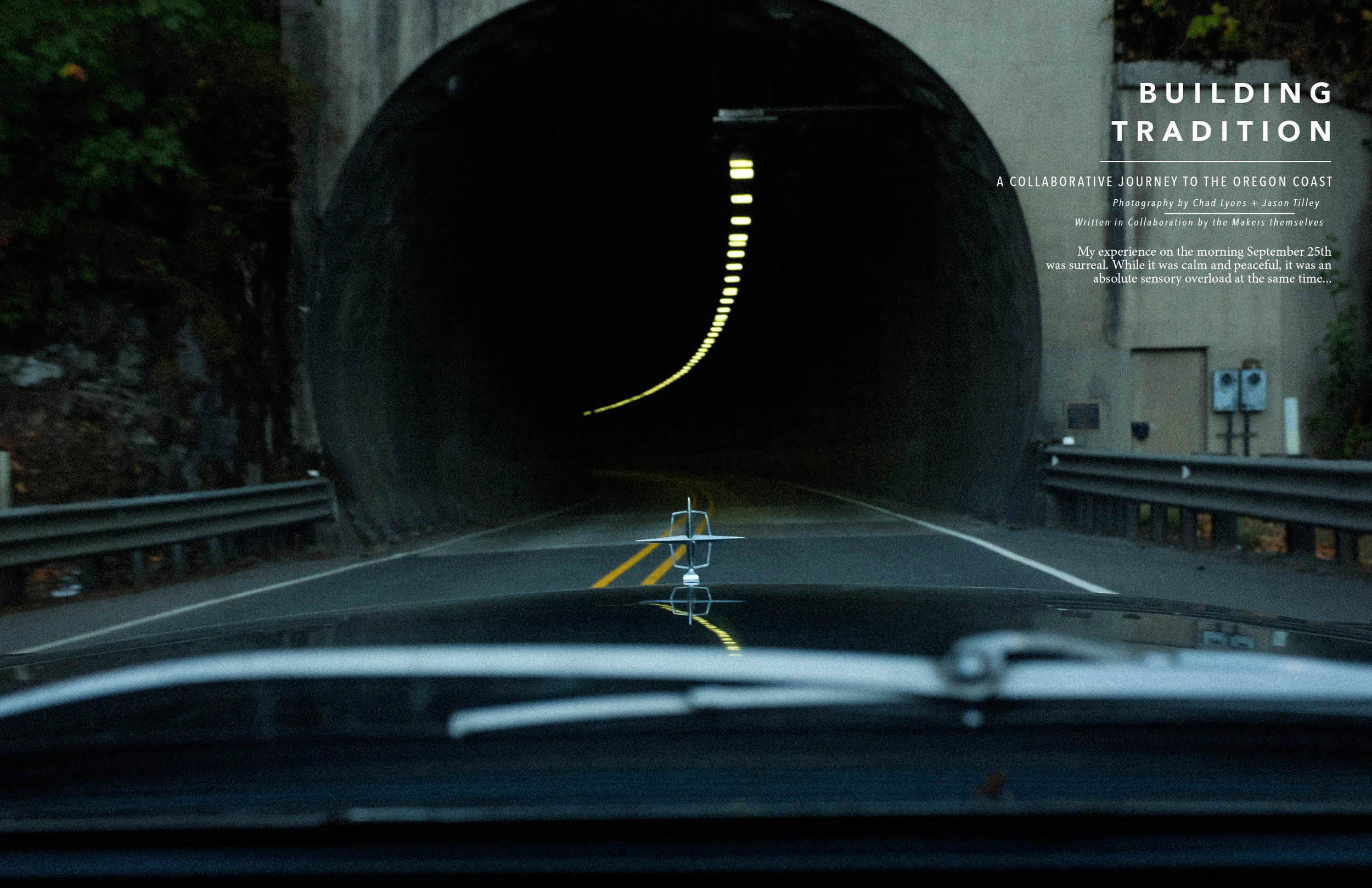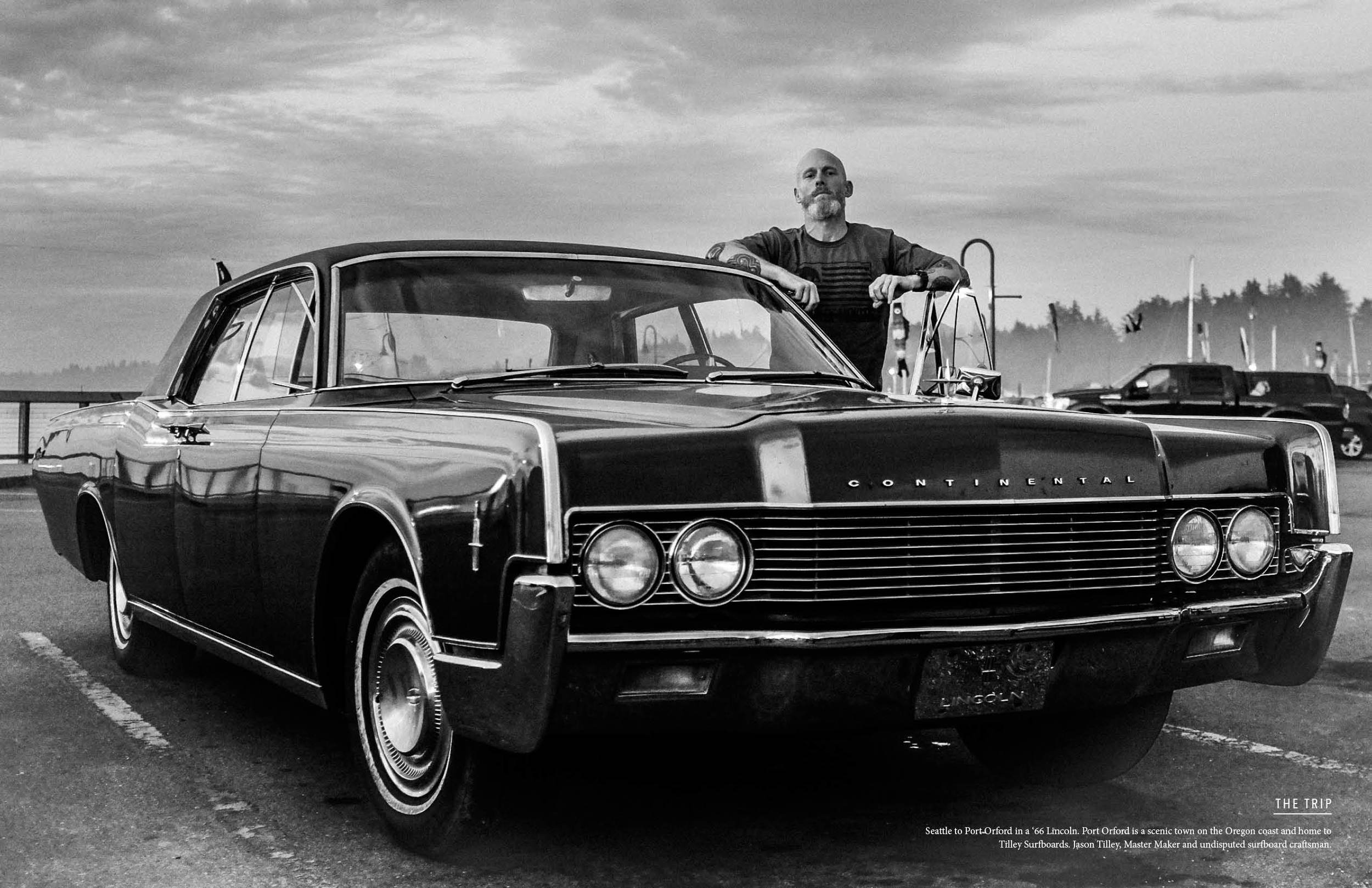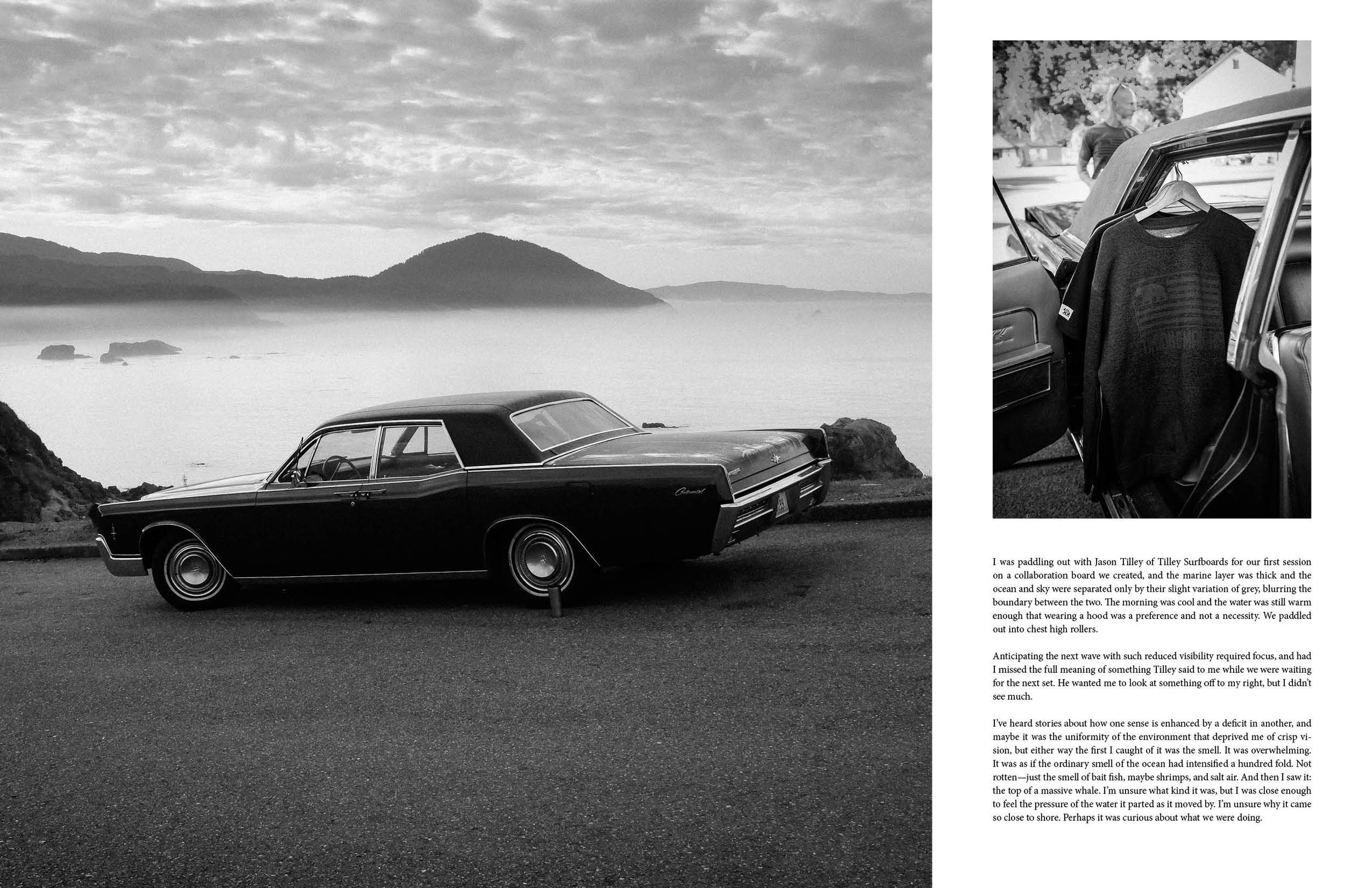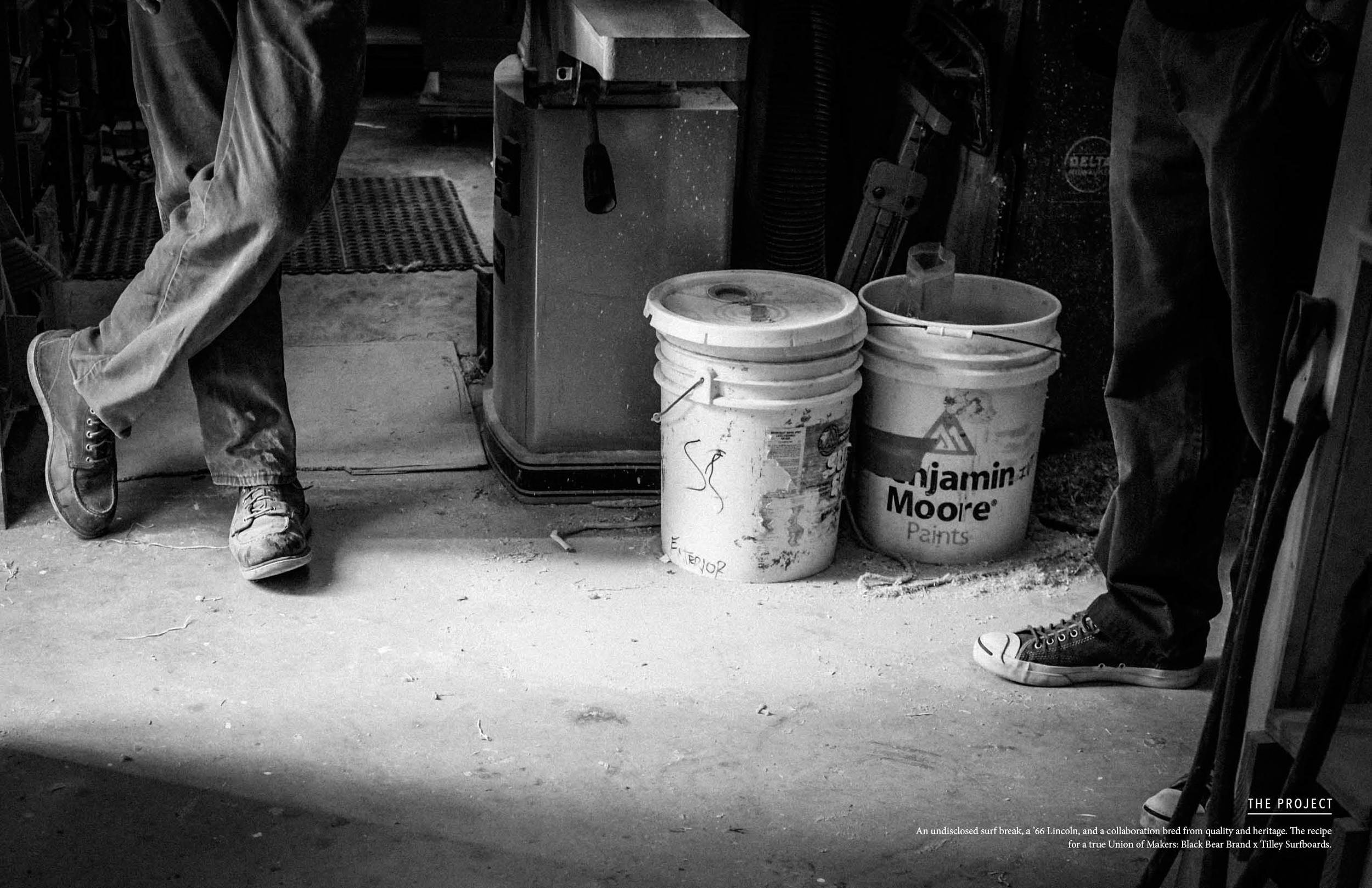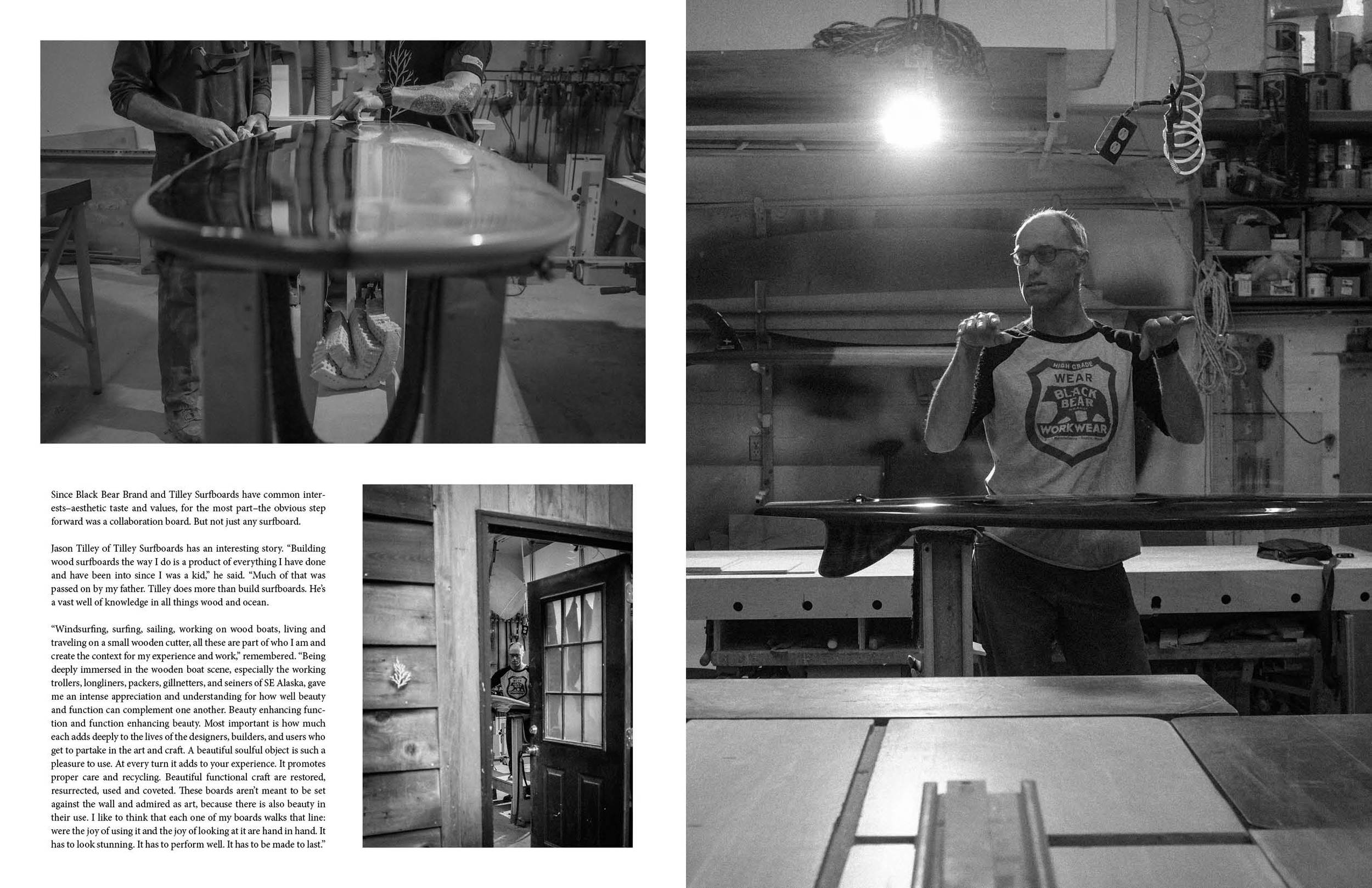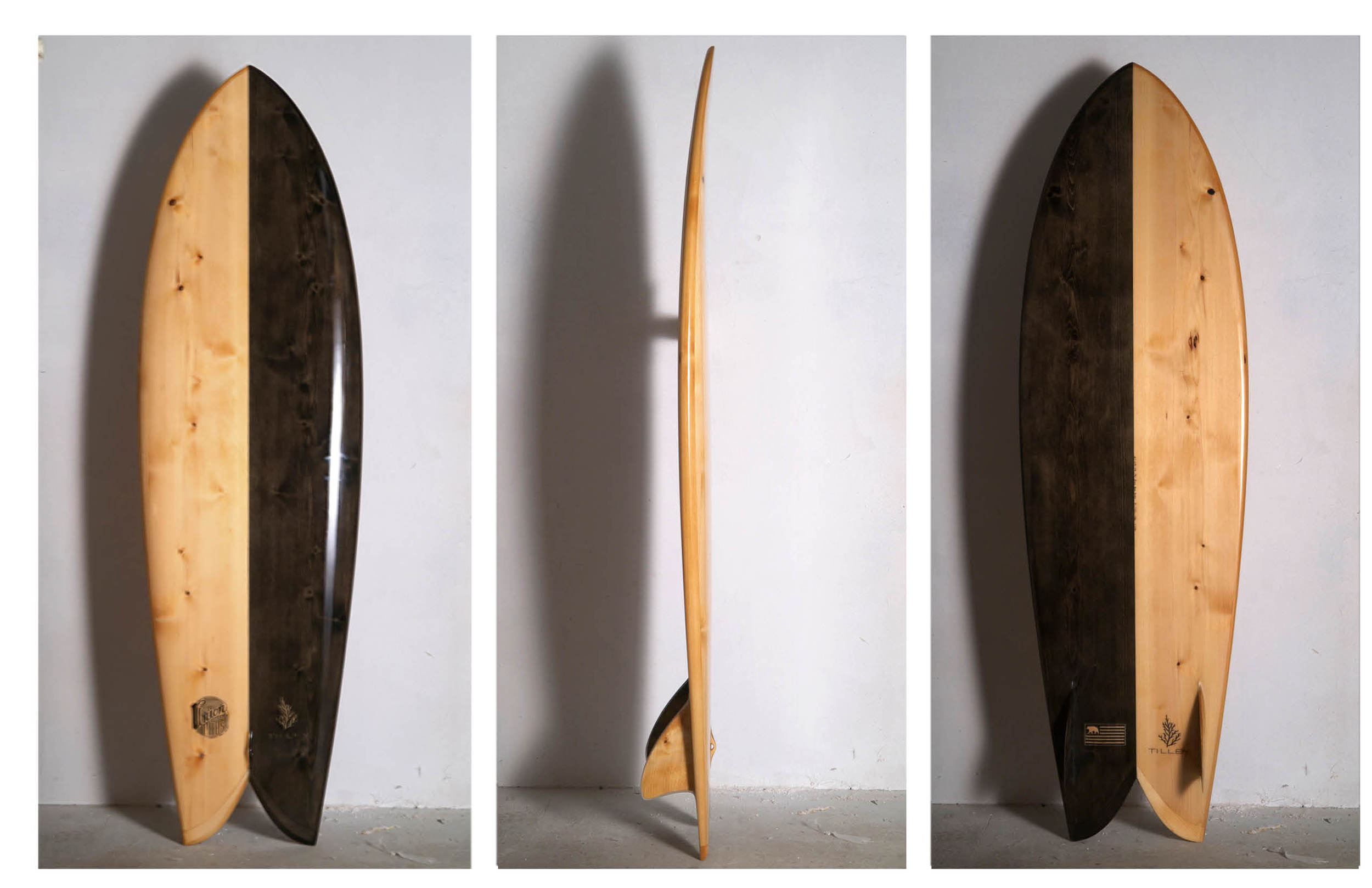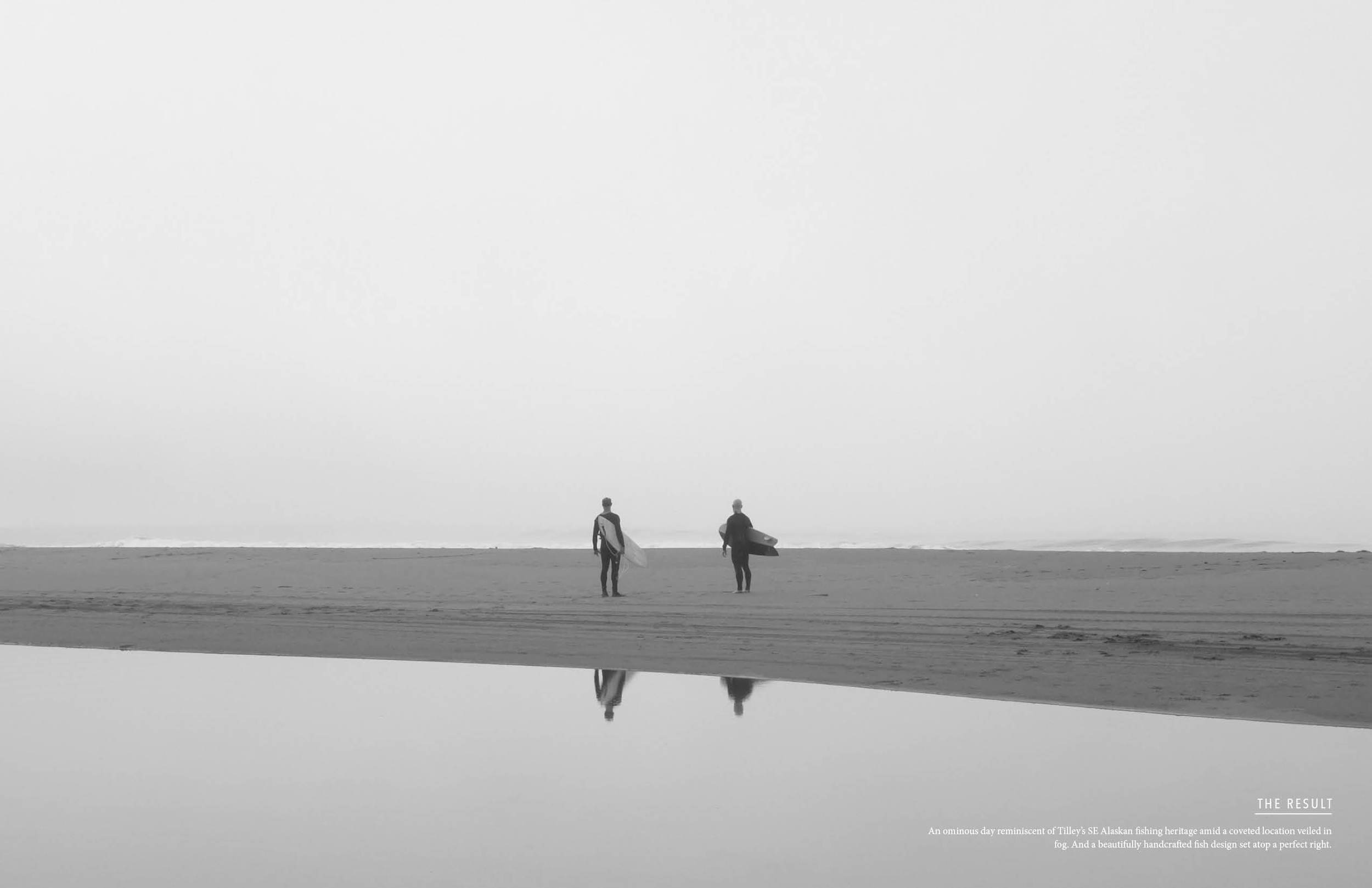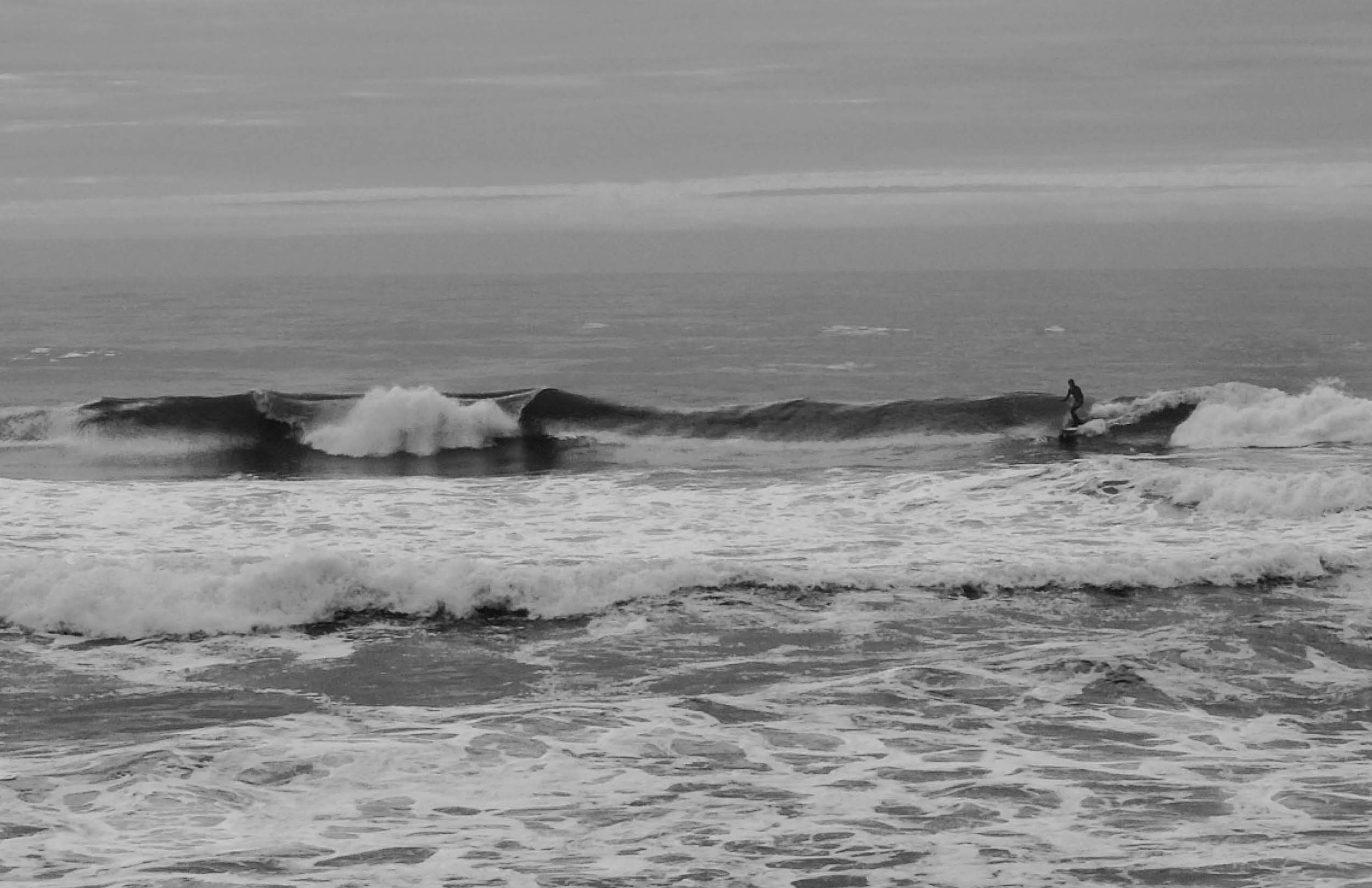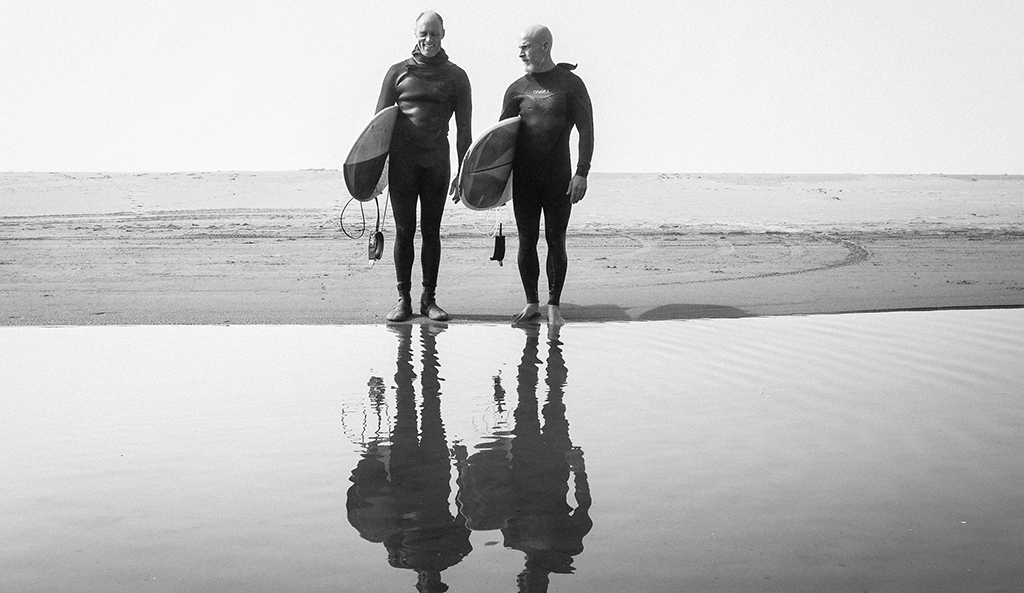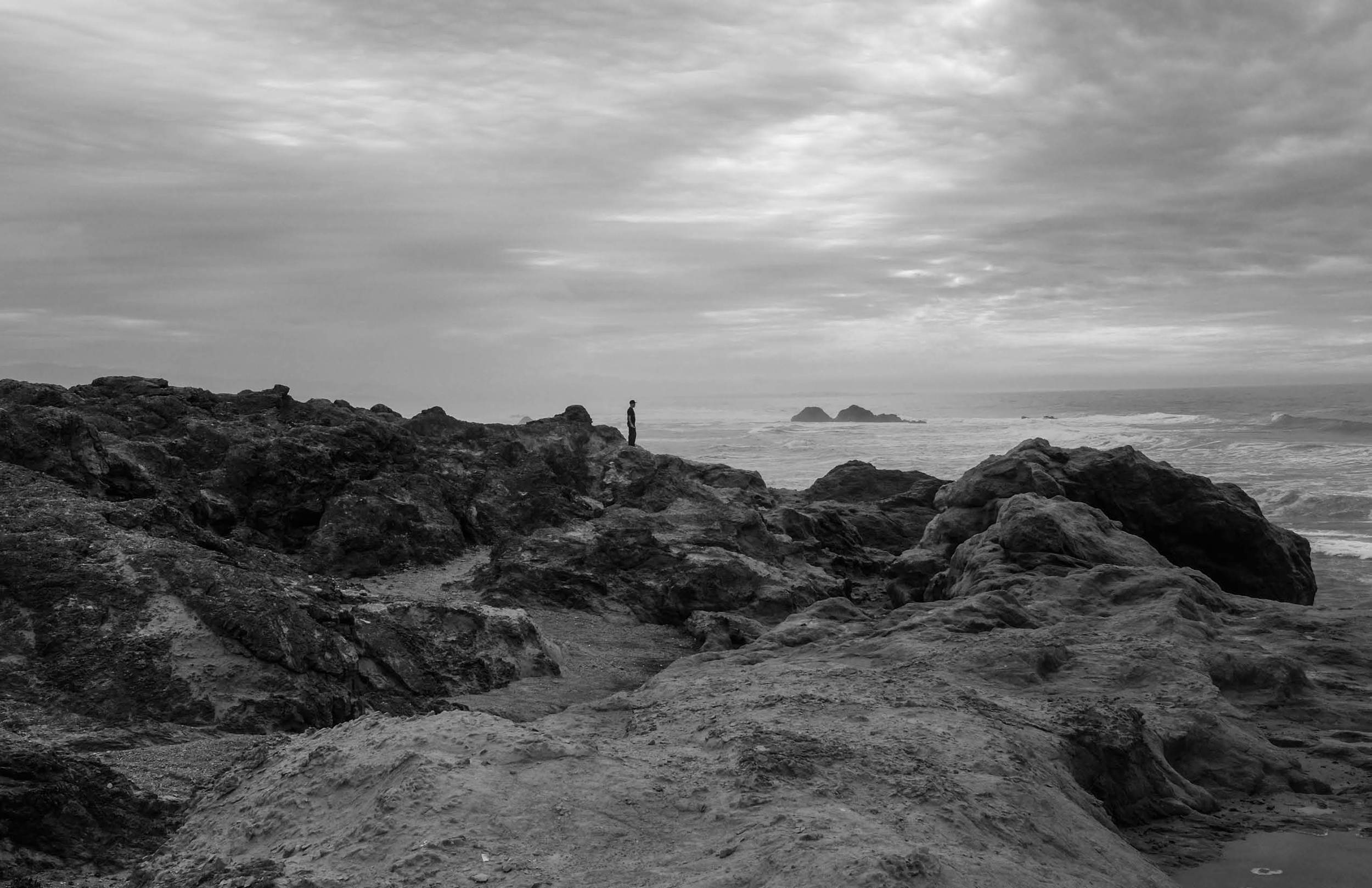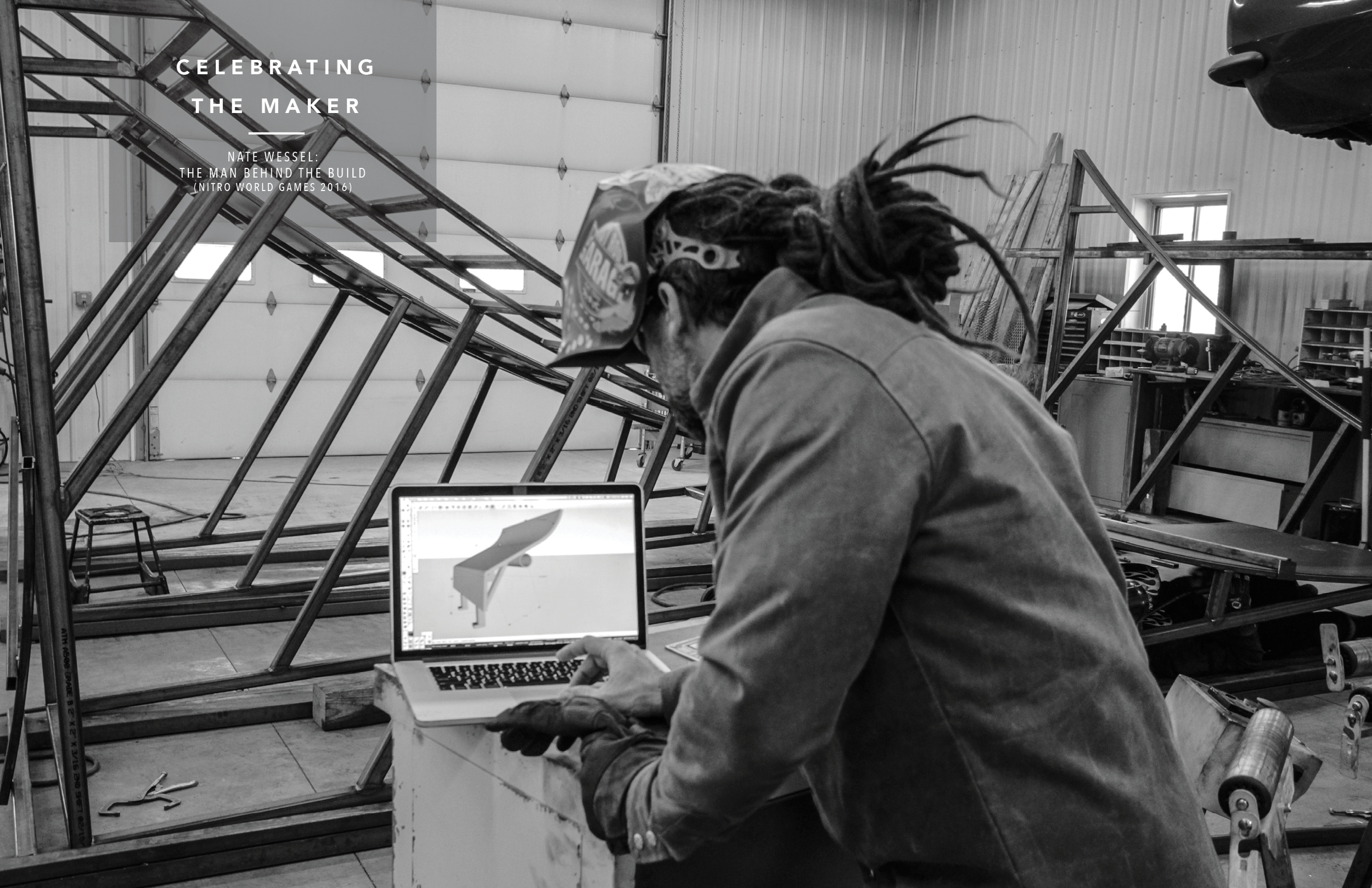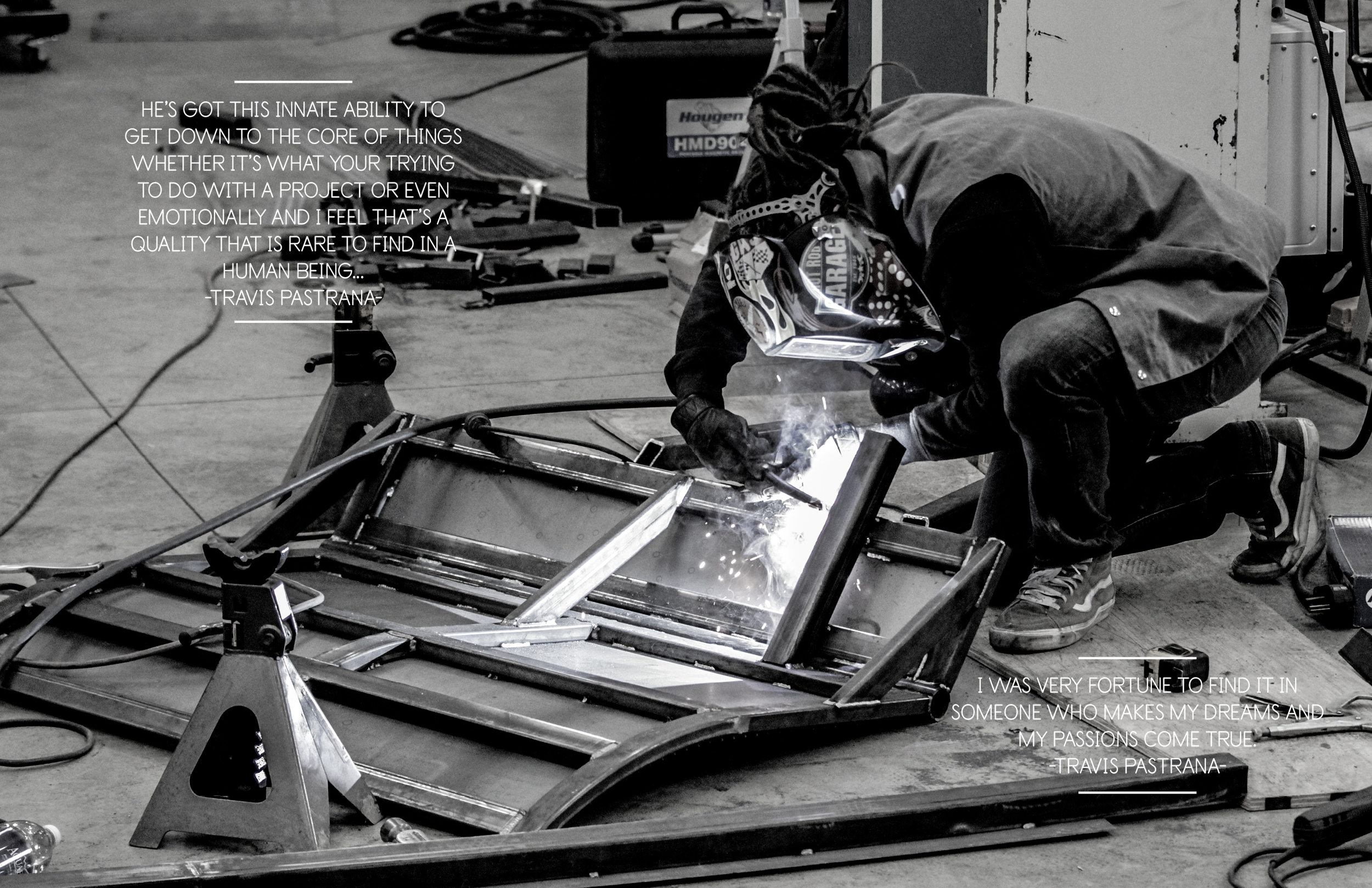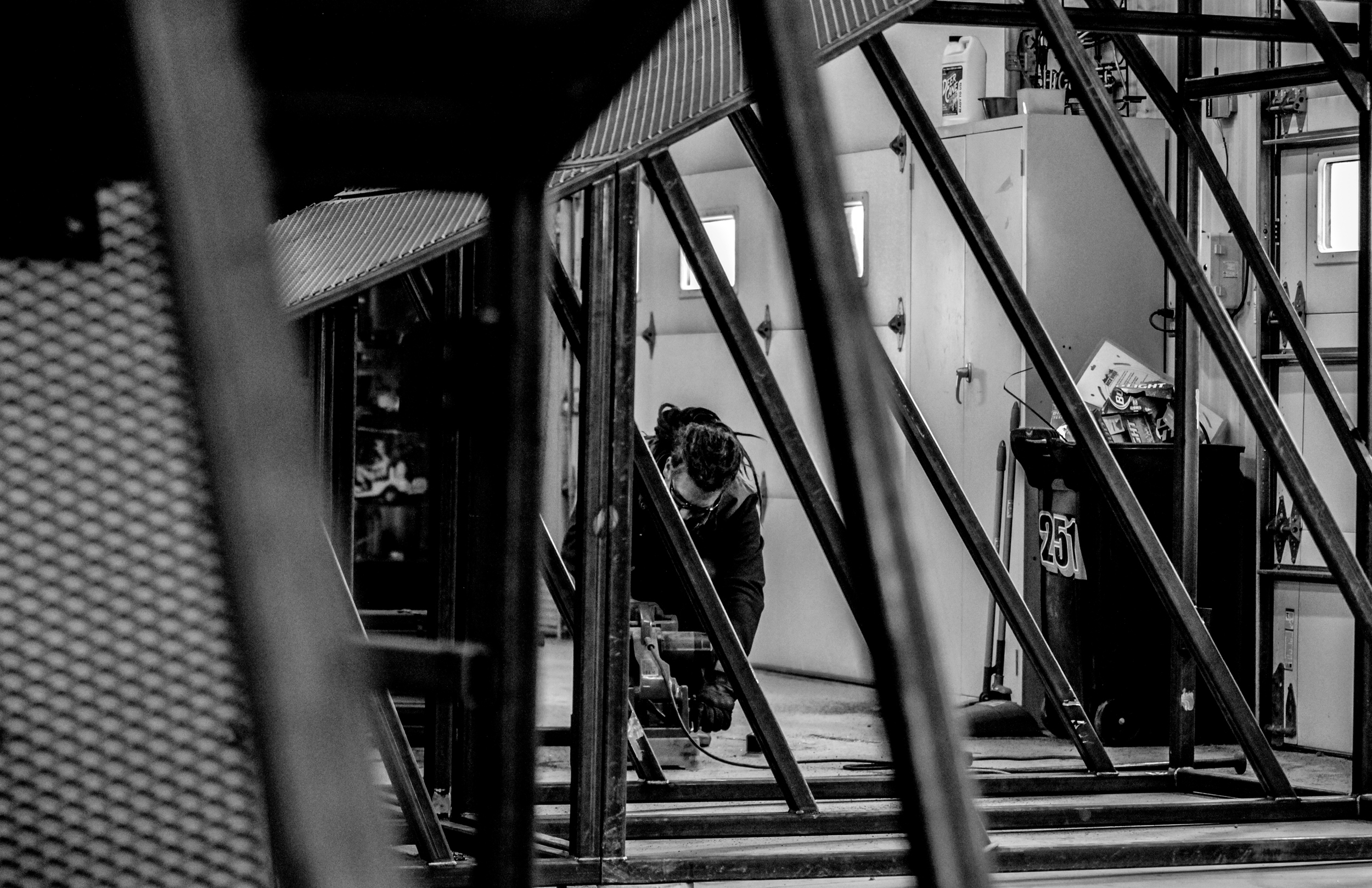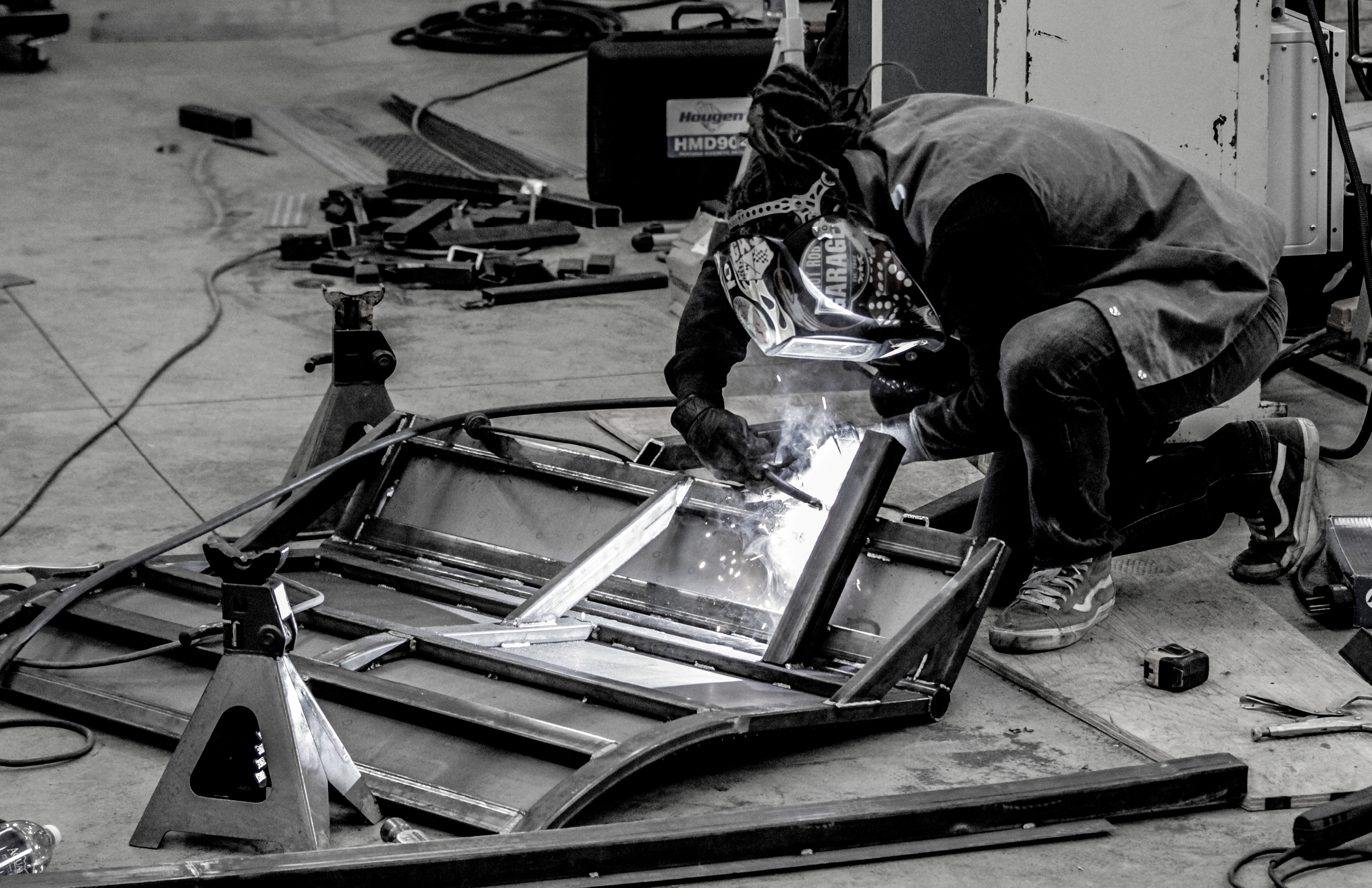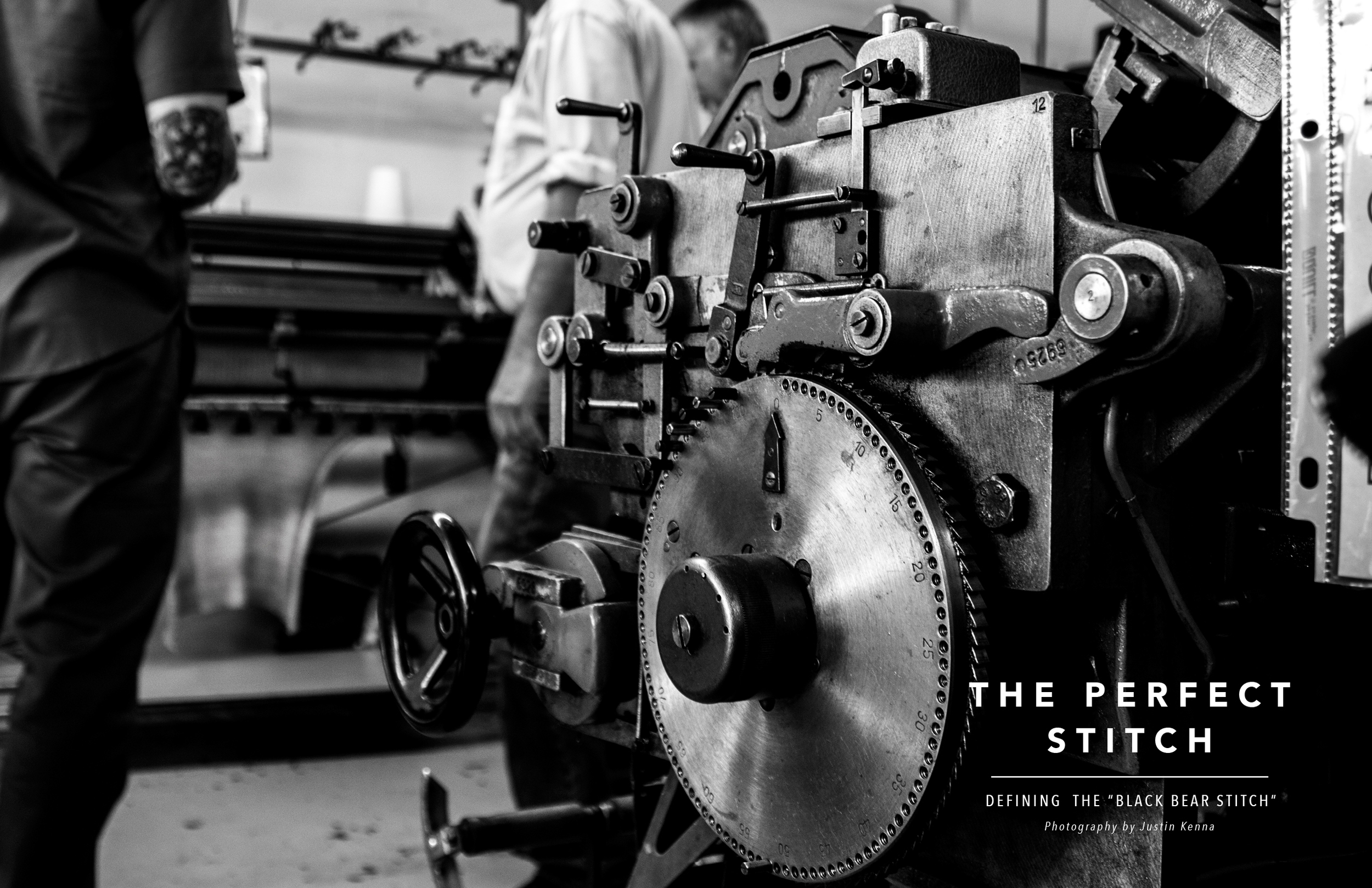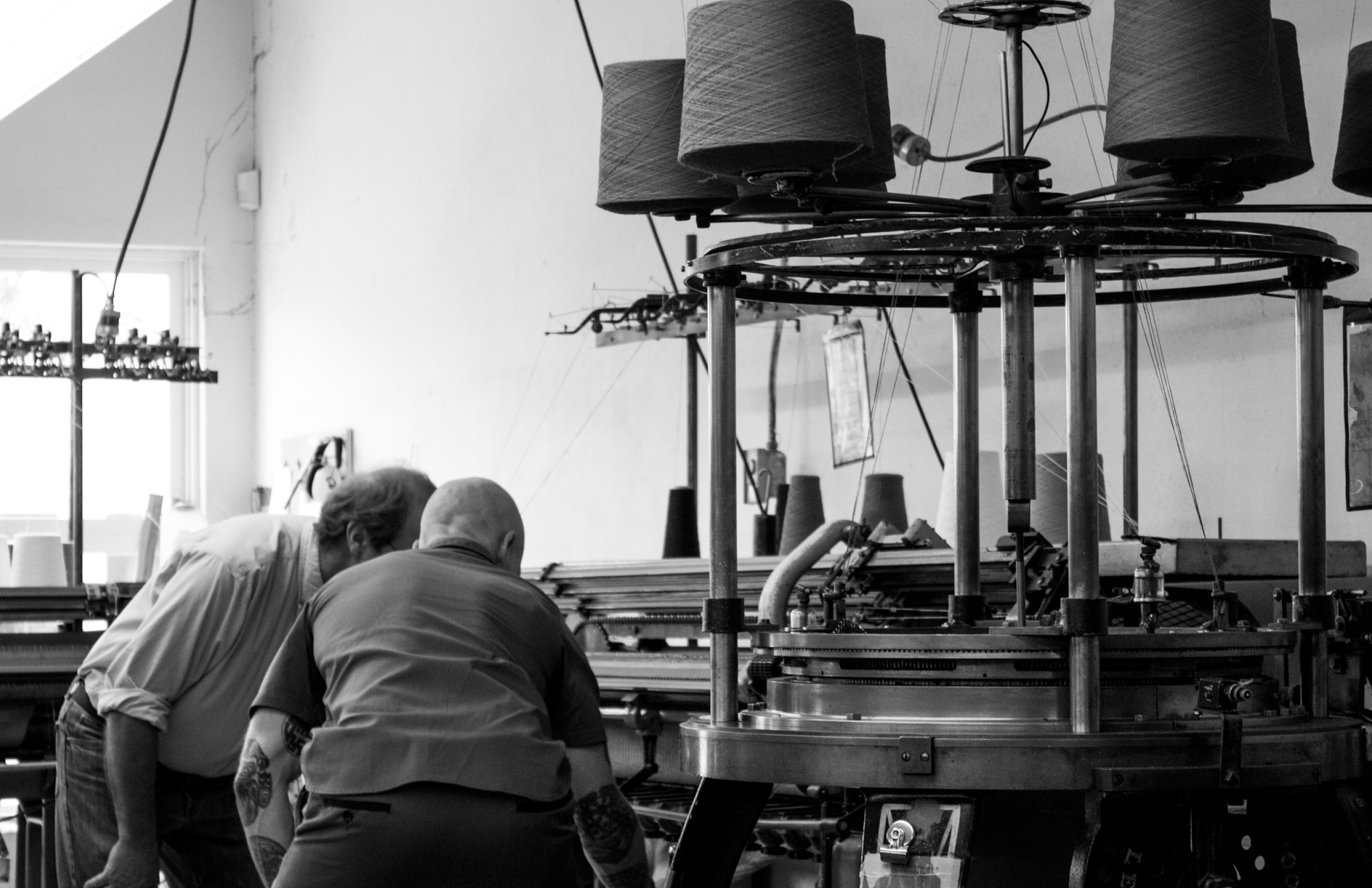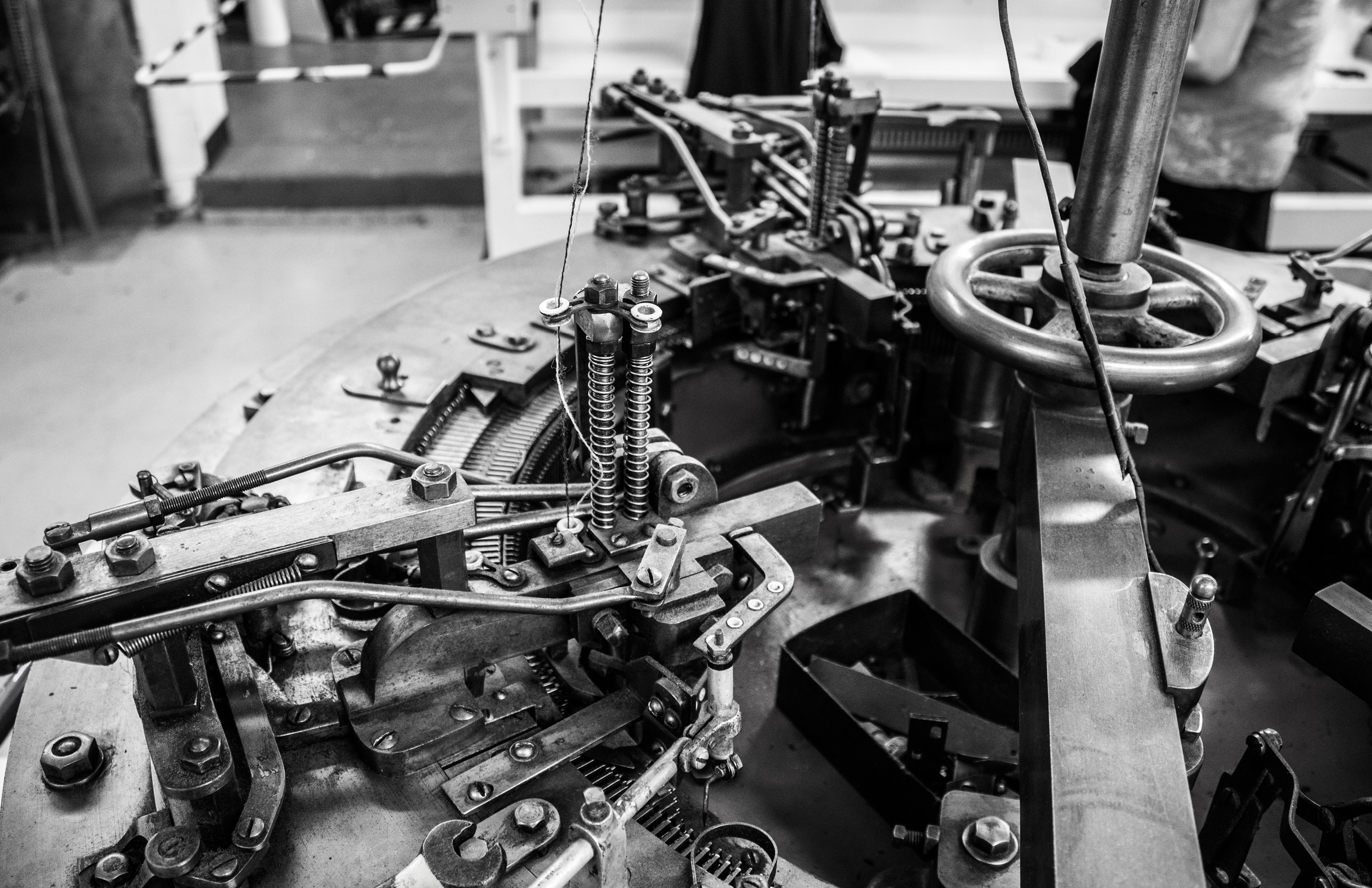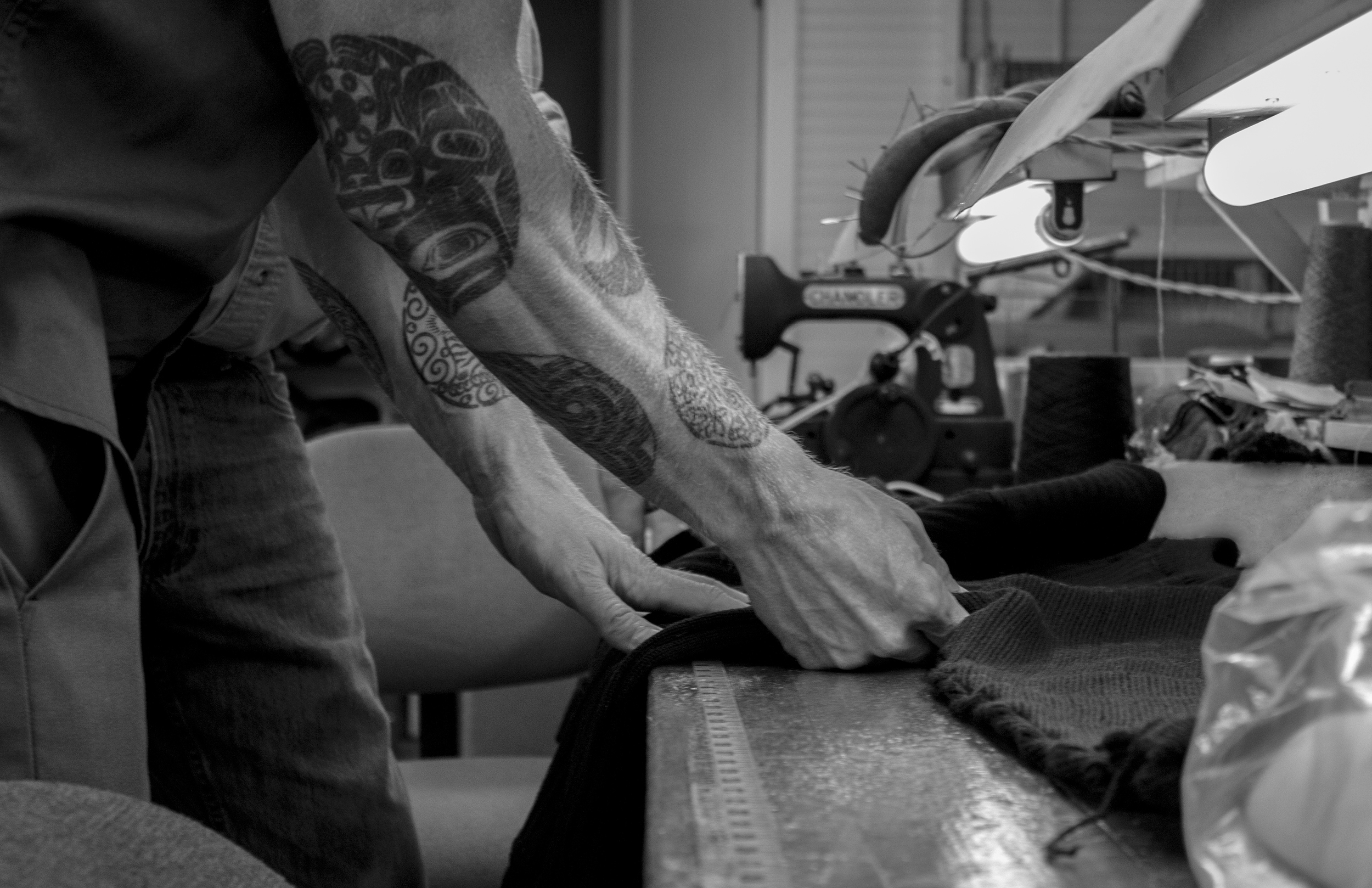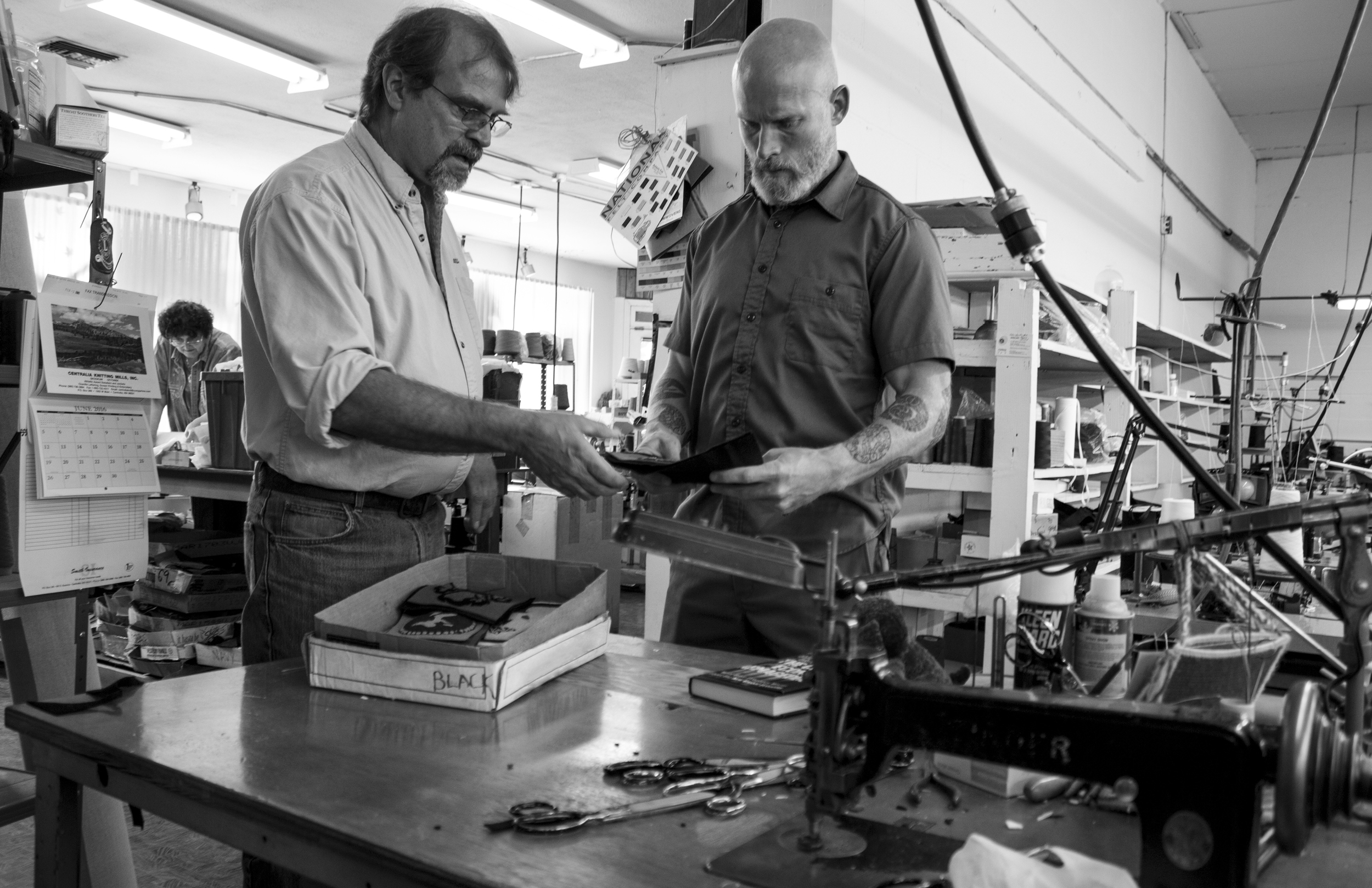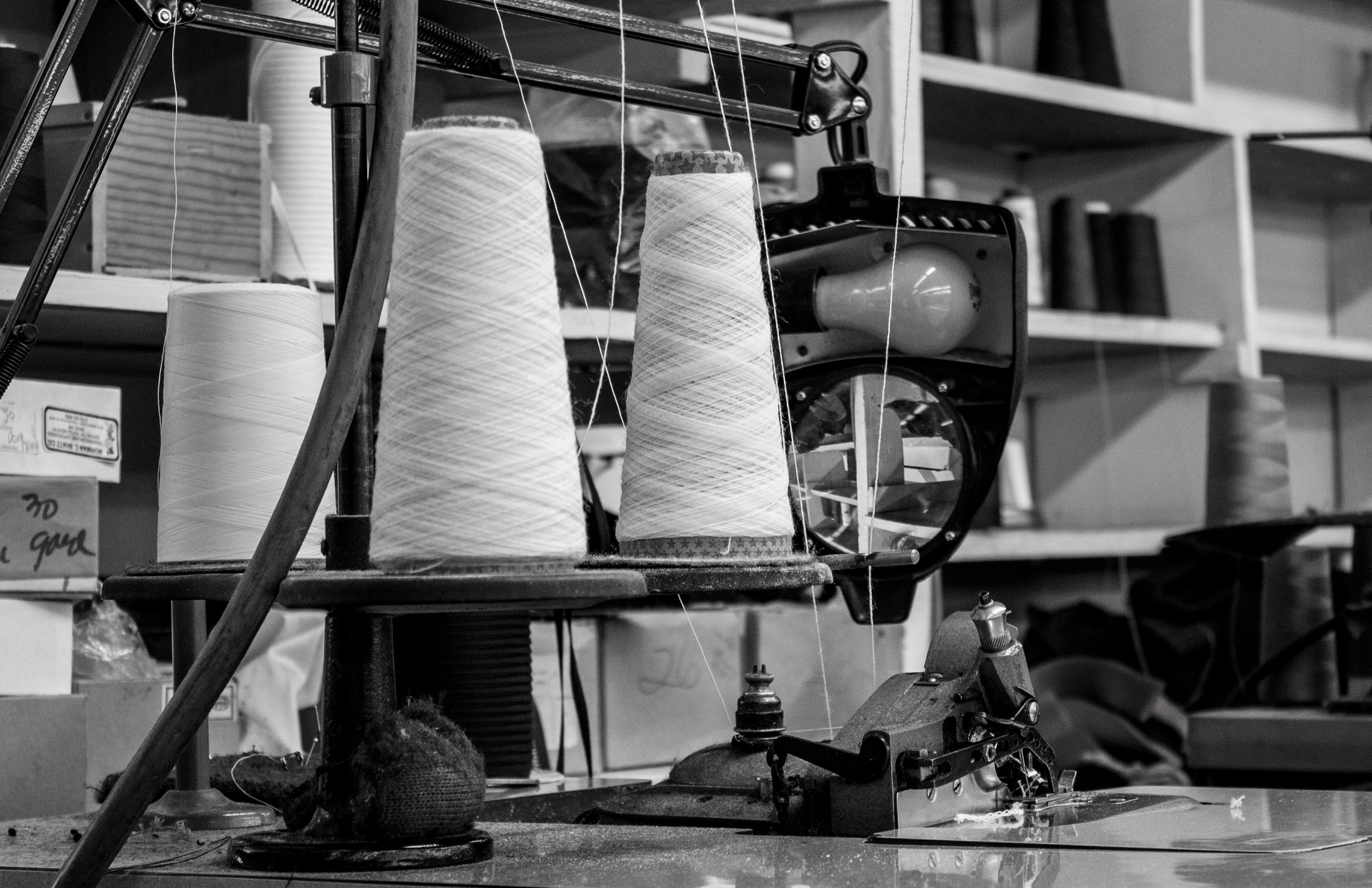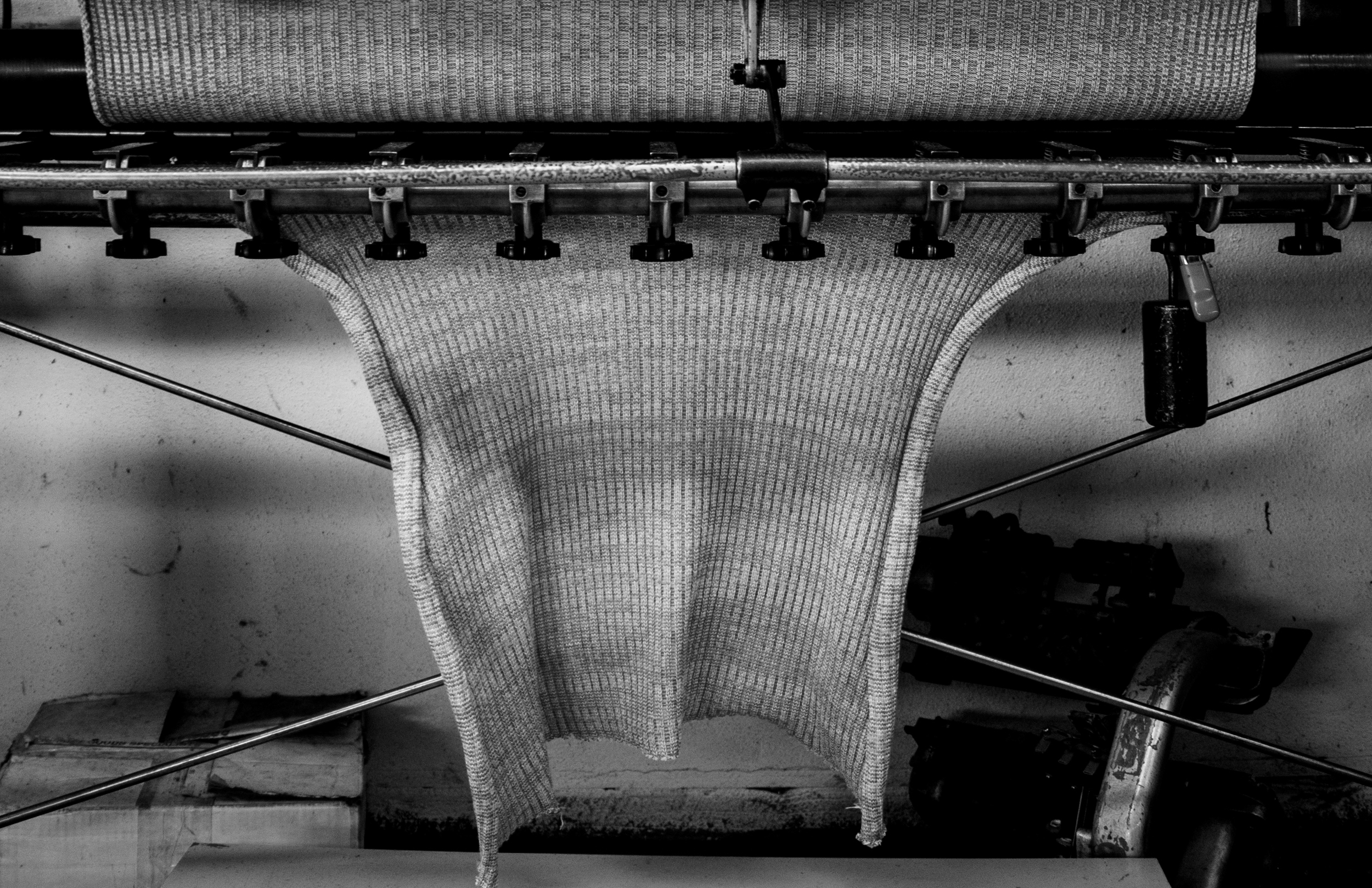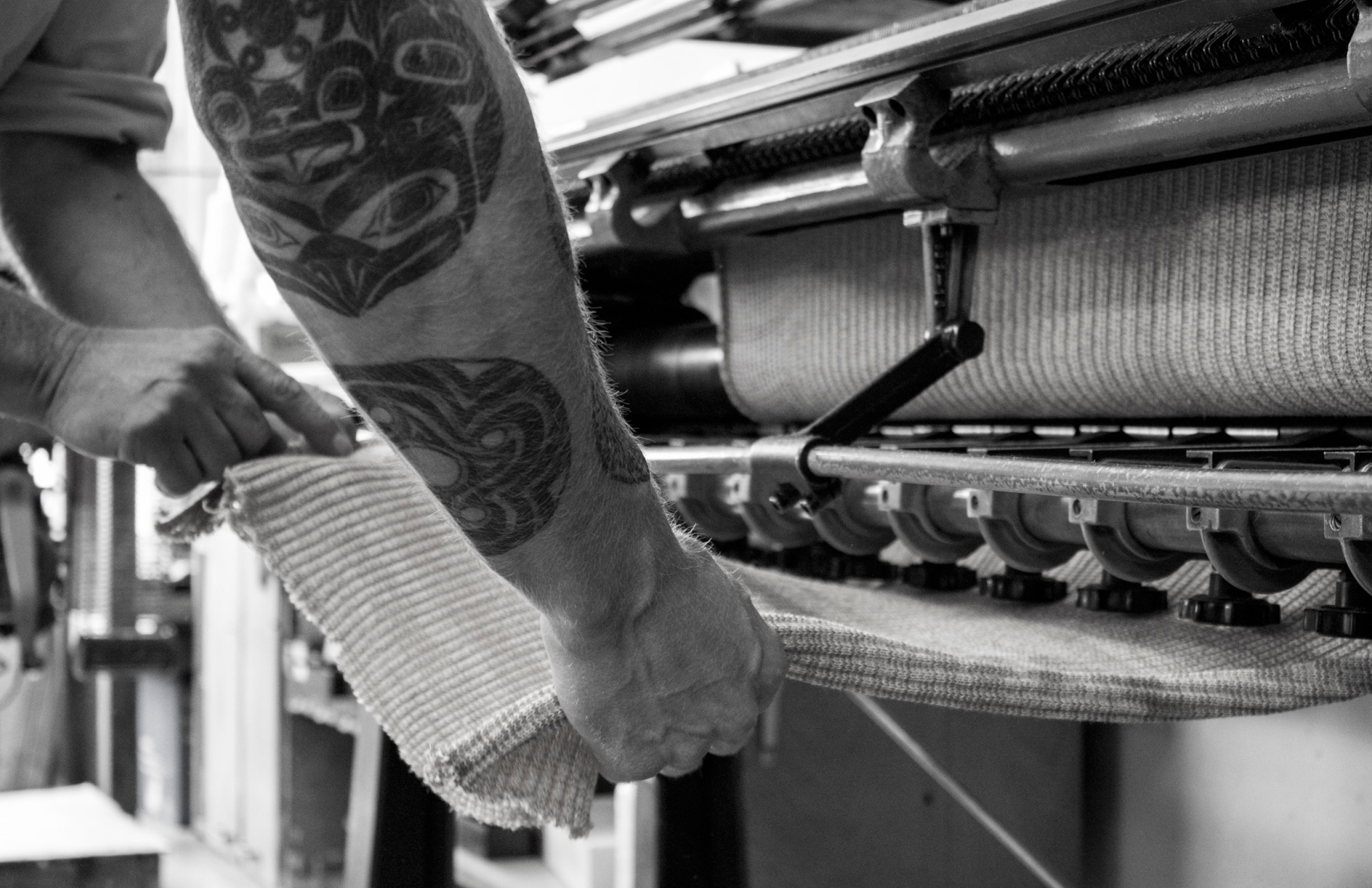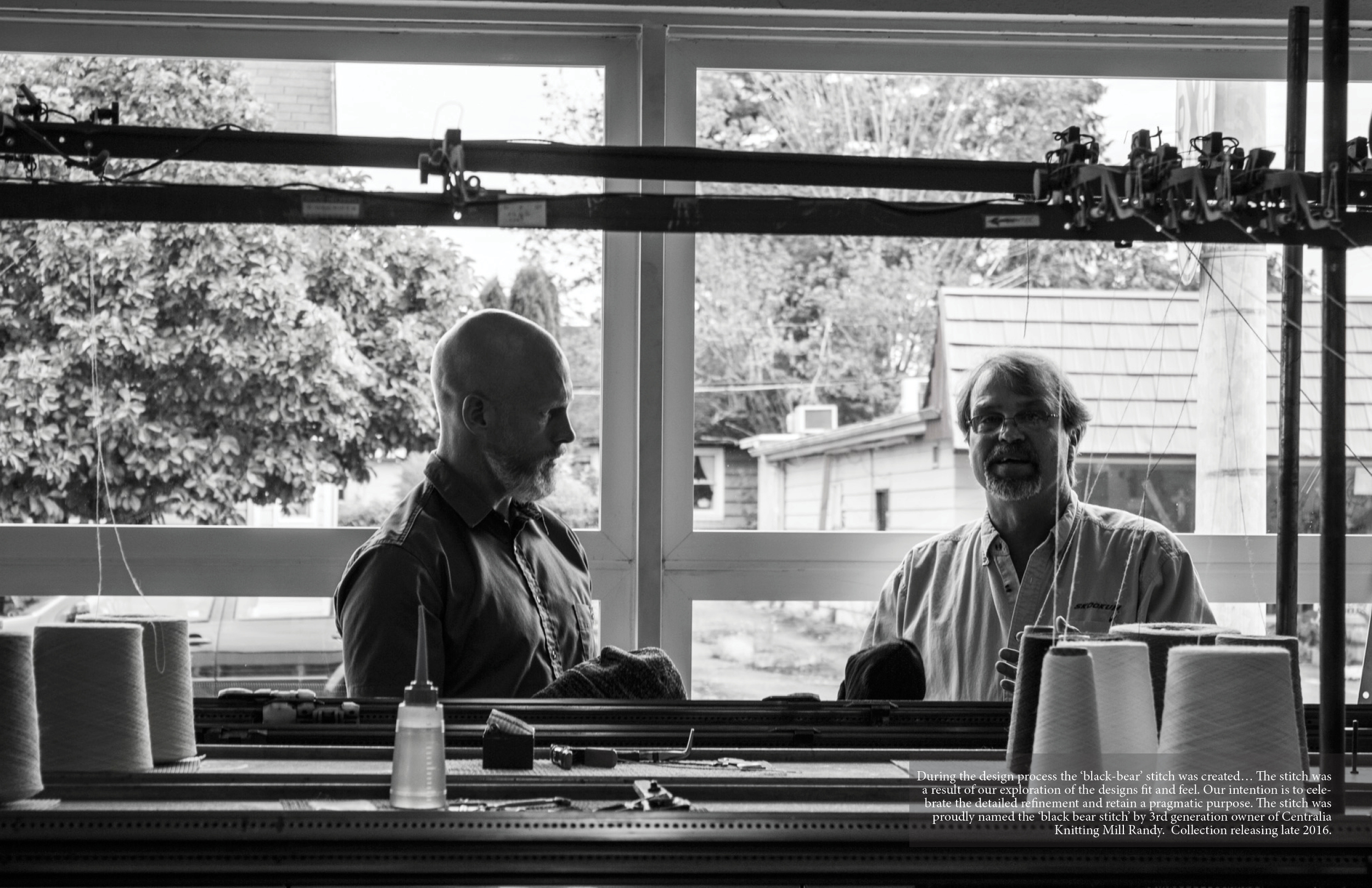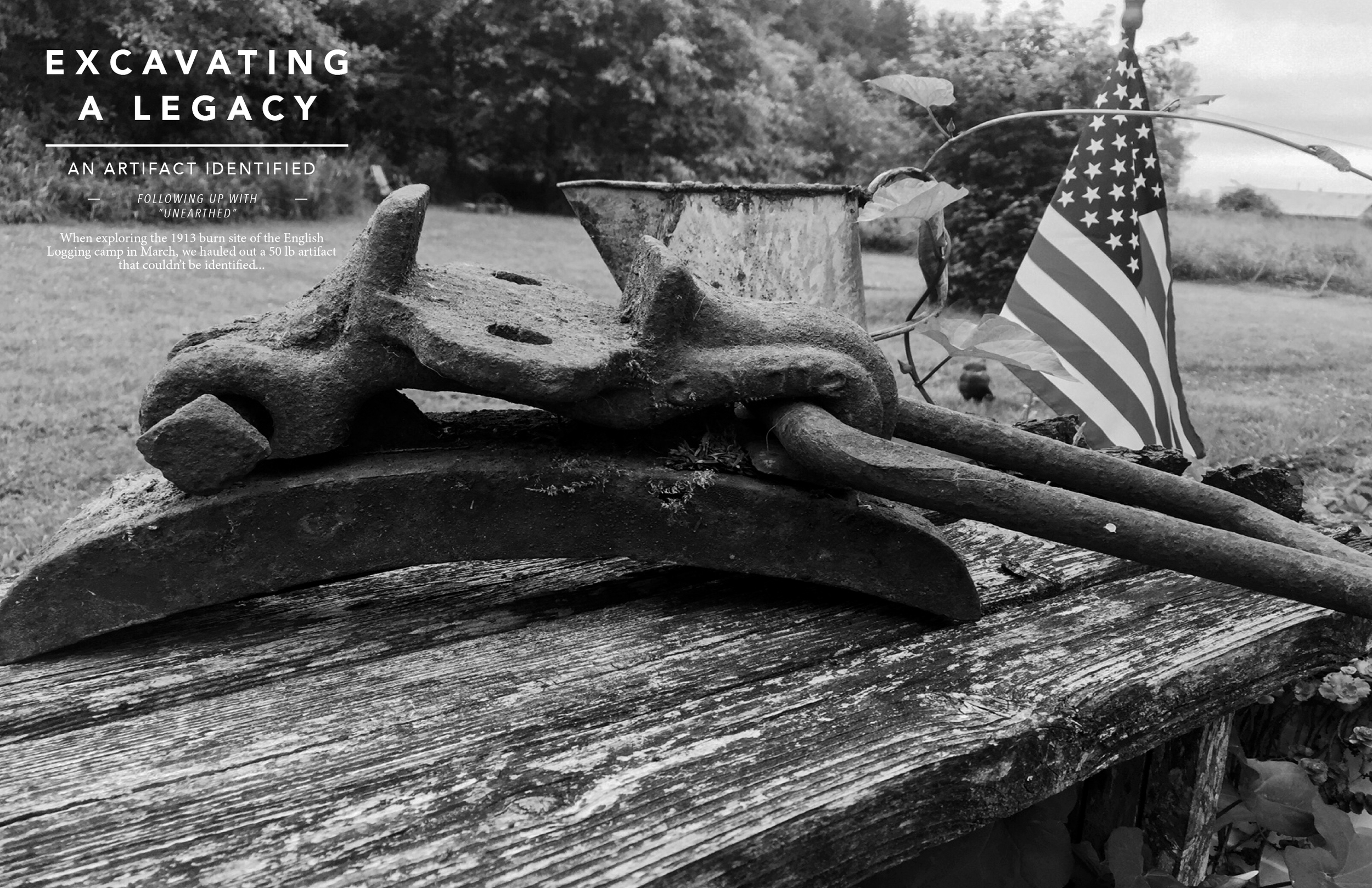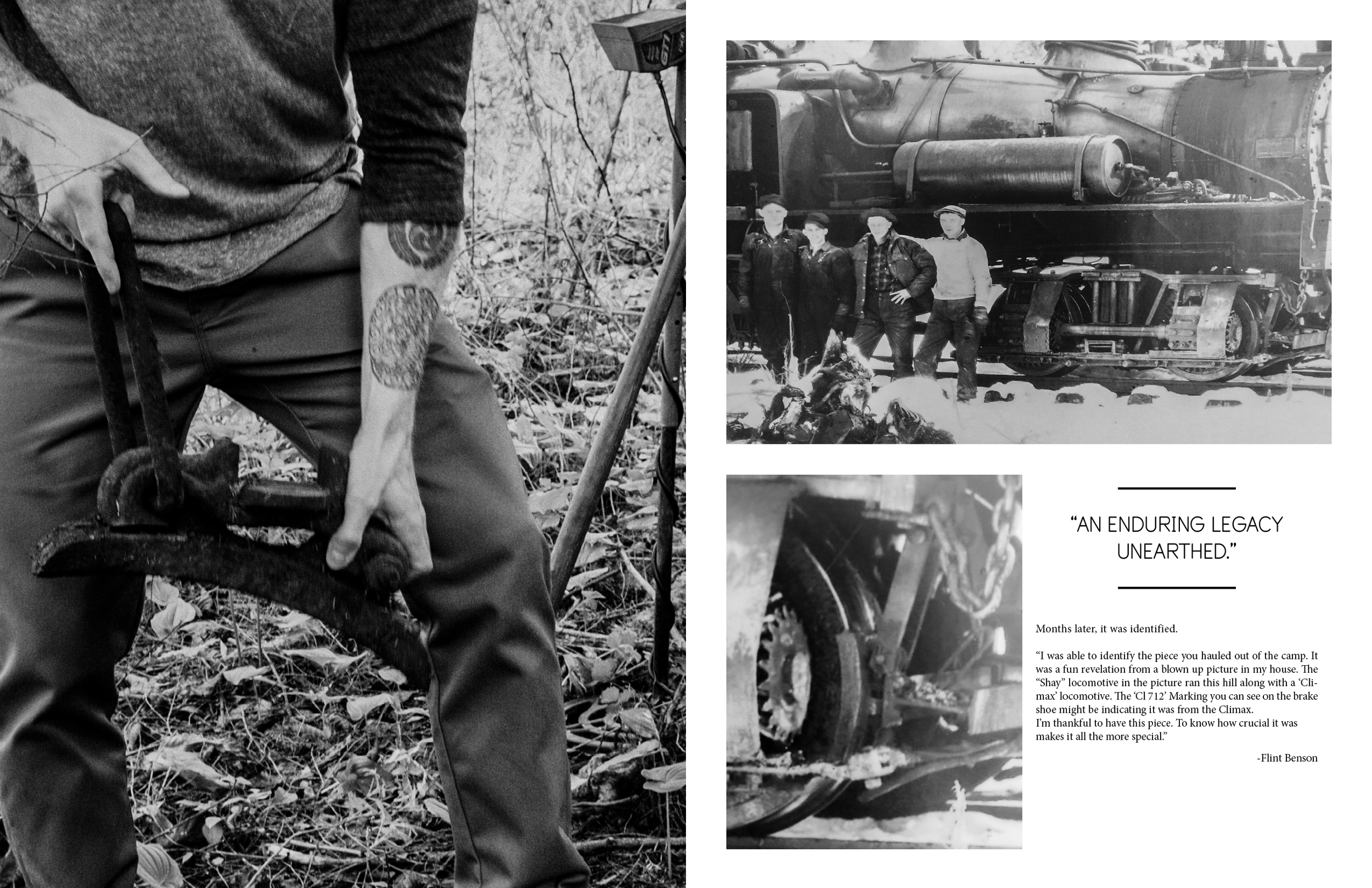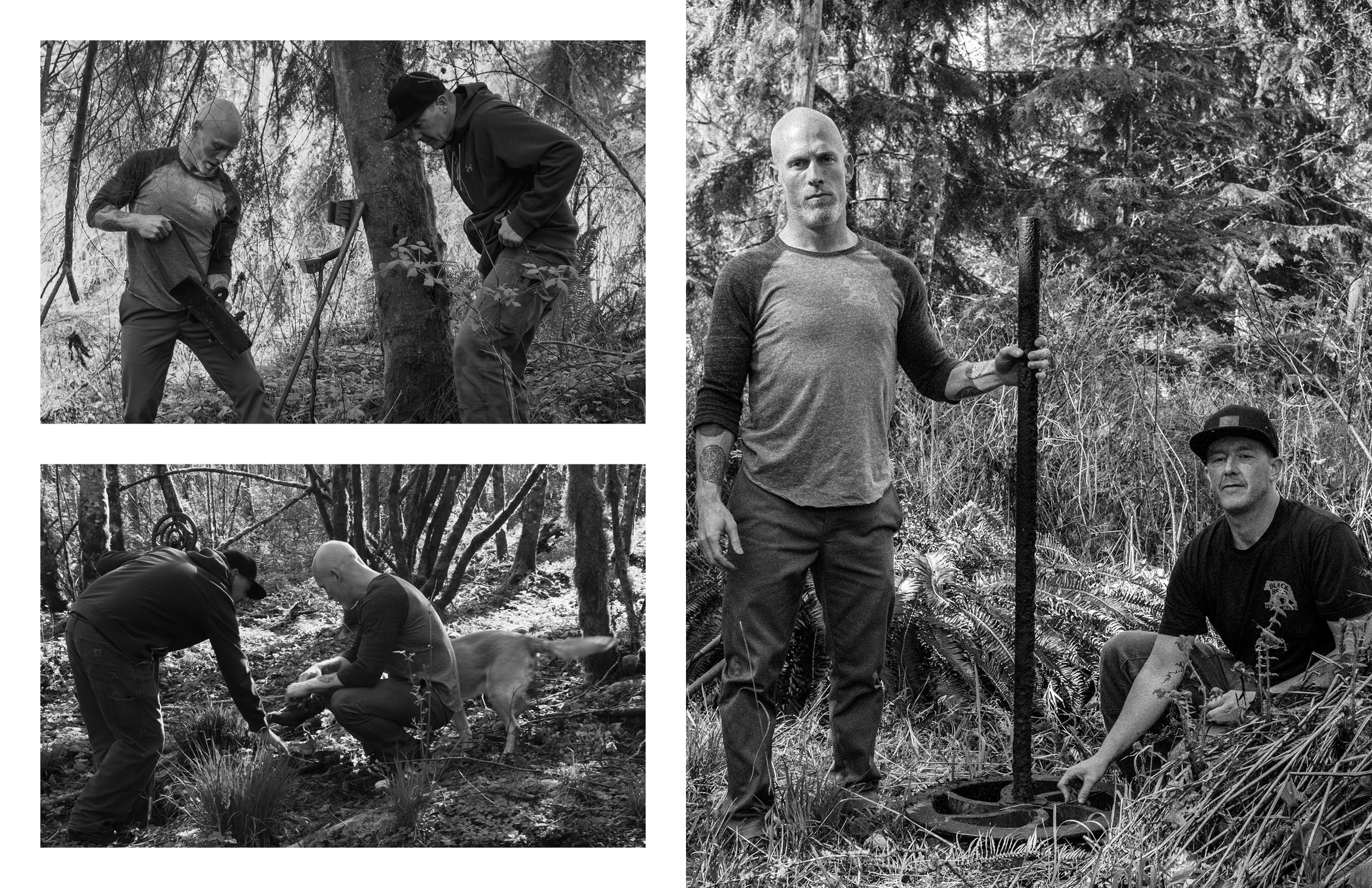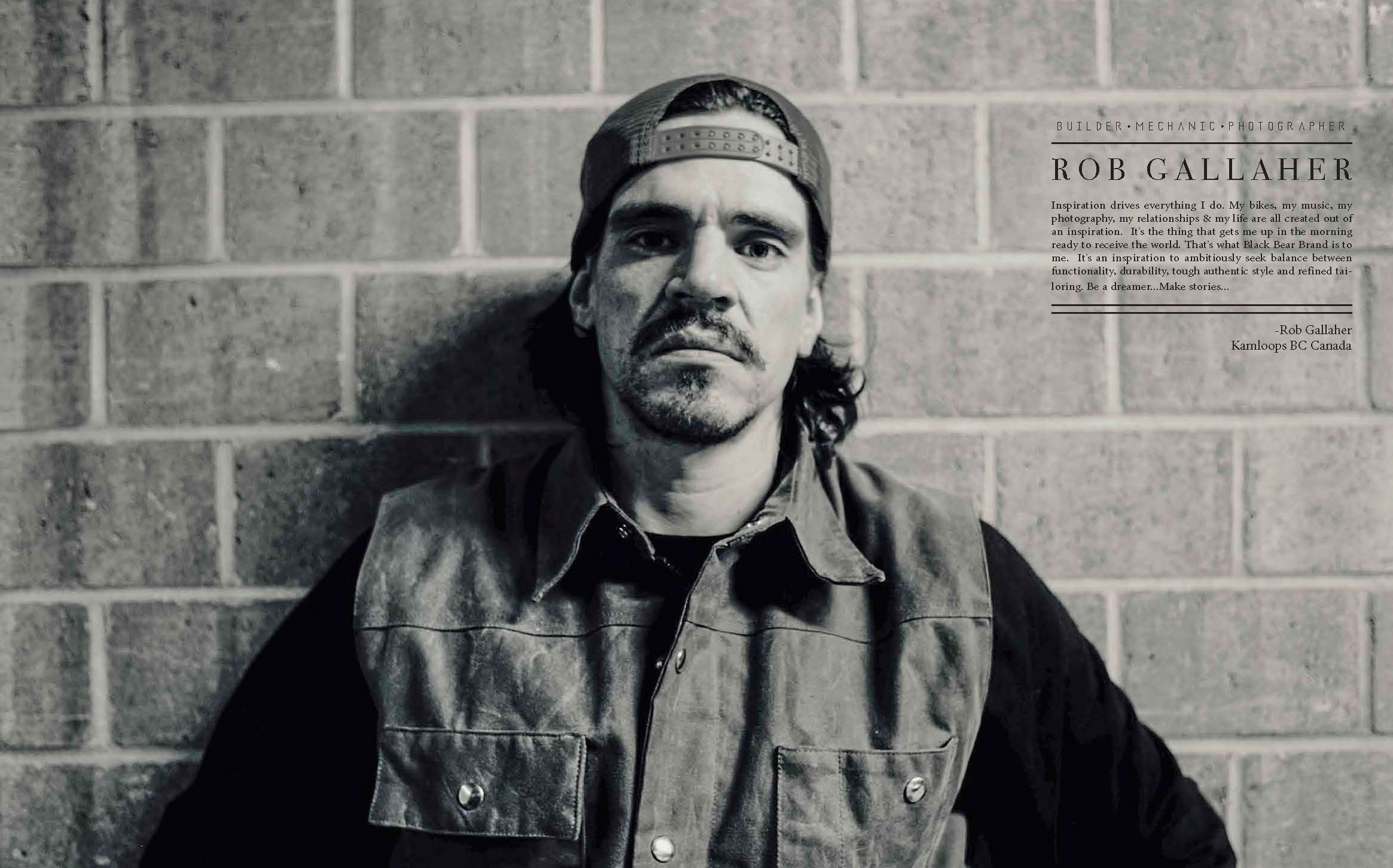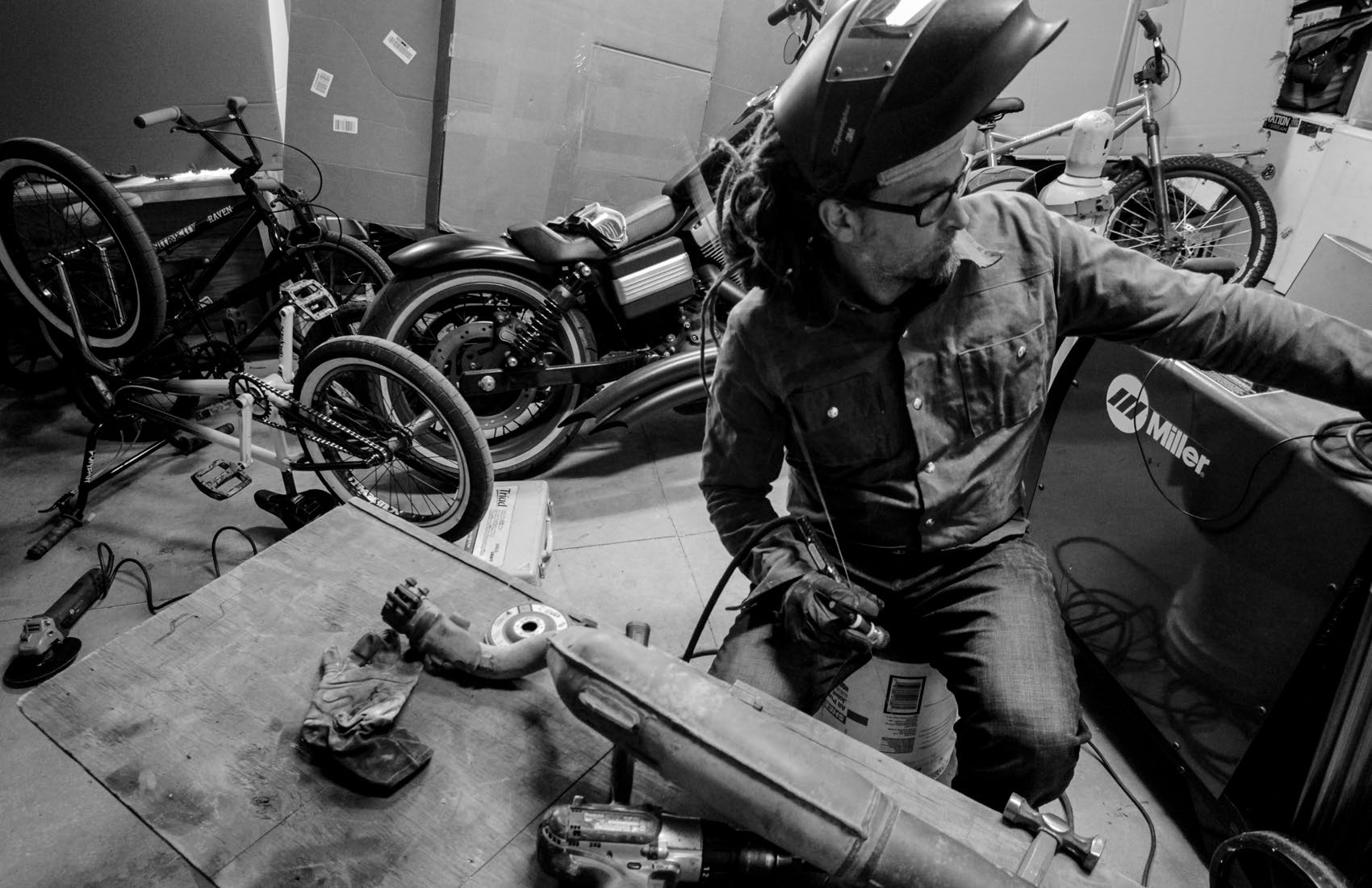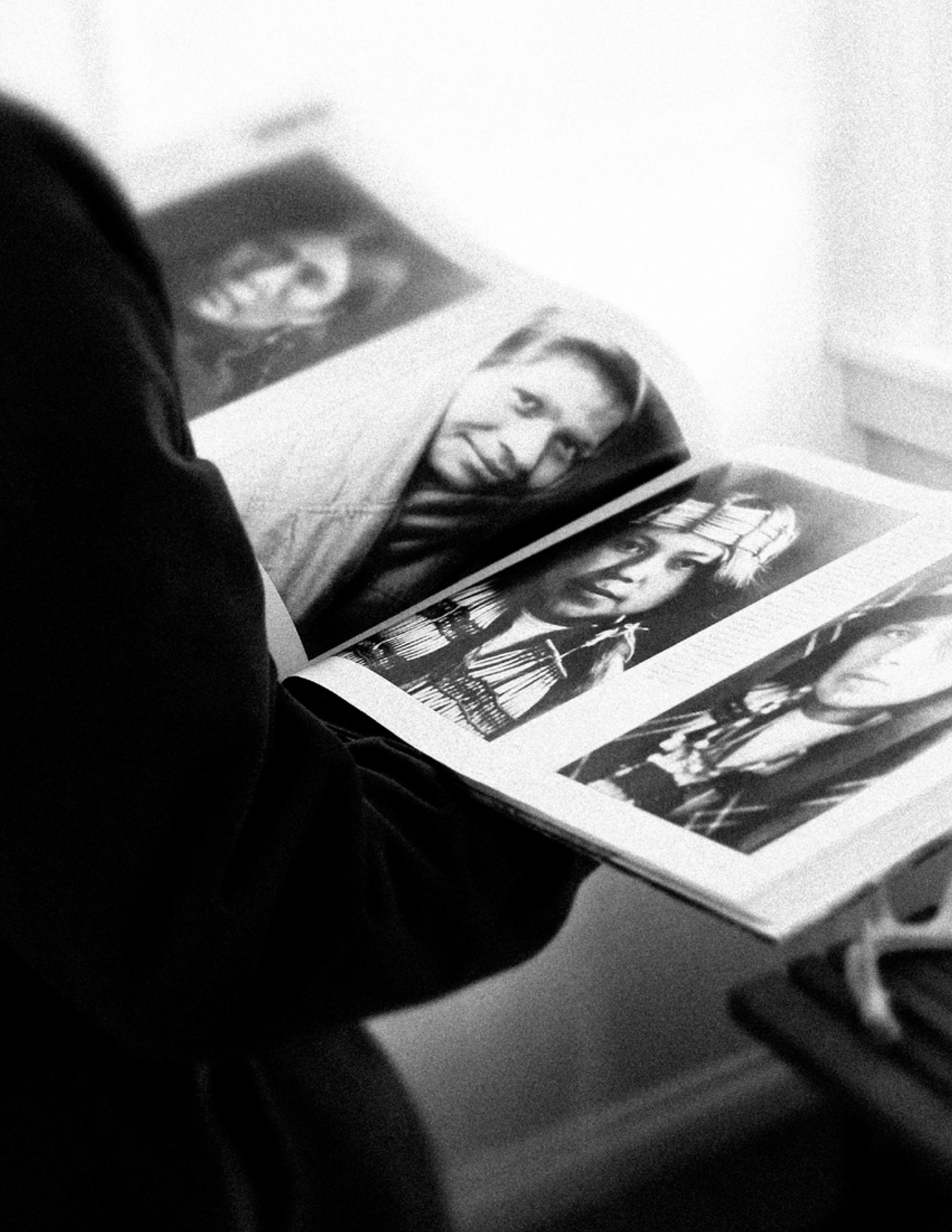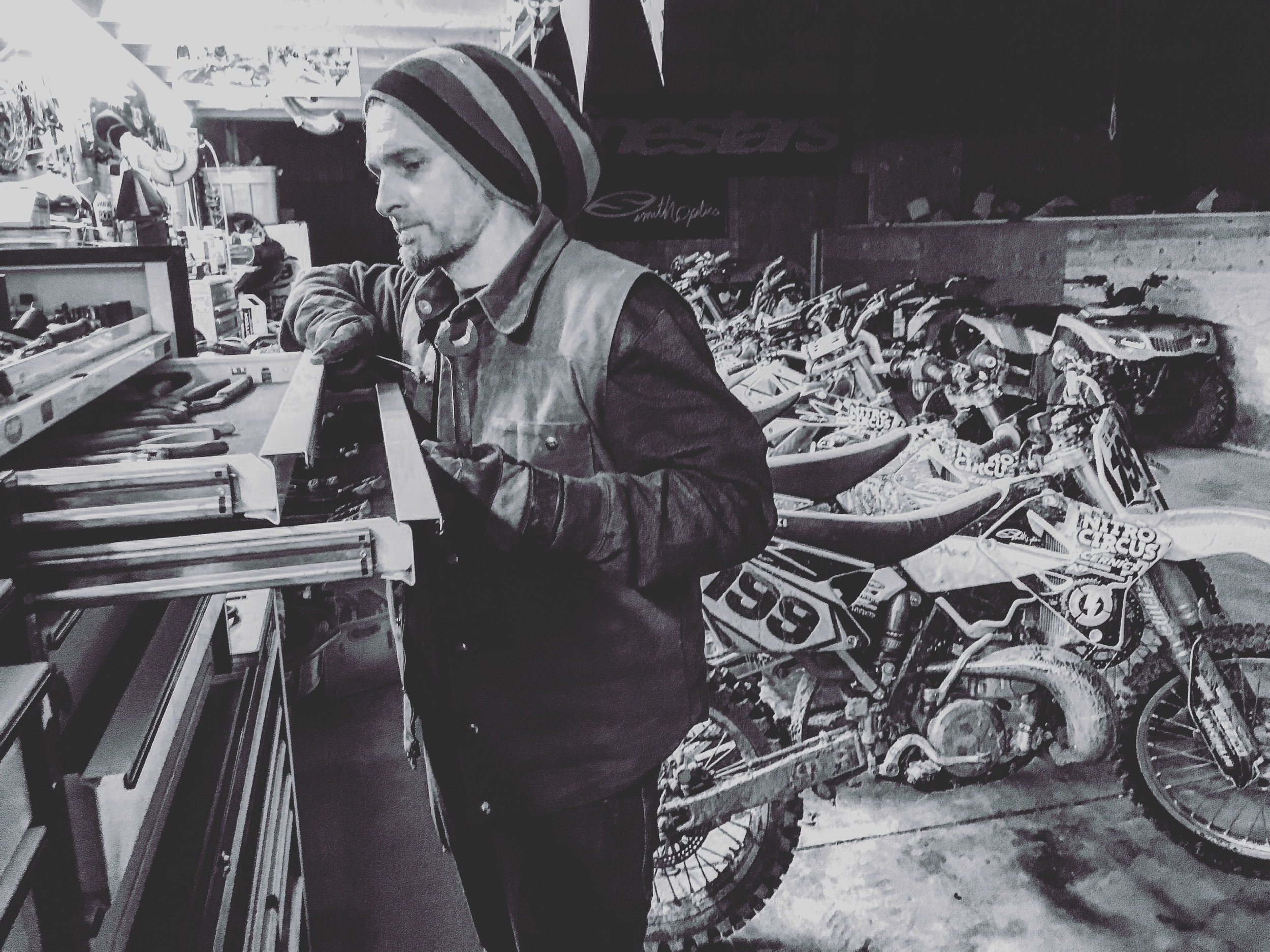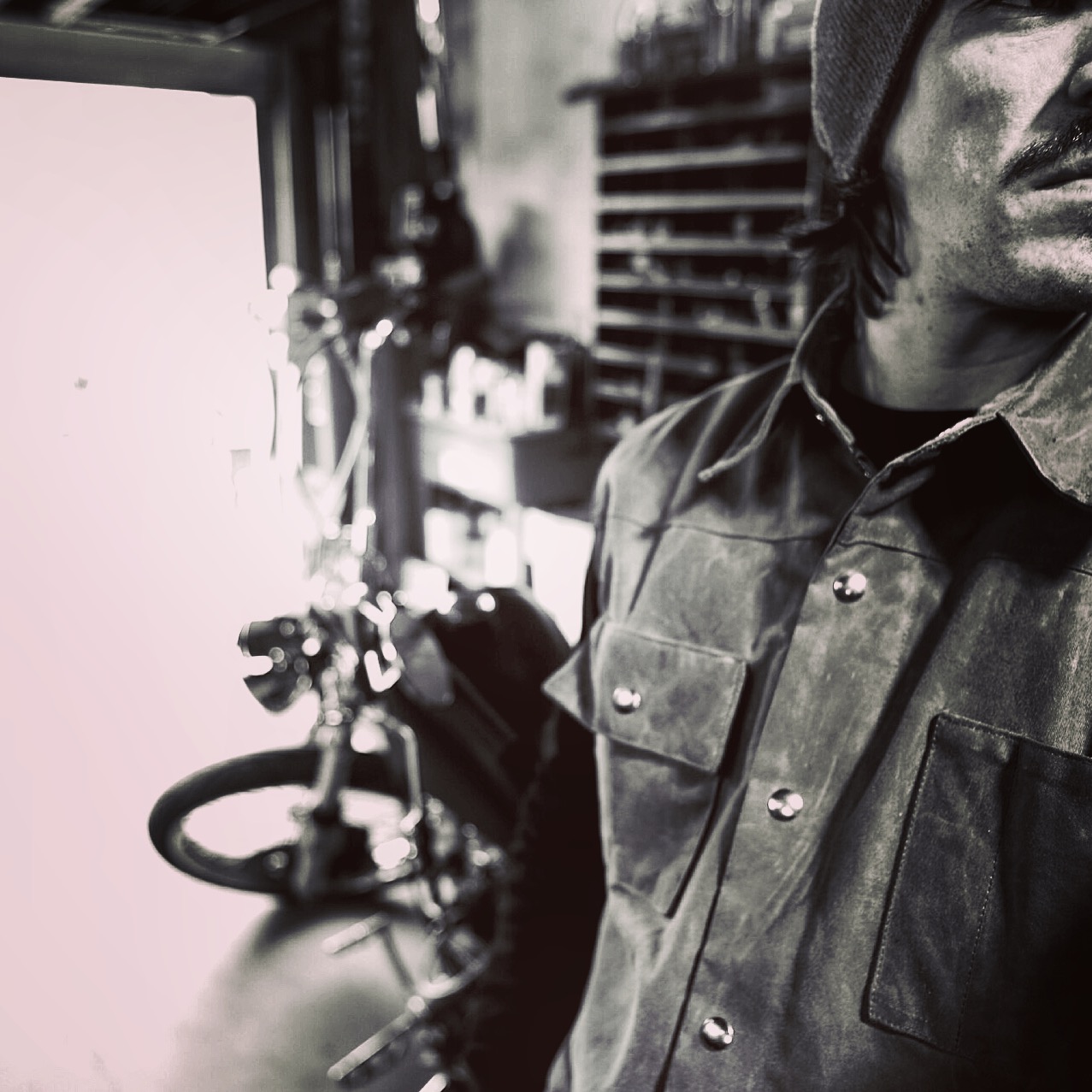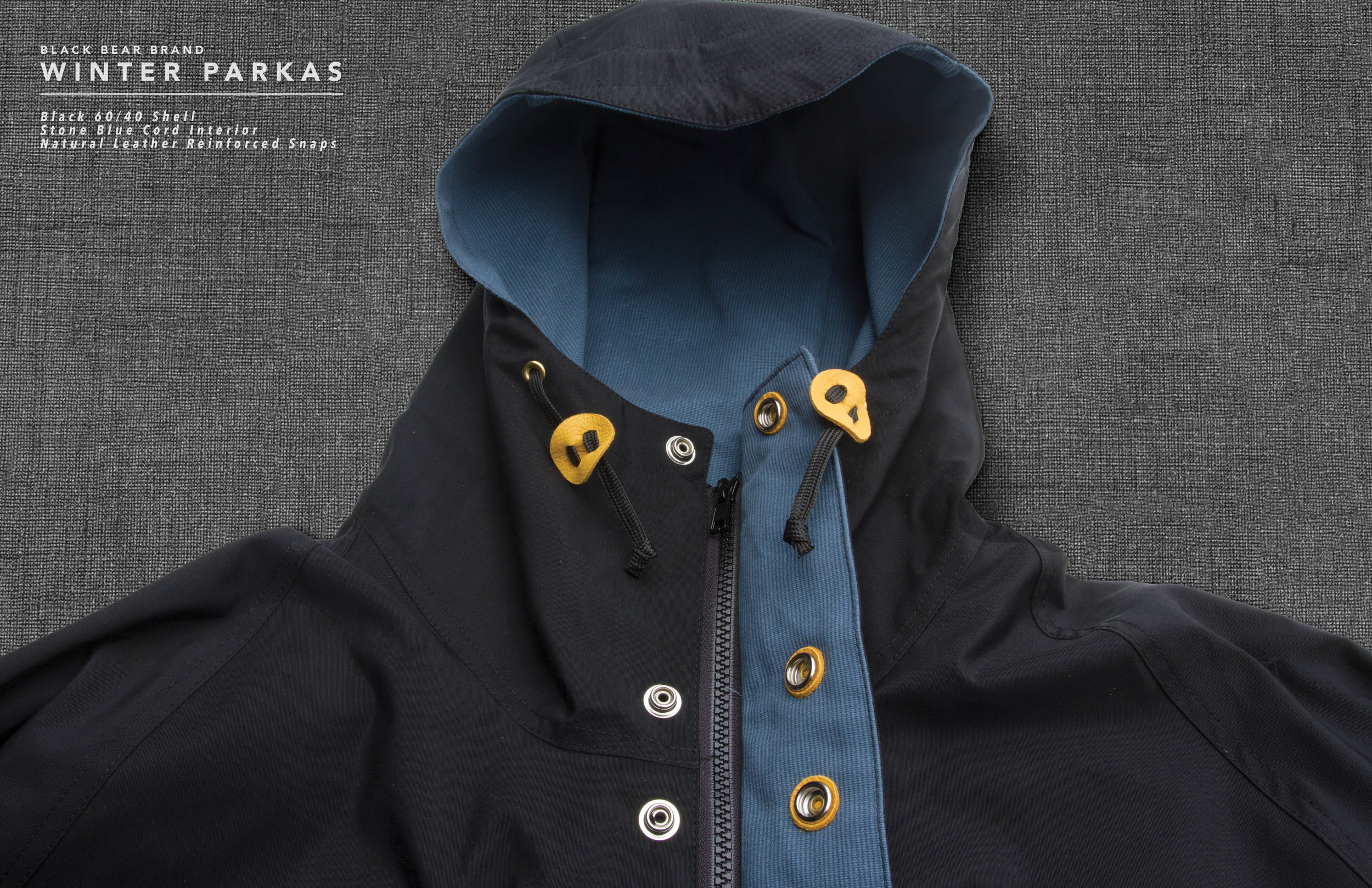
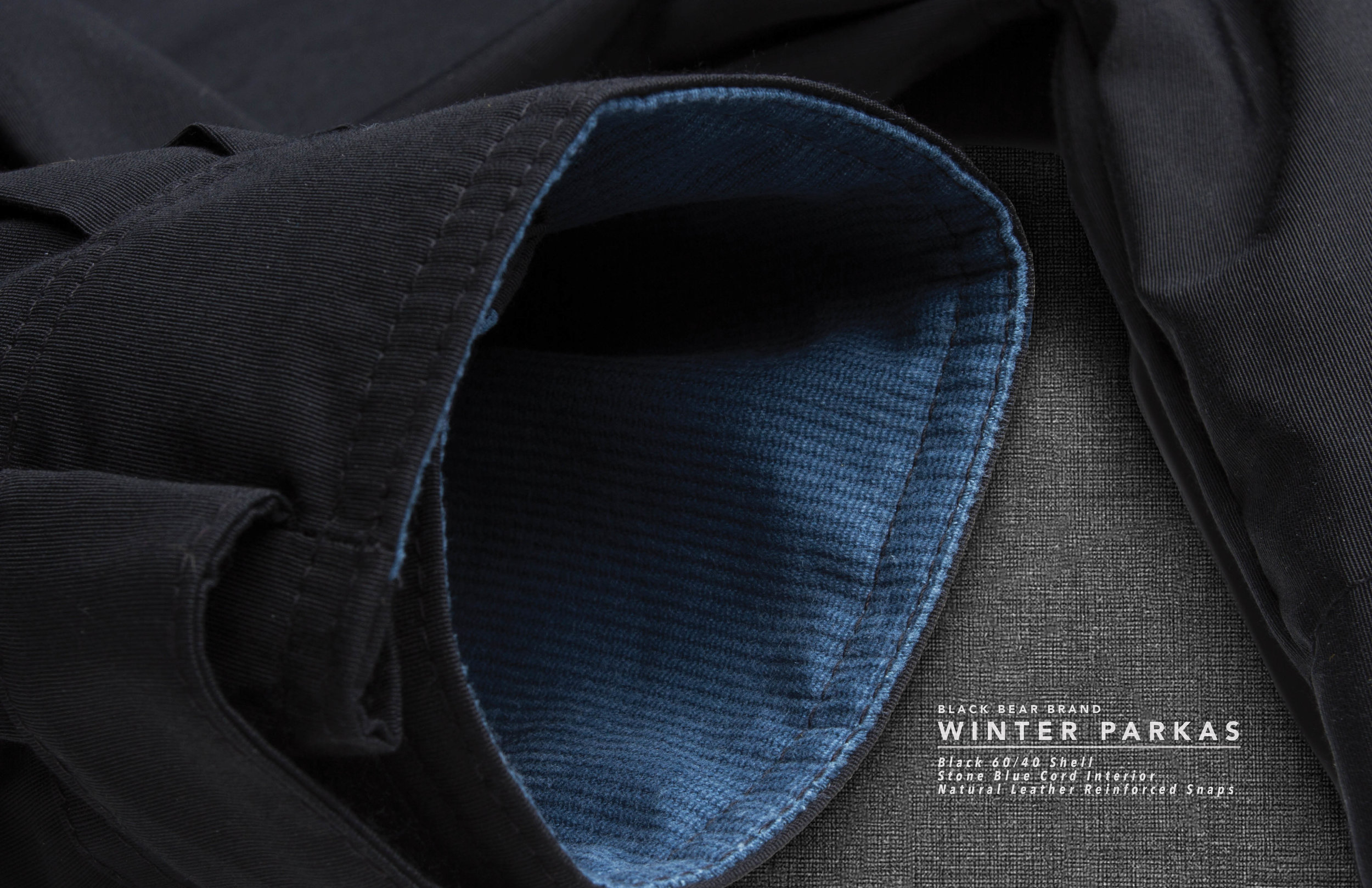

Black Bear Brand 2016/17 Winter Parka Collection
- Black 60/40 Shell; Stone Blue Corduroy Lined Hood; Black Nylon lined Body; Stone Blue Corduroy Accents; Leather reinforced snaps.
- Black 60/40 Shell; Khaki Corduroy Lined Hood; Black Nylon lined Body; Khaki Corduroy Accents; Leather reinforced snaps.
- Navy Duck Canvas Shell; Black Corduroy Lined Hood; Black Nylon lined Body; Black Corduroy Accents; Leather reinforced snaps.
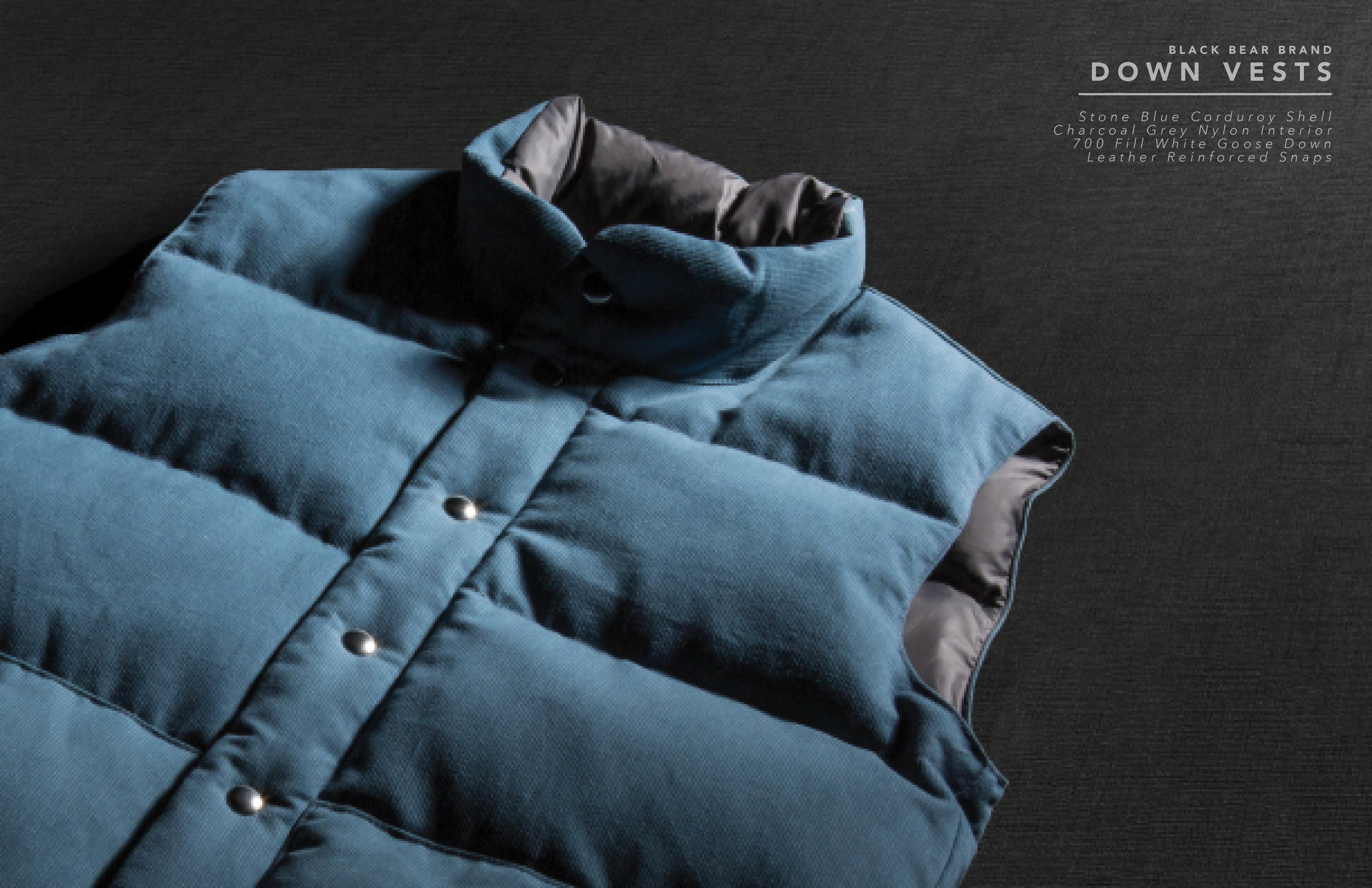
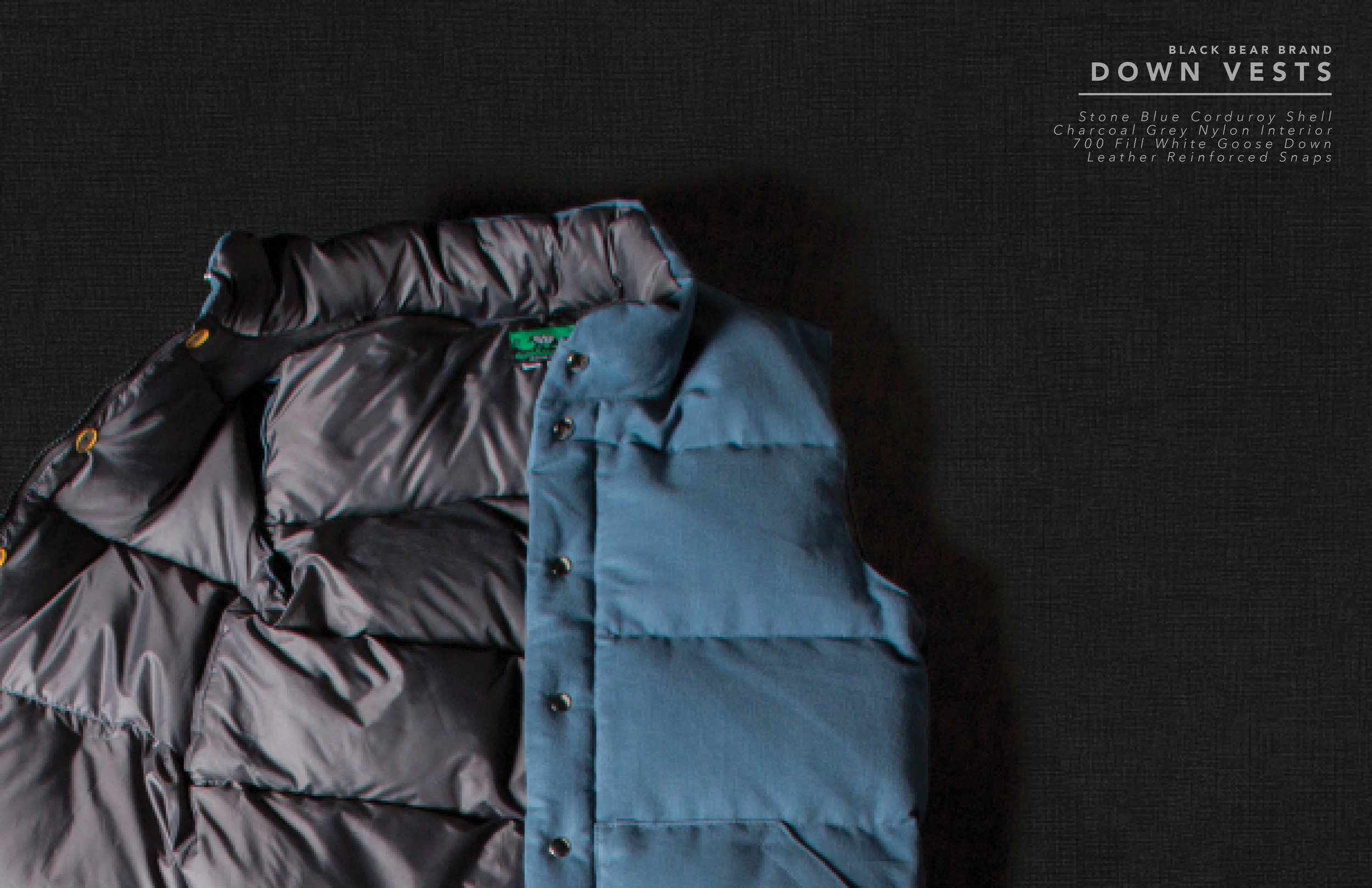

Black Bear Brand 2016/17 Winter Down Collection
Stone Blue Corduroy; Grey Nylon Liner; Leather Reinforced Snap
Khaki Corduroy; Black Nylon Liner; Leather Reinforced Snap
Navy Duck Canvas; Black Nylon Liner; Leather Reinforced Snap
Black 60/40; Khaki Nylon Liner; Leather Reinforced Snap
Black Bear Brand 2016/17 Winter Wool Collection
Grey Pendleton Wool; Black Nylon Liner; Black Corduroy Accents; Leather Reinforced Snaps
Navy Pendleton Wool; Grey Nylon Liner; Navy Corduroy Accents; Leather Reinforced Snap
Black Pendleton Wool; Navy Nylon Liner; Navy Corduroy Accents; Leather Reinforced Snaps
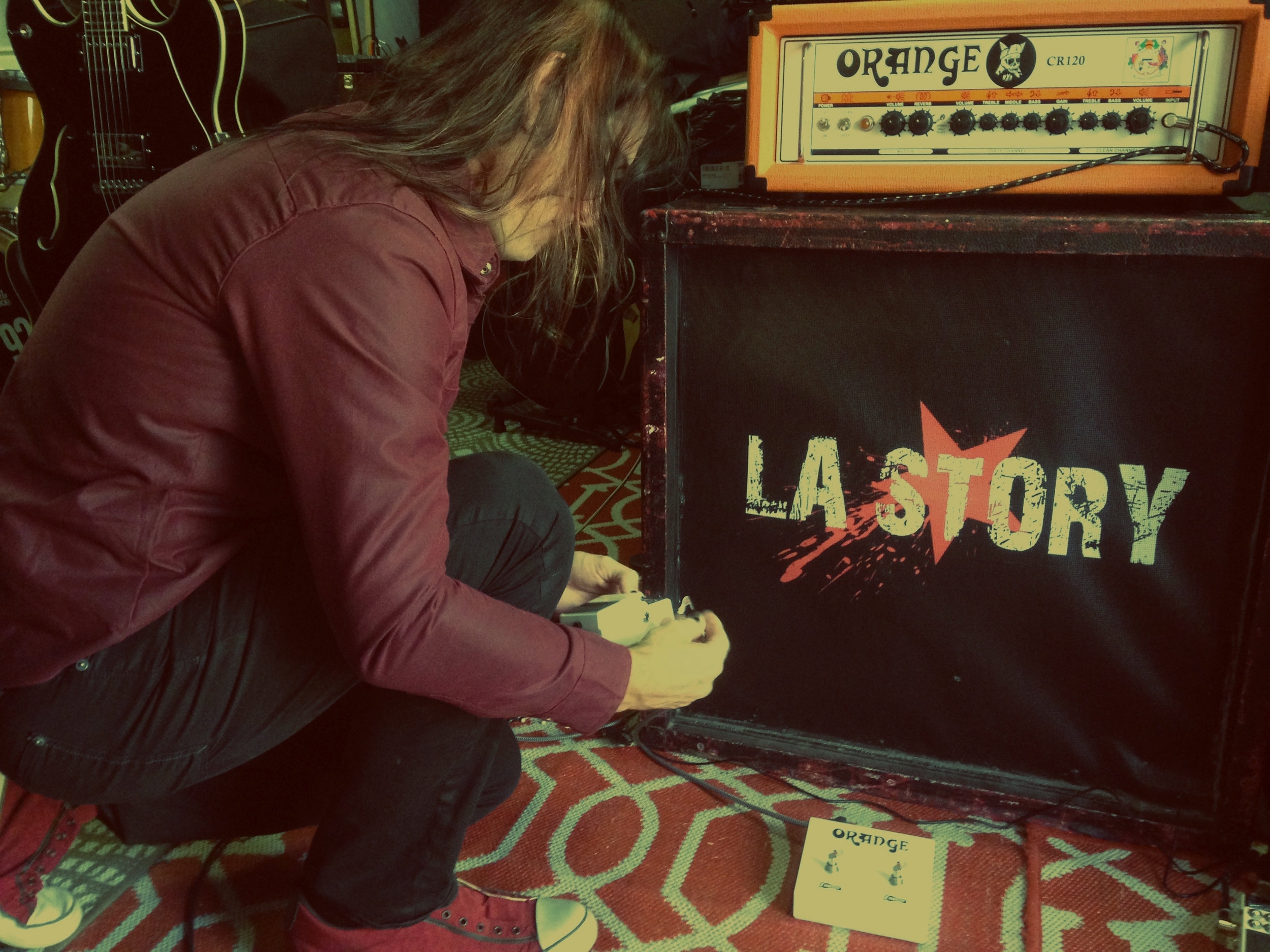
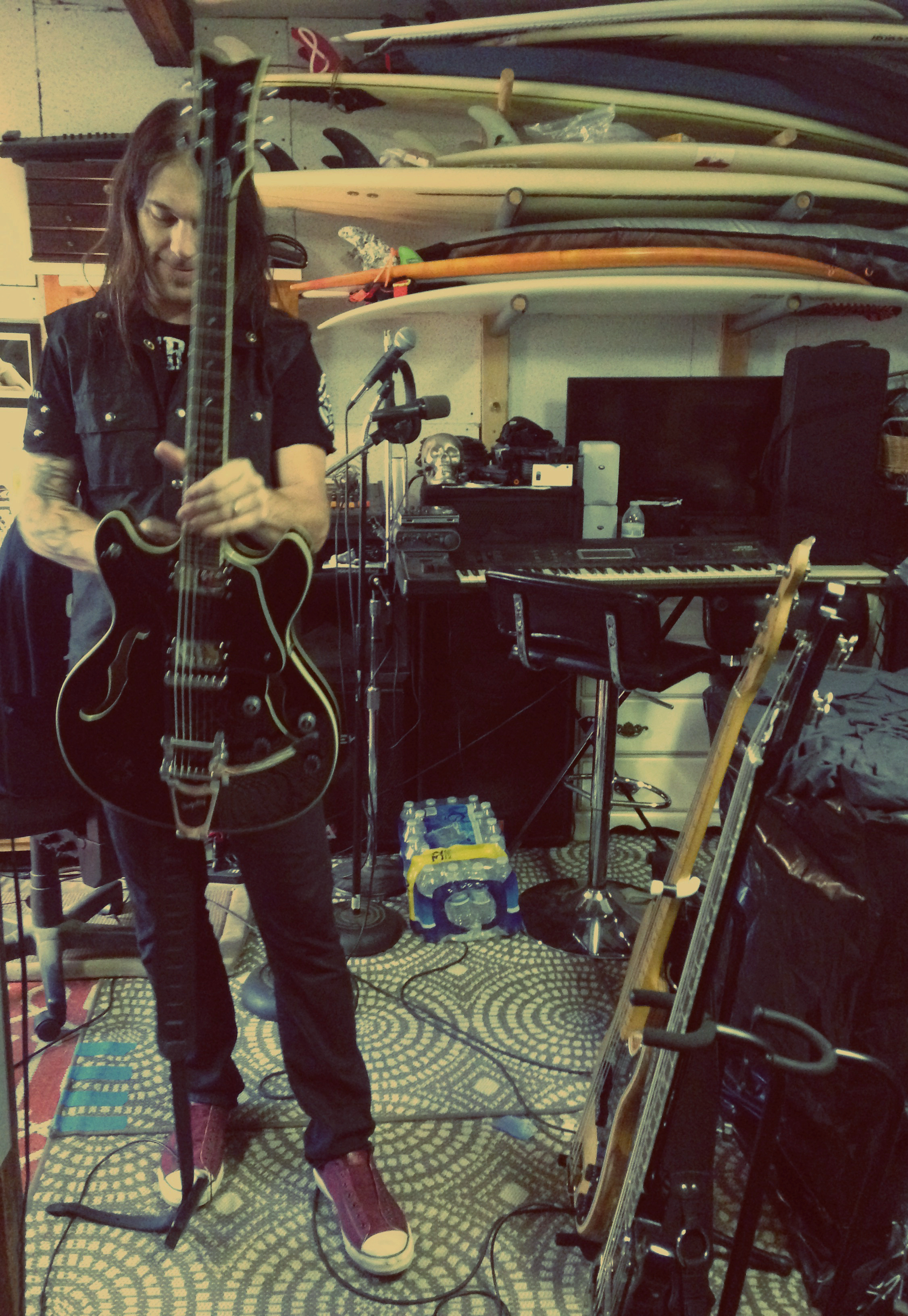
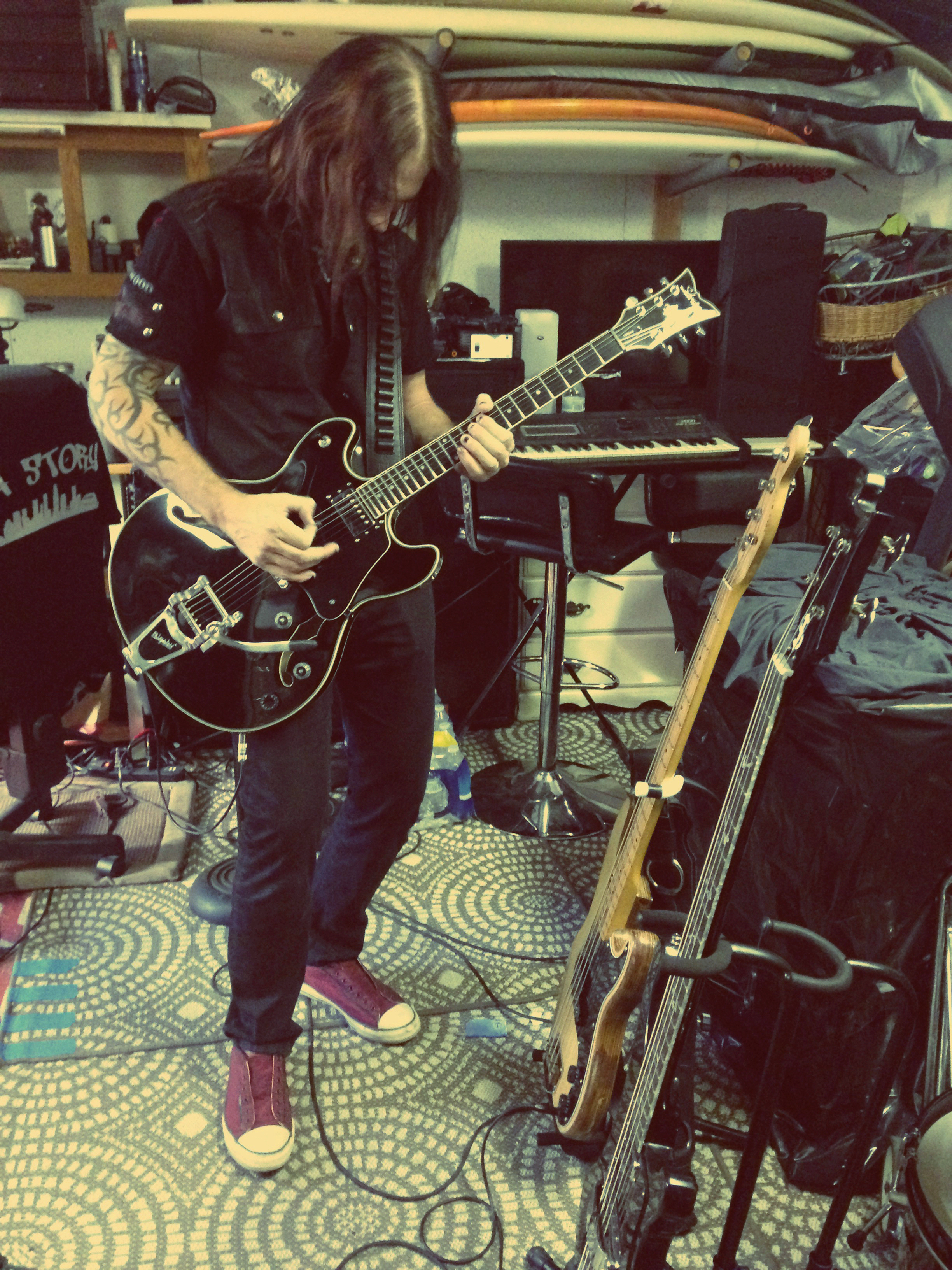
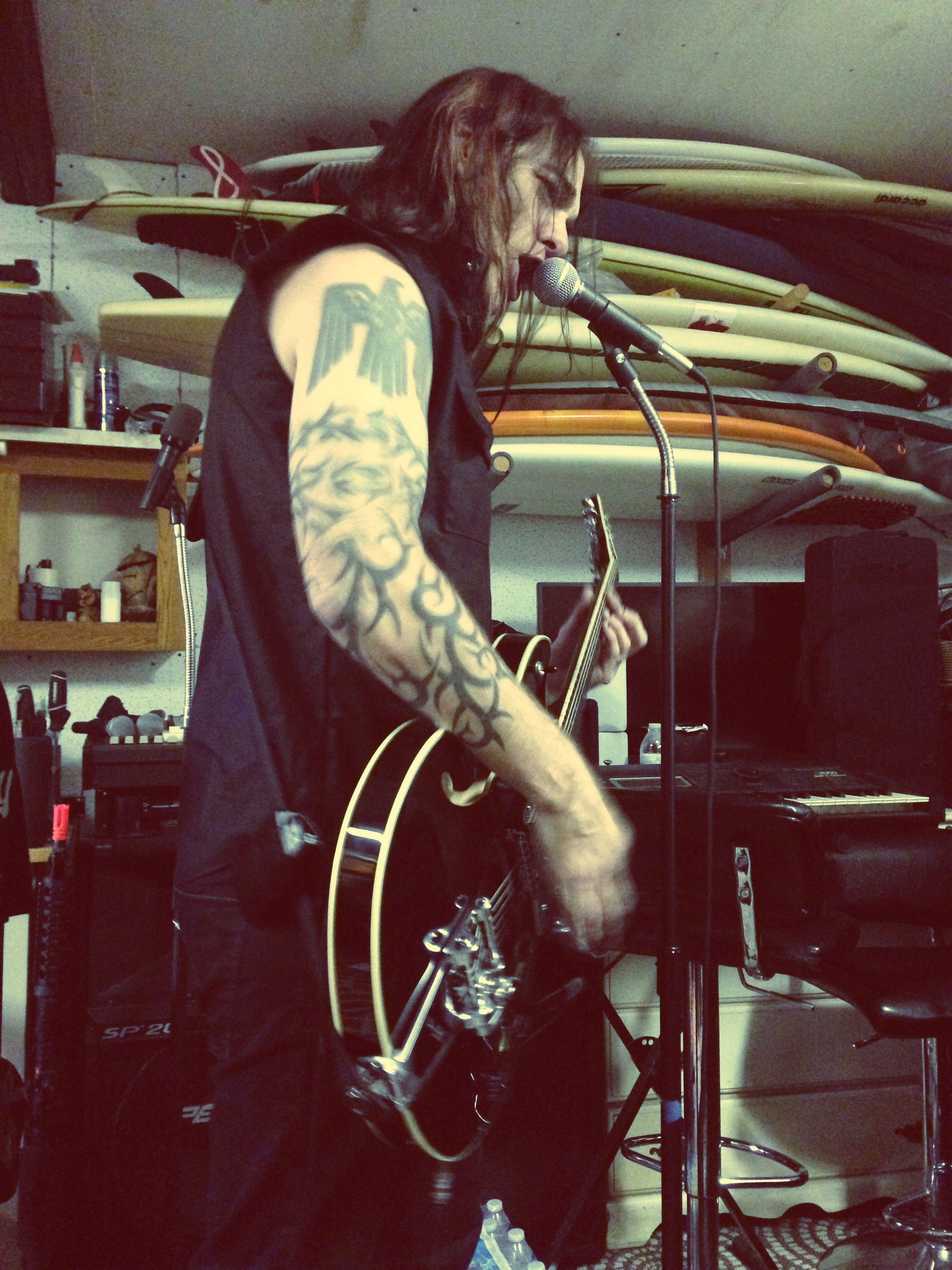
“Photos: Paul Kaiser”
A VISIT TO HORWEEN TANNERY



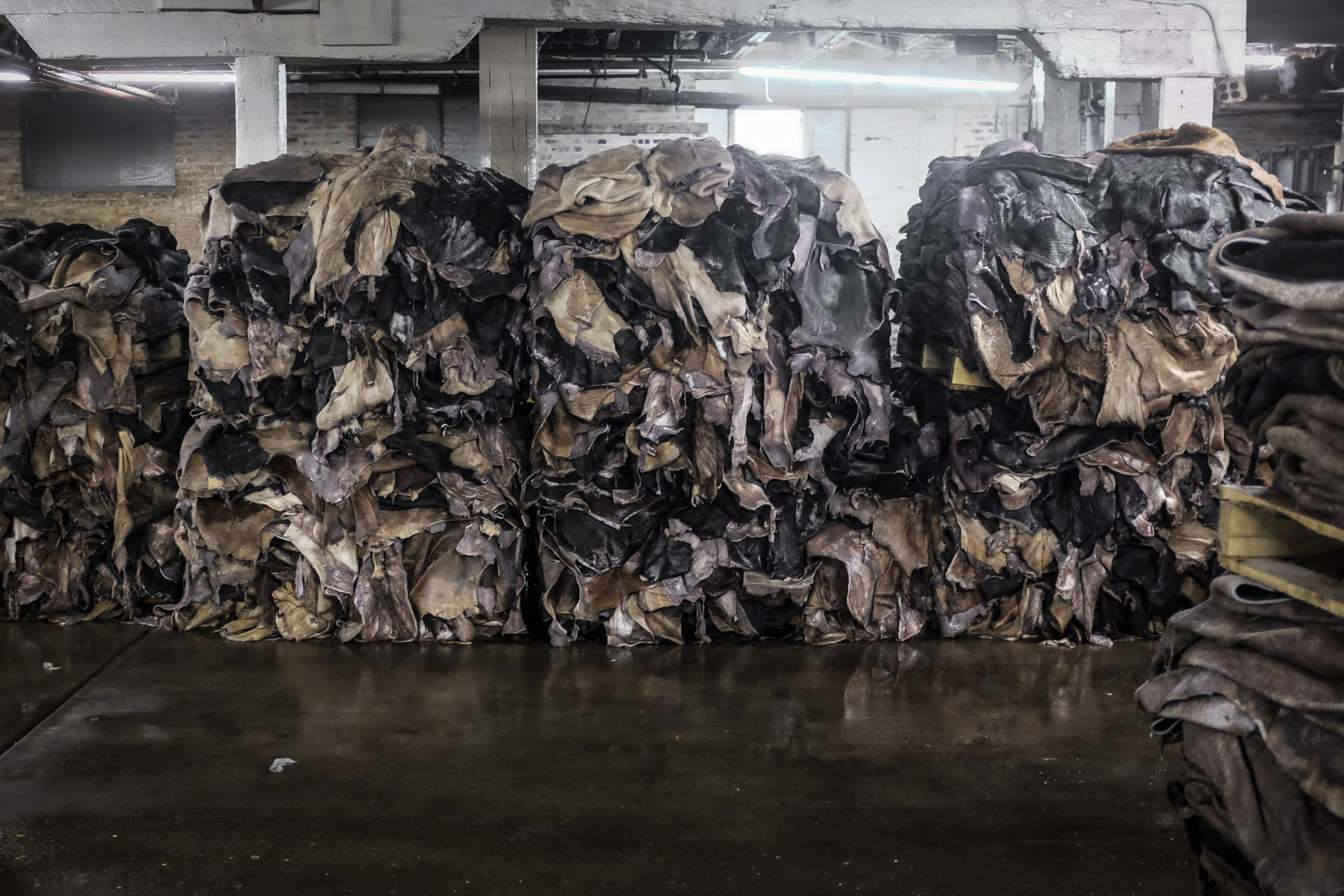

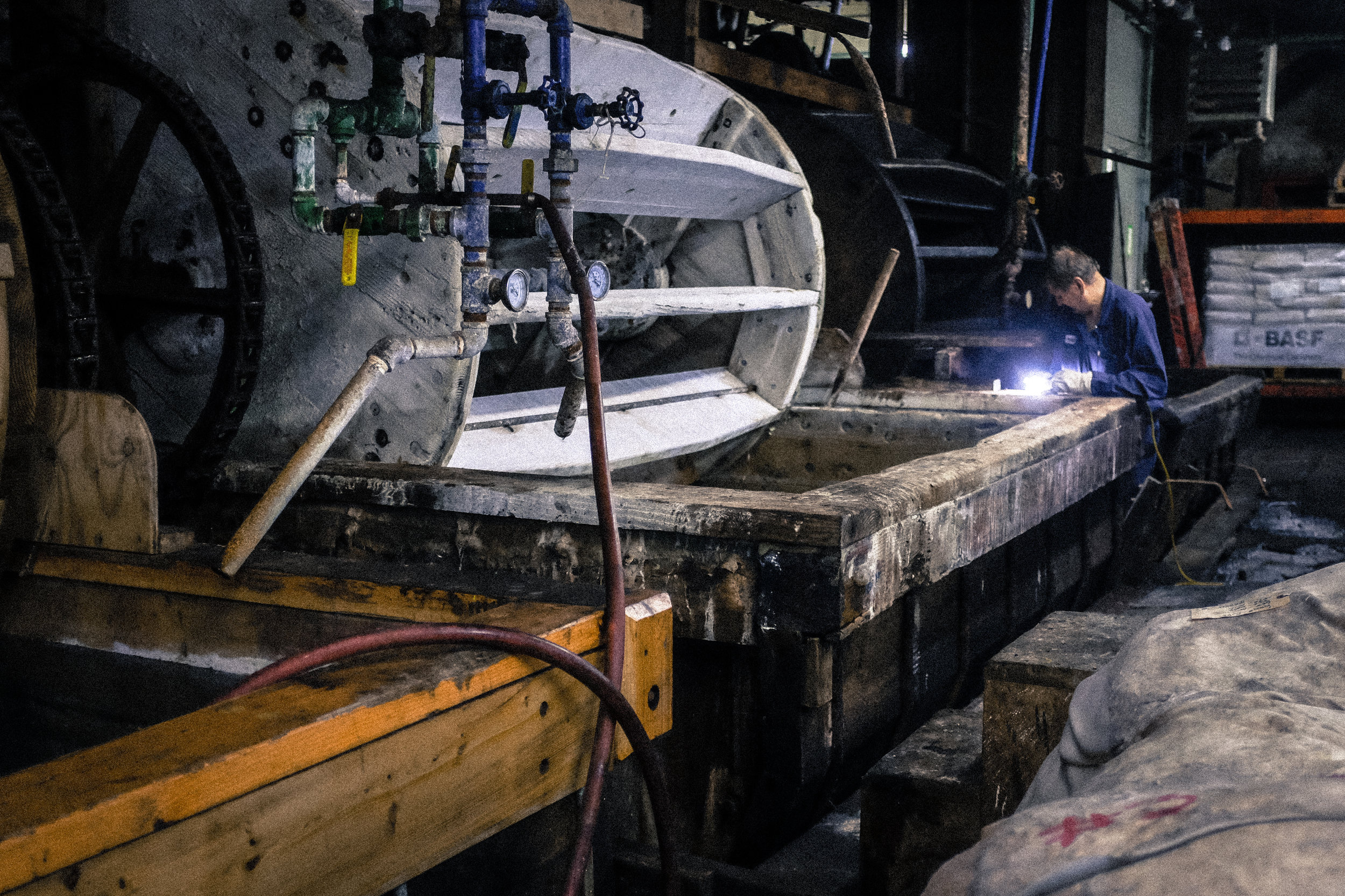


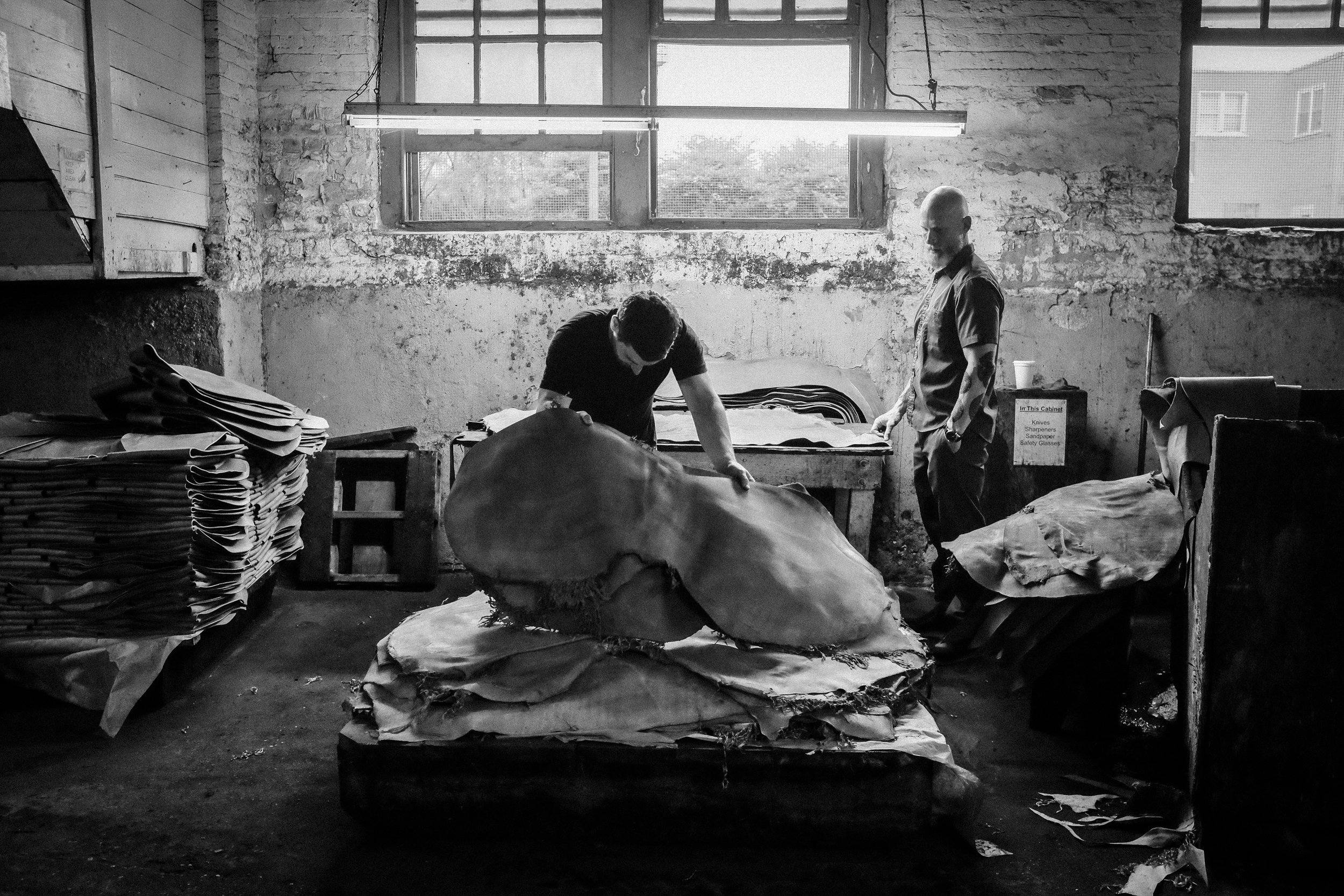
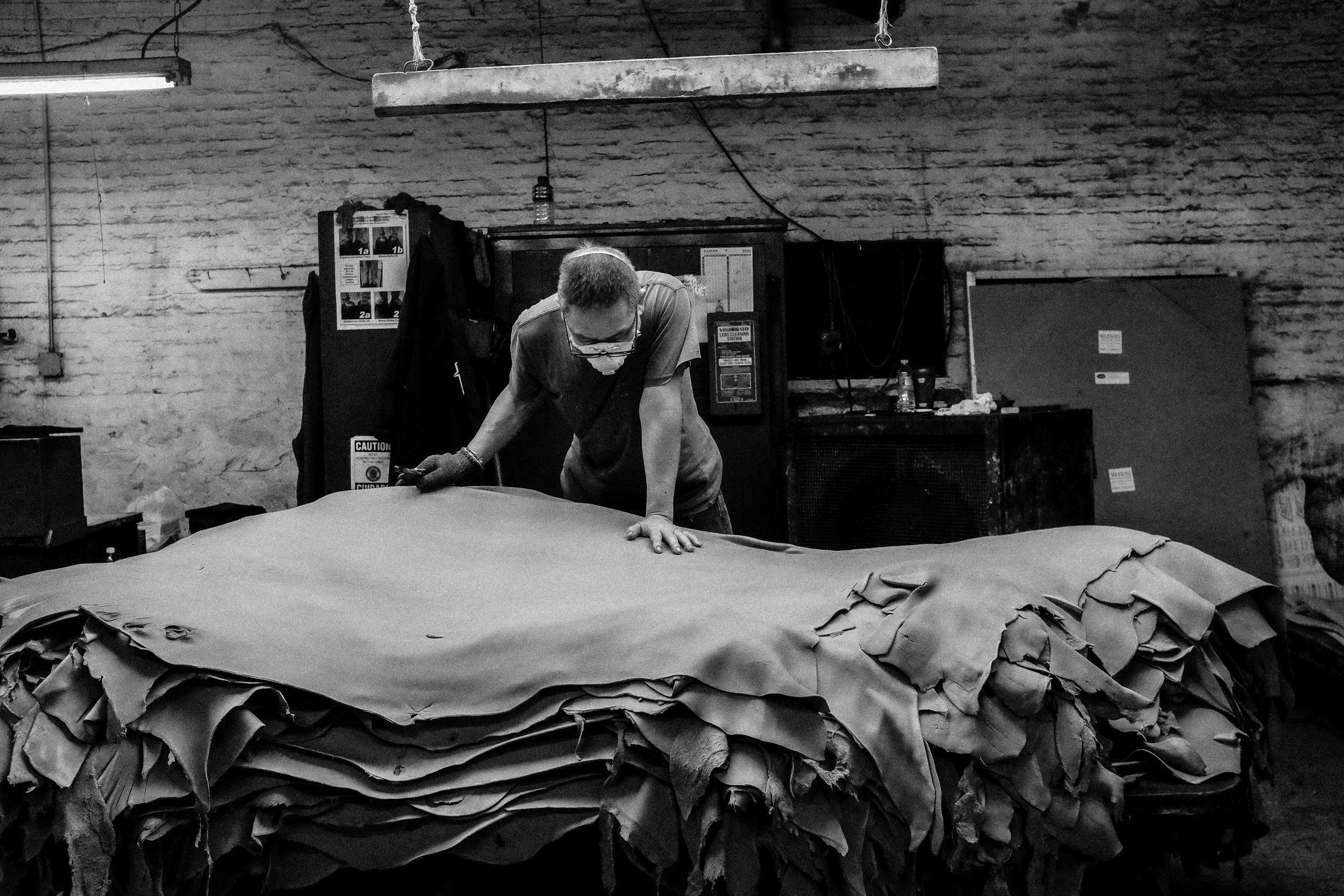
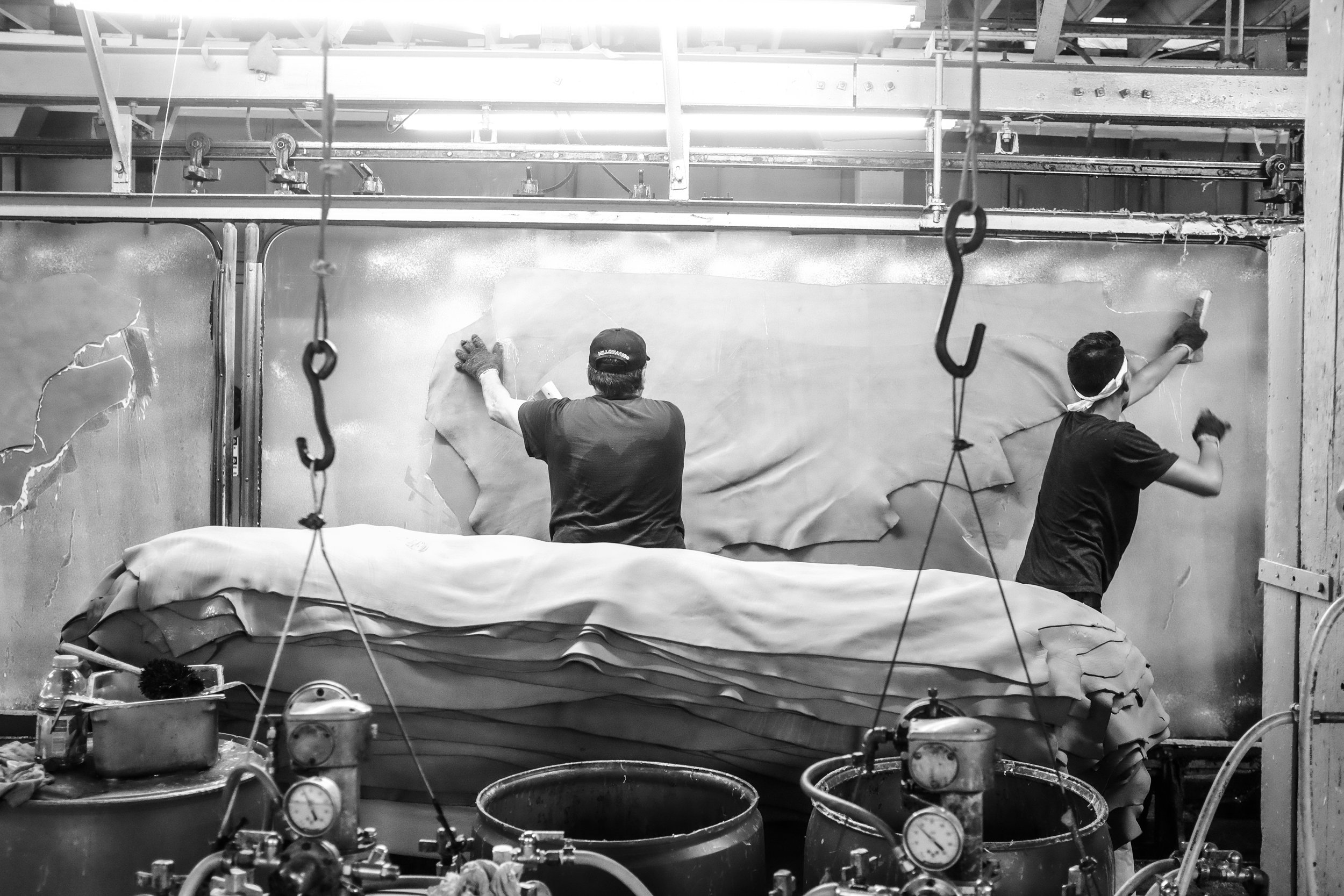
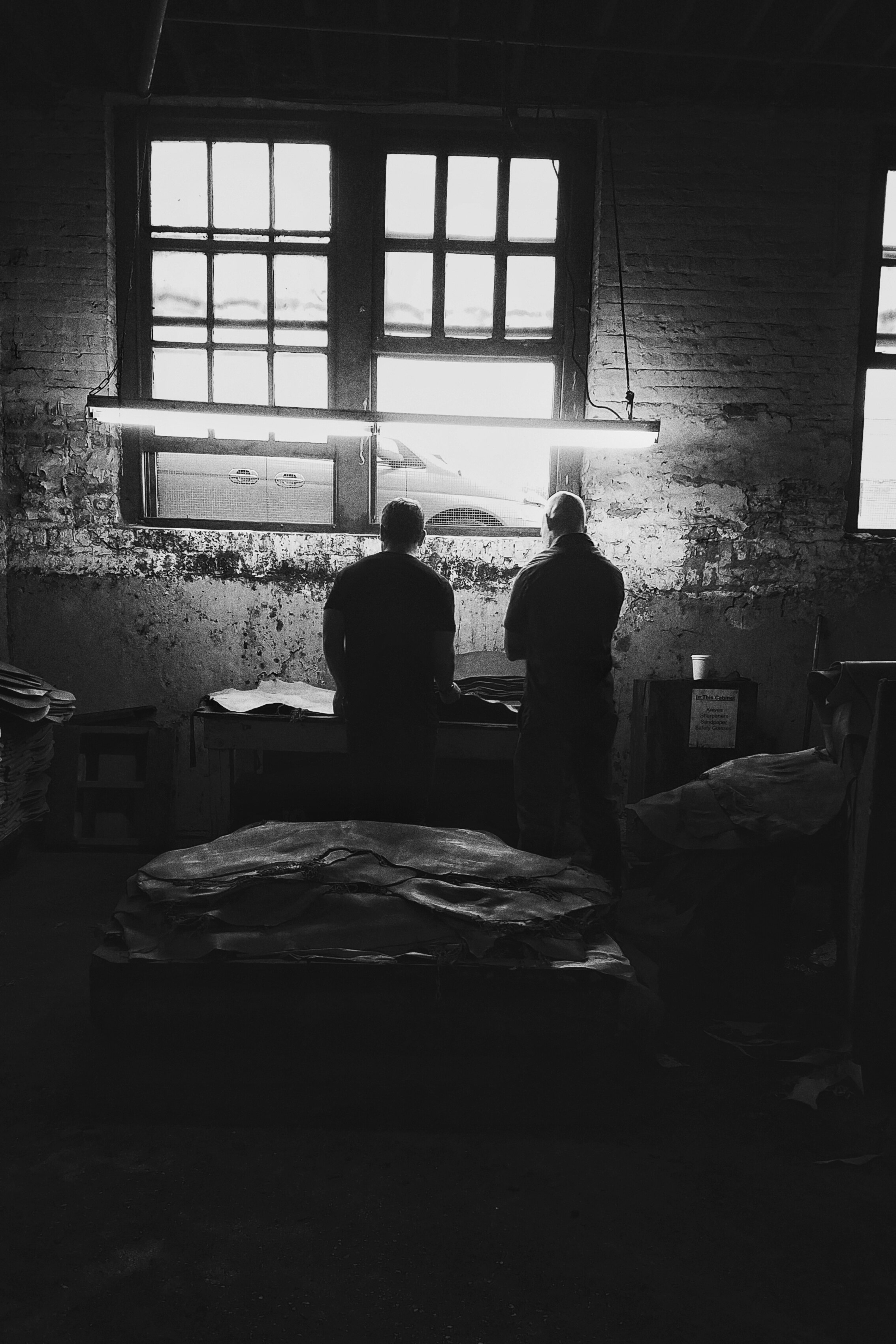


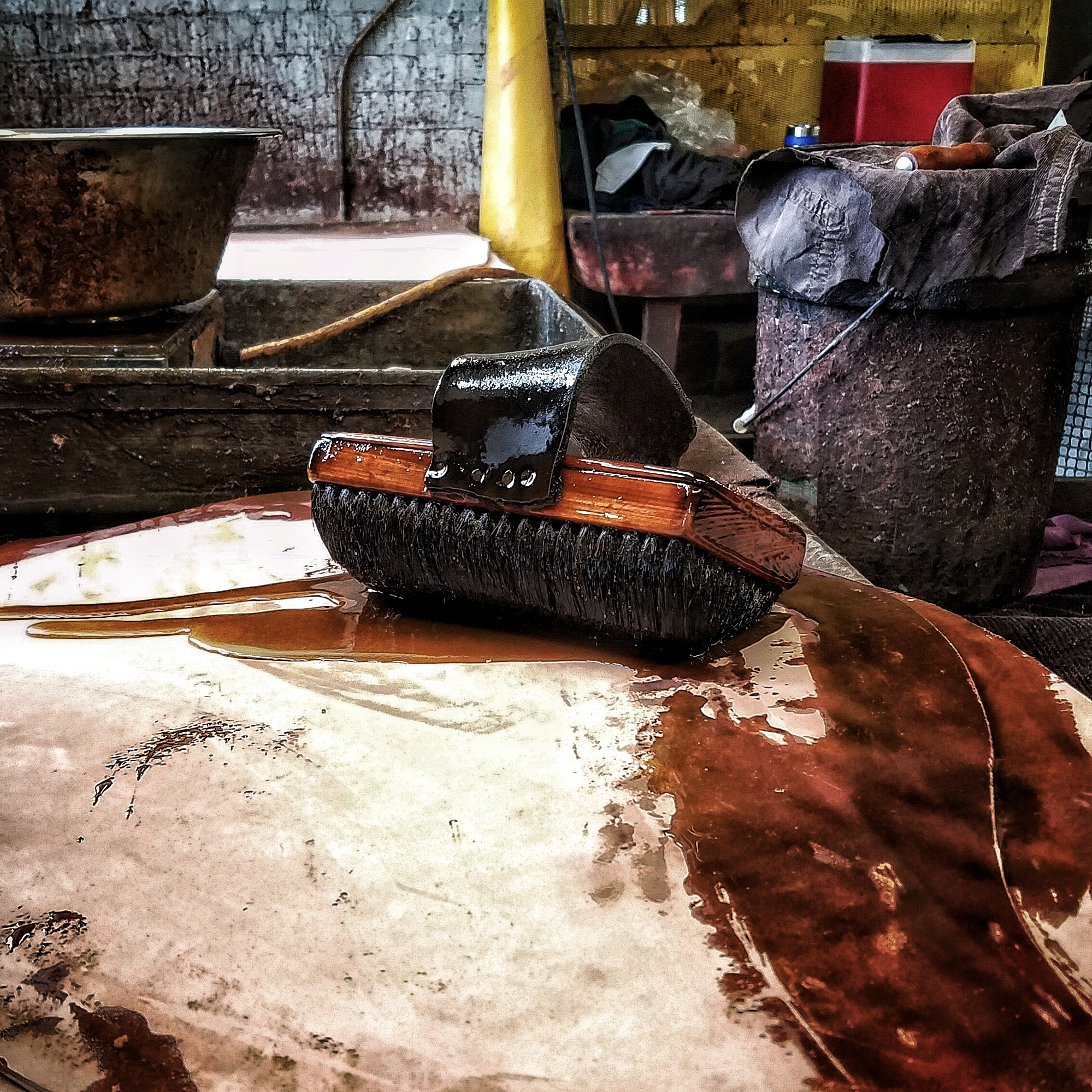

I find it is essential to our brand that we at Black Manufacturing be personally engaged in every step of the making of our products— concept, design, material selection, and production. When we work with others, we become closely familiar with those people. We become as involved as is possible with the people behind the process, behind making. They are often the heartbeat of what makes these products special. We also study and embrace the practices and the history of their companies. To us, the process of making is our story.
When I first began my exploration of leather I reached out to Horween Tannery knowing of their reputation for excellence. This relationship has developed into something I never could’ve imagined. I consider myself very fortunate for their guidance and expertise. We at Black Bear Brand strive to offer items of the highest quality, and the people at Horween Leather Co. are a great partner to us on our journey.
We've worked with Horween on several Black Bear Brand products, a visit was past due. So when an opportunity recently came about, I was excited to take it. The timing was perfect. We’d just completed the samples of each of our 4 upcoming boots, Nick and I were working on a design for a Horween shirt, and my friend (and Black Bear Brand Photographer) Chad Lyons also happened to be passing through the Midwest. The stars had aligned, and so I shot off for Chicago.
The Horween Tannery is located in an industrial area of North Chicago. When I got there that morning, I was taken away by their presence there. The Horween family has been operating here through 5 generations and for more than a century. The tannery is imposing. It’s all brick, with an unassuming, plain wood door for the entrance. There is a small sign outside that is the only indication you’re at the right spot. The door opens to a small wood stairway that leads to a small waiting room. Everything about the entrance to the tannery is right down to business. It’s direct and purposeful, there is nothing added for flair. There are two church style pews facing each other and a dumbwaiter door where the receptionist greets you. I could feel the history here as I sat waiting; the essence of a place like Horween can’t be replicated.
Nick grabbed us out of the waiting room and off we went. He took us through each step of the tanning. We started in the receiving area, where the hides—hair and all—are delivered by truck. The attention to detail was immediately apparent. Every single hide is closely gone over and separated. The separated hides are then sent off with a specific tanning method, and even customer, in mind. Every detail is taken into consideration for the sake of quality.
The tannery nearly overwhelms the senses. The moment I walked in the door I was overtaken by a scent that brought to mind an old scotch I used to drink. Walking into the receiving room, where the natural hides come off of the trucks, a heavy, deathly type of smell fills the air. During waxing, oiling, and glazing, you pass pungent odors and then smoothing scents. And the classic smell of leather is pervasive. Some leather types require a good amount of heat, and there are different liquids throughout the place. All these things happening together produce create an actual sensory overload.
Each step of the tanning method is involved and they do it at a scale that’s impressive. The Horween Tannery is the real deal, they have been doing it forever and have always stayed true to who they are. In fact, there are actually chalkboards hanging on walls with recipes written on them that look as if they could’ve been there since the beginning. I believe it’s rare to be able to hang onto all the specialness of doing something the same way, and at such an exceptional level for so long, never losing your true character by giving into technology or fads. Horween Leather Company is timeless. That’s not by intention, or by a marketing design. Instead, it’s because that's really how true they are. They simply do what they know works, and by just doing that simple thing, they are totally killer.
I feel a connection to the Horween approach. They have a connection to their process and their product that is unmatched; its motivating, inspiring. Skip and Nick Horween, and their deep generational love, devotion, and knowledge to the world of leather, have shown me unlimited future possibilities for the brand I represent.
The unwavering need to work with, learn from, and team with the best is what initially drew me to Horween. Black Bear Brand is about learning by doing—being engaged in each process. We design and work with a purpose, and we have a vision to work with others that share a goal to elevate others in producing great items. In getting to know Horween Leather Co., that is exactly what has come to be. And the more I learn from them, the more I realize how much I’m unaware of. The more we learn, the better we become at Black Manufacturing.
After making our way through the tannery, we had a chance to sit down and share a little more of what each of our companies do. Horween’s office is scattered with cool stuff, including a handful of NFL footballs that Wilson has been making out of their leather for nearly a century. I brought some of upcoming pieces from our Fall/Winter jacket collection that I thought they’d dig. It was a fun opportunity to share in person some of our stuff that no one has seen yet.
My process of design is what I call “curating.” It’s a process that involves multiple parties. One example is the boots that I brought along to show. These boots are made by Dayton Boot Co. using Horween leather, and have been 9 months in the making. I look at them as just a start to the collection that we will be doing with Horween. I’m proud of what we have been able to collectively design and make, and I’m excited to be a catalyst of what’s evolving out of this cooperation. We know that the best of what we can do is yet to come.
- Josh Sirlin
During a recent building renovation in Sultan WA. a Black Bear Brand “advertising” painting was uncovered. This building was Warners Clothing Store and operated from 1910's the 1940’s..
Sultan WA is a small logging community, located at the confluence of the Sultan and Skykomish river.
Making a Boot that Lasts a Lifetime
A collaborative journey to the Oregon coast -
Photography by Chad Lyons + Jason Tilley
Written in Collaboration by the Makers themselves
My experience on the morning September 25th was surreal. While it was calm and peaceful, it was an absolute sensory overload at the same time…
The Trip:
Seattle to Port Orford in a ’66 Lincoln. Port Orford is a scenic town on the Oregon coast and home to Tilley Surfboards. Jason Tilley, Master Maker and undisputed surfboard craftsman.
I was paddling out with Jason Tilley of Tilley Surfboards for our first session on a collaboration board we created, and the marine layer was thick and the ocean and sky were separated only by their slight variation of grey, blurring the boundary between the two. The morning was cool and the water was still warm enough that wearing a hood was a preference and not a necessity. We paddled out into chest high rollers.
Anticipating the next wave with such reduced visibility required focus, and had I missed the full meaning of something Tilley said to me while we were waiting for the next set. He wanted me to look at something off to my right, but I didn’t see much.
I’ve heard stories about how one sense is enhanced by a deficit in another, and maybe it was the uniformity of the environment that deprived me of crisp vision, but either way the first I caught of it was the smell. It was overwhelming. It was as if the ordinary smell of the ocean had intensified a hundred fold. Not rotten—just the smell of bait fish, maybe shrimps, and salt air. And then I saw it: the top of a massive whale. I’m unsure what kind it was, but I was close enough to feel the pressure of the water it parted as it moved by. I’m unsure why it came so close to shore. Perhaps it was curious about what we were doing.
The Project:
An undisclosed surf break, a ’66 Lincoln, and a collaboration bred from quality and heritage. The recipe for a true Union of Makers: Black Bear Brand x Tilley Surfboards.
“I was paddling out with Jason Tilley of Tilley Surfboards for our first session on a collaboration board we created.”
Since Black Bear Brand and Tilley Surfboards have common interests–aesthetic taste and values, for the most part–the obvious step forward was a collaboration board. But not just any surfboard.
Jason Tilley of Tilley Surfboards has an interesting story. “Building wood surfboards the way I do is a product of everything I have done and have been into since I was a kid,” he said. “Much of that was passed on by my father. Tilley does more than build surfboards. He’s a vast well of knowledge in all things wood and ocean.
“Windsurfing, surfing, sailing, working on wood boats, living and traveling on a small wooden cutter, all these are part of who I am and create the context for my experience and work,” remembered. “Being deeply immersed in the wooden boat scene, especially the working trollers, longliners, packers, gillnetters, and seiners of SE Alaska, gave me an intense appreciation and understanding for how well beauty and function can complement one another. Beauty enhancing function and function enhancing beauty. Most important is how much each adds deeply to the lives of the designers, builders, and users who get to partake in the art and craft. A beautiful soulful object is such a pleasure to use. At every turn it adds to your experience. It promotes proper care and recycling. Beautiful functional craft are restored, resurrected, used and coveted. These boards aren’t meant to be set against the wall and admired as art, because there is also beauty in their use. I like to think that each one of my boards walks that line: were the joy of using it and the joy of looking at it are hand in hand. It has to look stunning. It has to perform well. It has to be made to last.”
Jason and I met and quickly realized that where we really saw eye to eye when it comes to board design was the traditional fish. “With the fish design, we are able to draw something cool from the past and twist it a little with updated concepts,” Tilley said.
“It has to look stunning. It has to perform well. It has to be made to last.”
We wanted to respect the tradition of board building, but at the same time be creative and build our own new thing, and the fish template was the perfect way to do it. “The template of the collaboration fish draws on the long linage of fish designs, and is my go-to template for traditional fishes, Tilley explained. “It is a little drawn out and longer than the norm.”
So what’s different with our collaboration from a normal fish? Tilley designed a template that’s slightly different than average. And of course, as with all board design, small changes make a big difference, and not just aesthetically. “With this board I focused on the rails, bottom contours and fin template and set-up,” Tilley explained. “The rails lean towards the fuller round rails of a typical modern board. They are about halfway between the low thin rails often seen on traditional fish and a medium full rail. The deck is rolled more than normal, something that I think looks good. The bottom starts with a mellow single concave in the nose, to flat in the middle, and transitions to a vee shape with double concave. I pulled my normal twin fin template a little more upright, which actually is a step back towards the originals. The fins are set with a very slight toe (pointing towards the nose) and cantilever (tips pointing outboard), which is not a true keel fin set up (no toe and no cant). This aspect would make a dyed-in-the-wool traditionalist moan, though the numbers are so small they would need a good eye to determine this is not a straight keel. Tints, wood selection and logos were very much Josh’s game with much back and forth and adjustments to pull off the look. I like the Yin and Yang balance, it fits with the idea of new and old, past and present.”
The board itself truly was a labor of love. To sum it up in one small paragraph doesn’t do the amount of work justice, but Tilley kept the build’s explanation short and sweet. “The basic build is my standard wood railed construction: a cut and hand-shaped foam blank, select lumber, and milled up deck and bottom skins,” he said. “The deck is just shy of 1/8″ and the bottom just shy of 1/16″. These were vacuum bagged onto the blank with a layer of glass and epoxy between the skins and foam. I then cut a little more than 3/8″ from the perimeter of the board and laminate the rails on. Instead of the usual nose block I steamed and bent the rails all the way to the nose, doing one side first, trimming and then overlapping the other side on top. I was striving for clean lines and a clean wood canvas to show off the color design and logos. Next, I glued the tail block on. I got into sculpting the tail block, indulging in a little hand tool carving while thinking of wooden boat stems. After shaping down the rails and fairing everything together was logo and color work, followed by a layer 4oz glass in epoxy. Then fill, sand, gloss and polish. This sounds quick in one paragraph, but is no small amount of labor.”
The Result:
An ominous day reminiscent of Tilley’s SE Alaskan fishing heritage amid a coveted location veiled in fog. And a beautifully handcrafted fish design set atop a perfect right.
The Man Behind The Build (Nitro World Games 2016)
- Nate Wessel -
““HES THE REASON NITRO HAS BEEN ABLE TO SUCCEED AS WELL AS IT HAS.”
-Travis Pastrana-
“HE’S THE MOST IN THE MOMENT, most sincere, most real person you’ve ever met.”
-TRAVIS PASTRANA-
“THE UNDERLYING TALENT THAT NATE IS: HE’s A TRUE ARTIST AND HE’s A TRUE ARTIST AS IT RELATEs TO THE CULTURE OF THESE ACTIVITIES.”
-GARY REAM, CAMP WOODWARD-
HE’s got this innate ability to get down to the core of things whether it’s what your trying to do with a project or even emotionally and I feel that’s a quality that is rare to find in a human being...
-TRAVIS PASTRANA-
I was very fortune TO FIND IT IN SOMEONE WHO MAKES MY DREAMS AND MY PASSIONS COME TRUE.
-TRAVIS PASTRANA-”
Defining the "Black Bear Stitch".
“During the design process the ‘black-bear’ stitch was created…
• The stitch was a result of our exploration of the designs fit and feel.
• Our intention is to celebrate the detailed refinement and retain a pragmatic purpose.
The stitch was proudly named the ‘black bear stitch’ by 3rd generation owner of Centralia Knitting Mill -Randy.
Collection releasing late 2016.
- photography: Justin Kenna”
An Artifact Identified... Follow up to: 'A Black Bear Story'
When exploring the 1913 burn site of the English Logging camp in March, we hauled out a 50 lbs of artifact that could not at the time be identified…
AN ENDURING LEGACY UNEARTHED.... Months later, it was identified.
“I was able to identify the piece you hauled out of the camp. It was a fun revelation from a blown up picture in my house. The “Shay” locomotive in the picture ran this hill along with a “Climax” locomotive. The “Cl 712” Marking you can see on the brake shoe might be indicating it was from the Climax. I’m thankful to have this piece. To know how crucial it was makes it all the more special.” - Flint Benson
Black Bear Brand's - Essentials -
Designing with a purpose. Pragmatism, utility & style...
- Curating Excellence -
The Black Bear Brand six panel cap collection curated with Ebbets Field Flannels and Horween Leather Co.
From Maker to Maker
-Story and images from the makers themselves-
The intention is in the details, to always serve a PURPOSE with pragmatism and refined tailoring. I’m striving for us to have this in all elements of the brand. We put in the work to curate excellence in the process, product, art/photography, and in our stories.
One of the fun parts of our process that I love is that we test the product. We use it, showing and proving the purpose in the process. After completing the samples, we did a quick “final” wear fit test and shoot in Seattle. That same day I sent the pieces on their “Union Of Makers” road-trip test.
First it went to Nate Wessel in PA to test the wear, the build and prove the use. Nate then shipped the vest to Rob Gallaher in Kamloops BC. He then sent it to Kris Sherry to test the wear and prove the design. Here’s a taste of our “Union Of Makers” road-trip test.
-Josh Sirlin
Rob Gallaher
Builder – Mechanic – Photographer
Inspiration drives everything I do. My bikes, my music, my photography, my relationships & my life are all created out of an inspiration. It’s the thing that gets me up in the morning ready to receive the world. That’s what Black Bear Brand is to me. It’s an inspiration to ambitiously seek balance between functionality, durability, tough authentic style and refined tailoring. Be a dreamer...Make stories...
-Rob Gallaher
Kamloops BC Canada
Bike: 1978 Shovelhead custom rigid chopper. Built for fellow maker Bradley Makepeace, Hugging Tree Winery, and Makepeace Organics. Engine: 96” S&S Shovelhead.
3” BDL open primary. Transmission: RevTech 6into4. Front End: Wide glide. Wheels: Front-HD 21” Rear-HD 16”. Seat: Biltwell solo Tuck n’ Roll with Matcho Negro seat hinge.
Kris Sherry
FABRICATOR – DESIGNER – CRAFTSMAN
To me, Black Bear Brand is an ode to the past, to a time when men worked hard and honed their craft. When clothing served a purpose and was made to endure. The shirt-jacket was a great example of this. I worked, welded and wore this jacket socially and was extremely pleased with the quality and styling. I pride myself on being well-rounded in many handcrafted skills and not being afraid to put in the very humbling time it takes to learn and to grow these skills. You’re only as good as your tools and having the proper attire falls into that category for me. From welding and grinding a new gas tank for my motorcycle, to fabricating anything that comes my way, the shirt-jacket is my go to. Styling and functionality in everything I do is key and I strive to achieve that in my own work as well. Black Bear Brand is on the same path I am, and being able to take part in bringing this brand to the level it deserves, just seems to be a great fit.
-Kris Sherry
Tehachapi, California
Pinching a 1976 Harley Davidson SX-250 Gas Tank.
Nate Wessel
DESIGNER – FABRICATOR – BUILDER
I have been involved with action sports for 20 years. As a pro athlete, there are many brands that wrap around you, they can make you who you are as well as define you. For many years I have supported and been supported by brands that I felt were a huge part of my everyday being. I am in a new chapter of my life, but I am still surrounded by action sports and athletes. However, I was missing that brand that truly connected with my life, my work and my passions. That void has been filled by a brand that I feel encompasses me better that anything I’ve ever been a part of. It revolves around all of my passions for every walk of life that I am a part of. Whether it is playing, riding, ripping, shredding, chillin’, fabricating, building or hanging with my family, it all works as one. Black Bear Brand encompasses me and everything that I am about.
-Nate Wessel
Maryland / Pennsylvania
Designing and fabricating a ramp in Maryland / Pennsylvania for Nitro Circus.
FIELD TESTING
–PRODUCTS WITH A PURPOSE–
Photography by Chris Rollett
Black Bear Brand’s connection with it’s makers is what drives the essence of the company. When creating a new product, we design with purpose. What we do is done by makers for makers. Our “Union of Makers.” consists of artists, builders, riders... makers of all talents. We focus on creating pragmatic products that meet the high quality standards that we require. This mountaineering project started with a passion for quality leather goods and the desire to work with some of the finest makers in the business. This all starts with Horween Leather and a goal to create something needed within our circle of makers. Our lead influence in this project comes from Mountaineer and Tattoo Artist Alex Wigley, as well as a photographer Chris Rollett. With handrafted leather maker Colette Rymer, we created a Horween Leather field notebook, and 3 different camera straps. These pieces are a reflection of a shared mission to create products that reflect utilitarian style. The intention is in the details, to always serve a PURPOSE with pragmatism and refined tailoring. We took the collection for testing to the back country off the Coast Range of British Columbia.
–Josh Sirlin
ALEX WIGLEY – TATTOO ARTIST/ MOUNTAINEER
If you were to pick up a ski magazine and choose any story to read, you would find much of them are very similar. People have a great idea to ski something incredible, a plan is hatched and they go have an adventure. Many will experience a mishap along the way, but if they fail, a lesson is often learned. When Black Bear Brand began this project, they did so with a much different approach than a back country skiing supplier would. The goal was to move into a different market and bring style and functionality without trying to re-invent the wheel.
While working as an ACMG Ski Guide, heli-skiing, and ski mountaineering, I’ve run the gambit just about every piece of gear in the industry. It’s all made of nylon, it’s all bright and outdoorsy looking, and it all breaks. When I’m not moonlighting as a clean-cut, collared shirt ski guide for the rich, I work as a Tattoo Artist, which is how I met the guys at Black Bear Brand. During one of these meetings I proposed bringing something different to an industry and recreation that hasn’t really seen anything new for quite a while.
We brainstormed a great deal and decided to keep it simple. The idea, a Notebook Cover. This is the one piece of gear I use around 50 times a day, every day, and it always looks beaten, dirty, and boring. Functionality is obviously the most important thing, ease of use is also vital. How great would it be to have something that provides those things, but is also elegantly crafted while remaining nearly bomb proof during years of service? Wear and tear only adds to the appeal of an item like this. A mountaineering notebook is not just an accessory, it is a tool that aides to your survival in the mountains. The notebook will need to stand the test of time of being dragged against rock and ice, while having ice tools, and gear smashed against it.
We decided to head out to do a photo shoot where we would record ourselves climbing and skiing a massive line in the Coast Range of British Columbia. But just like so many stories you’ll read in the Magazines, the weather conditions seemed to be against us, making our plan much more difficult. With just enough time in the season left to get out for a good ski session, we headed out on a 20 degree Celsius day in the Spearhead Range for a classic ski touring loop. We climbed some ridge tops and skied some couloirs. While out, we were able to photograph our new Black Bear Brand notebook cover and use our Black Bear Brand camera straps; really testing what these new piece have to offer.
While on the Mountain testing the notebook, we planned our day and dug in the snow using the crystal that’s included with the notebook to make sure we were all kept safe. That is when we came to the realization that the notebook had already begun living up to the objective we’d set for it. The Black Bear Brand Mountaineering Notebook held up better than any nylon notebook I’ve ever used. I was blown away with how easily it had integrated into my daily routine on the mountain. It was then that I saw we had hit our goal. The goal was to create something that did exactly what we wanted it to, and did it with more style and ease than anything I’ve ever used in the past.
Between the hotter than usual weather and a cornice careening through the couloir, the day didn’t go exactly as planned, but when does it? Using this notebook we made sure that we stayed safe, even with an avalanche within our distance. It had recorded everything that we needed, and in the end, it was the process and journey we had originally planned for this notebook that made it so successful.
-Alex Wigley
Mountaineer/Tattoo Artist
Alex Wigley
- Raced on the North American and World up Circuit, as well as prestigious races such as Pierra Menta.
- Holds the world standard in remote speed traverses, clocking the McBride Traverse (typically a 7-9 day (traverse) in just over 18 hours. Approx 75km as the crow flies with 500m of climbing.
- Multiple first decents, including not since repeated steep ski descents, and major ski descents in the Coast Range.
- Canadian National Ski Mountaineering Team 2009-2012.
- President of Horween Leather Co.
Skip Horween
“It is a very interesting time to be in the leather business. There are so many challenges, and so many opportunities. Horween Leather is fortunate to have a traditional line of American tanned products, still done the old fashioned way. One of the coolest things going right now is that we get to work on projects with people that share their vision of our leather shaped by their ideas and creativity. The resulting products have resonated very strongly with an increasingly educated consumer who want something genuine with a very real history. In late 2015 when I first spoke to Josh and he explained his ideas for the project and products done by Black Manufacturing’s Black Bear Brand, we decided this was very interesting and well worth pursuing. We are excited to be playing our small part in supplying him with great leathers.”
UNEARTHED
An Indestructible Legacy Left in the Footsteps of our Fathers
A Black Bear Story
By Flint Benson
Click on preview to view full screen.
Click to view individual pages.
Read UNEARTHED: A Black Bear Story below.
My Grandfather, Robert Benson, was born in 1910 in the Swedish Dairy farming community of Cedardale. The farm ground, east of present-day Interstate-5, ran parallel with a mountain range in the area between Mount Vernon and Conway in Washington State. Having been raised at the base of these mountains, he witnessed the operations of the English Lumber Co., which was the area’s largest player in the logging industry. In 1914 the English Co. began construction of a bridge along what was known as the “English Logging Railroad.” The bridge, which the company claimed to be the tallest of its type in the United States, spanned Sandy Creek at a height of 119 feet. As a boy, my Grandfather watched the locomotives transporting Fir and Cedar across the trestle from the Mount Vernon area. The sights and the sounds of this magnificent era must have made quite an impression on my Grandfather who, at the age of nineteen, decided to become a railroad logger for English.
The Great Depression made getting a job with English a stiff competition. Loggers were expected to work hard, because if they didn’t, there were about two hundred other men ready to take their place. My Grandfather often spoke of his first day at work.
...The foreman took me out to a railroad grade, as we rounded the corner I saw five men pitching gravel at a frightening pace. The Foreman handed me a shovel and said, ‘get to it, boy!’
He joined the men and matched their effort. Ten minutes later, sweaty and near collapsing with exhaustion, the men threw down their shovels and shared a hearty laugh. Grandpa explained to me that they were testing his work ethic along with his sense of humor, because to work that hard, you needed both.
My Father was born in 1948 and spent his youth exploring the same mountains where his father was raised. He sometimes recalls having lunch with my Grandfather on what remained of the old trestle bridge. He never forgot the stories my Grandfather told of an old English Logging camp where 14 bunkhouses had been destroyed in a fire sometime during 1913. Grandpa also mentioned a cousin, Uncle Edgar, who used to hike up to these camps in search of colored bottles. As a young man, my Father used the old Railroad grades in the area of the old camps to access higher elevation while deer hunting. One day on a deer hunt my father spotted the signs of a bottles dig high on the mountain side and quickly realized that he had found the old burned down camp.
I was born in 1979 and grew up in a mountain house built roughly 200 yards from the old trestle bridge that the English Co. had constructed over Sandy Creek. Only one piling remains of the bridge which, like the mountains, hadn’t experienced much industry following the glory days of the English Logging Company. That all changed when the Scott Paper Co. came to town and reignited the logging industry. After nearly 70 years the mountain roared back to life with the whistle blows of the log yarders and the constant flow of Fir and Cedar down its side. Eventually, the clear-cut land came for sale in 40 acre parcels. My Father thought that we could buy some acreage if we supplemented the cost by cutting and selling firewood from the slash piles. We cut hundreds of cords over the next two years to make ends meet. I remember cutting on a new logging road when my father pointed out the location of the old English Logging camp. He explained to me how the trains brought the buildings in and took the buildings out, all except for those 14 bunkhouses had burned down long ago.
My grandfather passed away in 2007, he was 97 years old. The last years of his life the family took turns caring for him in his home on the mountain across Sandy Creek Canyon. I found that the book, "Logging Railroads in Skagit County" took him to a place where he could recall with confidence the stories he treasured the most. In the following year, I found myself as a self-employed Tile setter in a struggling economy. In my spare time I was drawn to the woods much as I had been as a child. My yellow lab and I wandered the mountain and creeks looking for antler sheds or an arrowhead, while unsuccessful on the latter, the times coming home empty handed taught me patience. I learned the native flora and fauna and hunted the black-tailed deer and migratory waterfowl. I walked the old railroad grades like my fore-fathers and, with a new appreciation for the mountain, I slowly became drawn to the logging camp.
In 2011, armed with a metal detector and my yellow lab, I entered the alder flat that would consume me for the next 3 years. I started finding parts to wood stoves and bed frames, within the first week I felt I had the footprint of the fourteen burned bunkhouses...a 30'x200' sea of nails. I was still learning the metal detector when I got the surprise of a lifetime, out of the ground came a Winchester model 1896 saddle ring carbine! I decided that with the large amount of nails in the ground I would need to set up 5'x5' areas and pull each and every nail, one handful of dirt at a time. The first finds to come were mostly all clothing related. The most common find among the nails were metal buttons from work pants and coats. I was delighted to find the buttons were stamped with the name of the manufacturer. A set of ten buttons were usually accompanied by a set of suspender buckles. I remember the buckles and buttons to be far more ornate than I had ever imagined. The designs were classy and well made. Traces of gold gilding or nickel plating still remained in places inside the buckle and within the recessed stamped designs and lettering. With each new brand discovery a new opportunity arose to research the brand’s history. The closest company to my hometown was the "Black Manufacturing Company" in Seattle. They produced garments using the "Black Bear Brand" as their line of work wear. A search of their history provided a picture of a massive painted mural advertisement preserved on the side of a brick building in Seattle. I had seen that sign before!
The most thrilling day for me was April 12th, 2012. While digging under a rotten stump I hit a pocket of buttons. It seemed every handful of dirt produced at least one button. "Buffalo Brand,” "Rose City,” "Chester Make,” "Capitol Make,” 45 buttons and four suspender buckle sets came out of the ground. I recorded my first coin, a 1906 Liberty Head Nickel and a "Good for five cents" trade token from the "Viaduct Saloon" in Everett, Wash. The following year I learned that early plastic was prized among loggers; combs, smoking pipe mouth pieces, and even a men's ring was found from materials ranging from Baleen, Celluloid, Bakelite, and hard rubber. The next two years produced a total of sixteen manufacturers of work clothes and suspenders of thirty different designs from at least a dozen suspender makers.
In March of this year, my fiancé and I were walking up our creek, about a half mile from Sandy Creek. We had been finding antique fire brick on our journeys up the creek and this particular day lead us to the source, a large fire brick lined kiln. On the next trip up we found a patch of daffodils and a wrought iron bed frame. A week ago I took the dogs back up the site and below the bed frame I started digging. To my surprise a couple of buttons came out of the ground, but they were rusted beyond recognition. The best find of the day was a "Black Bear Brand" button, I instantly knew what it was. With excitement about the find in a new location I continued to dig. Some 15 minutes later I heard a grunt, I looked up to see a full grown black bear 20 yards away walking towards me on the railroad grade. I stood up, and the dogs ran the bear off, but I remember thinking the coincidence was more than astounding. The events of the day lead me to research Black Bear Brand again, and that is when I saw the brand had been revived. I was impressed with how much research had been done, and that the company honored the late clothing manufacturer in preserving its story, history, and the designs of the old workwear and buttons. I sent an email to the company to inform them that I had 4 different designs of "Black Bear Brand" buttons found in a 1912 logging camp. My email was answered immediately and within a week I was meeting with brand curator, Josh Sirlin, and photographer Chad Lyons at my home in Mount Vernon. We visited and drove up to the logging camp. I was very pleased to see a company take so much interest, Josh and I share a passion for early 20th century workwear and while I was never able to share these finds with my Grandfather I am so pleased for this opportunity to tell his story.
-Flint Benson
Union Of Makers - bringing the worlds of pragmatism and refined tailoring together...
Thats just who we are and what we do
Black Bear Brand 2016 items are coming...
